@norsivaeb Tweets 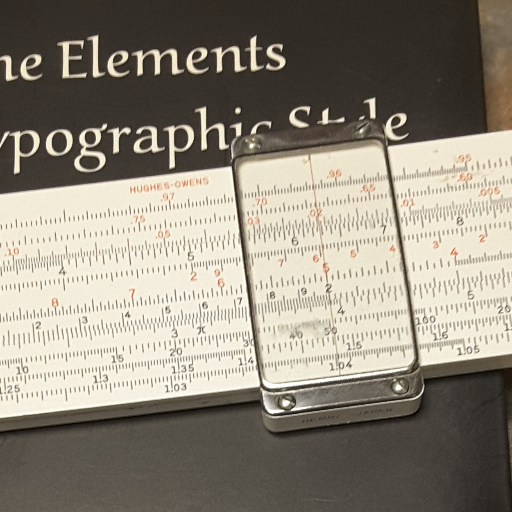
| 2022
| 2021
| 2020
| 2019
| 2018
|
Mon Dec 31 18:20:59 +0000 2018@InklessPW That man can say nothing about anything.
Mon Dec 31 17:26:31 +0000 2018However a reasonable hypothesis is that the shorter (mitochondrial) form is actually made from a different splice variant, ENSP00000355740: 111-595
Mon Dec 31 16:37:05 +0000 2018DO NOT confuse the Montreal-based Canadian Supercluster SCALE.AI with the San Francisco based company 'Scale Inc.' that has the domain name 🔗
Mon Dec 31 16:28:40 +0000 2018COQ8A:p, coenzyme Q8A (H. sapiens) 🔗 Midsized protein; no PTMs other than A2+acetyl; observed in two forms: 2-647 and 163-647 [12,398 x] 🔗
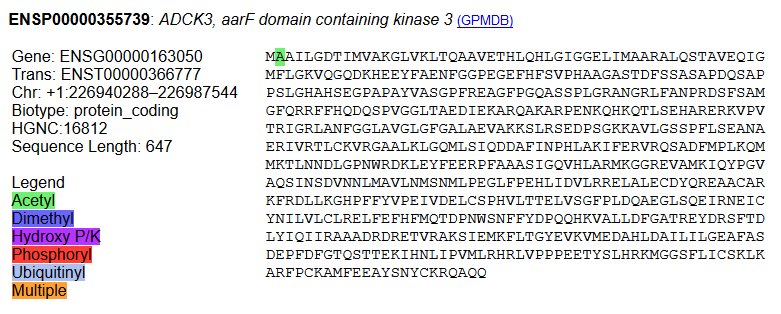
Mon Dec 31 16:10:18 +0000 2018This link (the "Learn more" button) on the homepage for SCALE AI pretty much says it all for the Canadian Supercluster scheme: 🔗
Sun Dec 30 16:04:24 +0000 2018Observed peptides are red bars (the darker the red the more confident the observation), difficult-to-observe peptides are green bars and peptides containing potential N-linked glycosylation are cyan bars.
Sun Dec 30 16:01:16 +0000 2018#SpotTheBiomarker The coverage diagram attached shows the observed peptides in tumour (top) and normal (bottom) tissue for the same protein subunit. Can you spot any potential biomarkers? 🔗
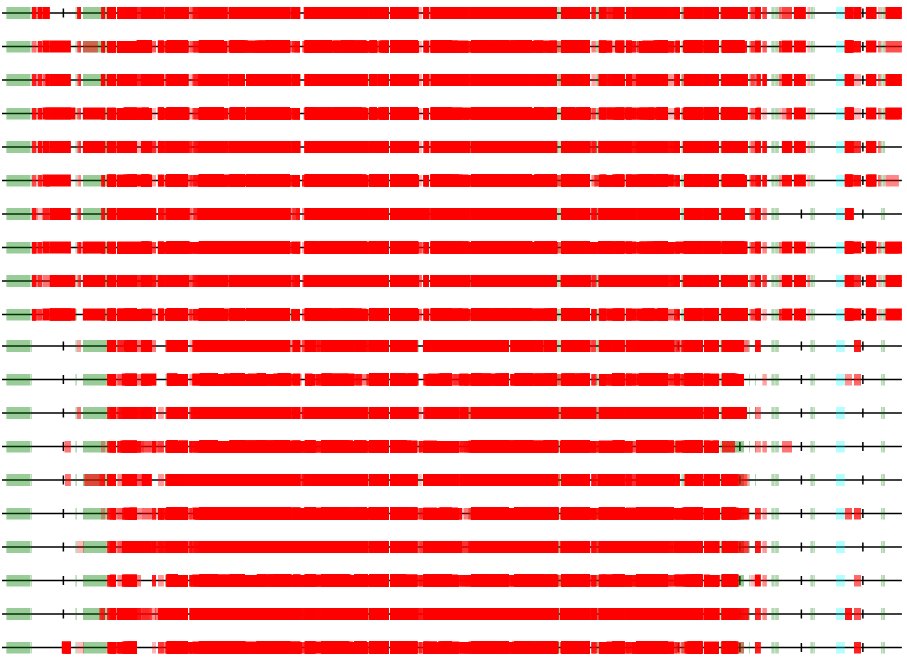
Sat Dec 29 15:07:38 +0000 2018Fortunately, the "blah-blah"-box gene/protein naming craze seems to have been over for a while. But at one time it was the Von Dutch hat of gene naming fashions.
Sat Dec 29 15:01:49 +0000 2018DDX1:p, DEAD-box helicase 1 (H. sapiens) 🔗 Midsized intracellular protein; highly modified; S481+phosphoryl is the most occupied acceptor site; very commonly observed in tissue cells (except erythrocytes) and cell lines [39,234 x] 🔗
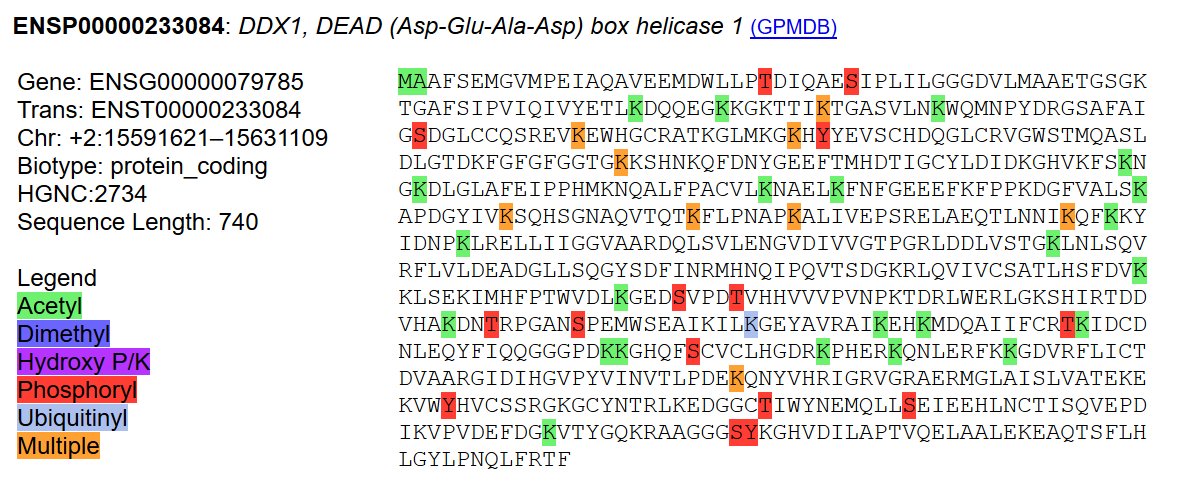
Fri Dec 28 15:49:14 +0000 2018In a saner world, this gene would be called FRAS2.
Fri Dec 28 15:47:54 +0000 2018FREM2:p, FRAS1 related extracellular matrix protein 2 (H. sapiens) 🔗 Very large extracellular protein; evidence for N2121+glycosyl but no other PTMs; most commonly observed in urine & MCF7 cells; mature form 47-3169 [2,191 x]
Thu Dec 27 15:40:11 +0000 2018FRAS1:p, Fraser extracellular matrix complex subunit 1 (H. sapiens) 🔗 Very large extracellular glycoprotein; good evidence for N-linked glycosylation; may be observed (but rarely) in common cell lines; mature form 27-4012 [1,635 x]
Wed Dec 26 16:04:03 +0000 2018ECM1:p, extracellular matrix protein 1 (H. sapiens) 🔗 Midsized extracellular glycoprotein; good evidence for N-linked and O-linked glycosylation; may be observed in common cell lines; mature form 20,21,22-540 [13,047 x]
Tue Dec 25 14:41:57 +0000 2018COL1A2:p, collagen type I alpha 2 chain (H. sapiens) 🔗 Large extracellular protein subunit, 2nd most abundant subunit by mass in the human body but not present in most cell cultures [32,945 x] 🔗
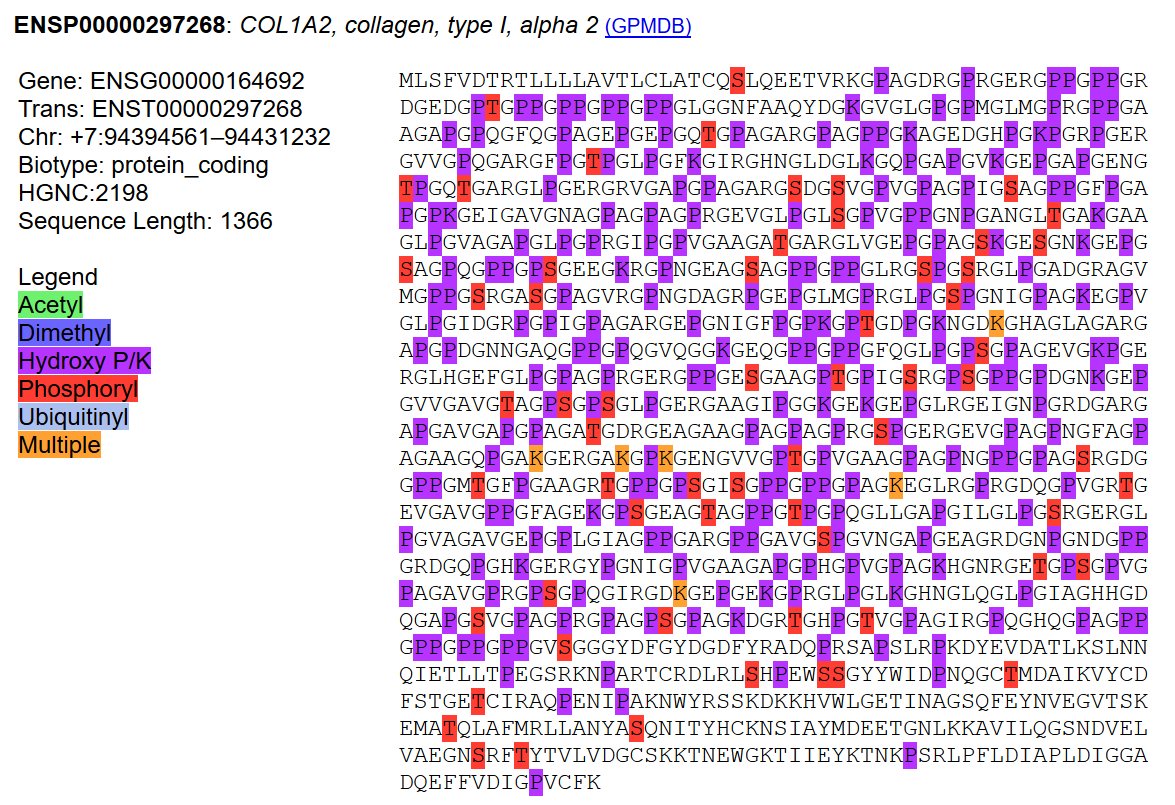
Mon Dec 24 18:06:09 +0000 2018COL1A1:p, collagen type I alpha 1 chain (H. sapiens) 🔗 Large extracellular protein subunit, most abundant subunit by mass in the human body but not present in most cell cultures [40,868 x] 🔗
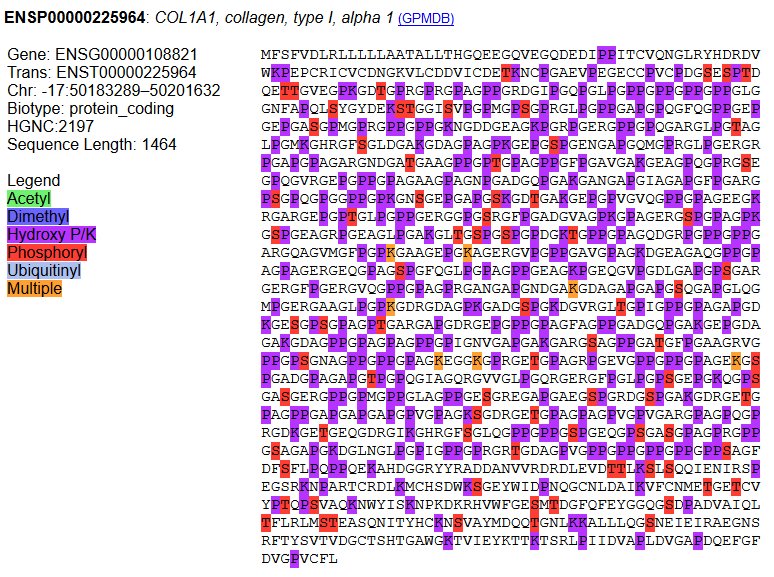
Mon Dec 24 16:48:37 +0000 2018Going through the logs it may actually be a web crawler that blew through the robots.txt warning.
Mon Dec 24 16:09:39 +0000 2018This sort of nonsense happens every holiday season. 🌲
Mon Dec 24 16:07:03 +0000 2018My Xmas gift seems to be someone running a denial-of-service attack against GPMDB. I suspect they are just doing something silly with the API, like trying to run too many parallel queries, but it has the same effect.
Sun Dec 23 18:28:52 +0000 2018AMELY:p, amelogenin Y-linked (H. sapiens) 🔗 Small protein, only found in tooth enamel [58 x]: the 4th version of amelogenin occurring in males
Sun Dec 23 18:06:37 +0000 2018@AlexUsherHESA Drone sightings may be entending the weird world of UK cryptobiology to cryptotechnology, e.g. 🔗
Sat Dec 22 14:33:37 +0000 2018AMELX:p, amelogenin X-linked (H. sapiens) 🔗 Small protein, only found in tooth enamel [56 x]: #3 of 3 splice variants of this gene commonly observed
Fri Dec 21 17:29:54 +0000 2018Because data files are not considered to be creative works, once they are made public there are few, if any, legal restrictions on how they may be used.
Fri Dec 21 13:43:25 +0000 2018AMELX:p, amelogenin X-linked (H. sapiens) 🔗 Small protein, only found in tooth enamel [77 x]: #2 of 3 splice variants of this gene commonly observed
Thu Dec 20 17:21:28 +0000 2018Instrument-generated raw data files made available on public data repositories are protected by
Thu Dec 20 17:16:49 +0000 2018Many thanks to @umbut for his valuable commentary on the implications of Bayh-Dole for university-based federally funded research in the US.
Thu Dec 20 13:50:24 +0000 2018AMELX:p, amelogenin X-linked (H. sapiens) 🔗 Small protein, only found in tooth enamel [57 x]: #1 of 3 splice variants of this gene commonly observed
Wed Dec 19 18:00:09 +0000 2018@umbut I know several prominent (and influential) scientists who have insisted for years that the reason they don't make data public is Bayh-Dole, against all arguments to the contrary.
Wed Dec 19 17:01:33 +0000 2018How does the Bayh-Dole Act (the US law dealing with IP arising from federal government-funded research, e.g., NIH & NSF grants) deal with the submission of raw data to public repositories?
Wed Dec 19 15:34:09 +0000 2018@InklessPW Good column in retrospect. The supercluster launches seem to have bellyflopped so far. The Regina guys are the most earnest. The TO, Montreal & Halifax operations seem to be "virtual". The Van group looks more concrete, but predictably whimsical.
Wed Dec 19 14:00:45 +0000 2018TUFT1:p, tuftelin 1 (H. sapiens) 🔗 Small protein, found in thorough studies of common cell lines [2,428 x]: thought to be an enamel protein, but never observed in enamel tissue 🔗
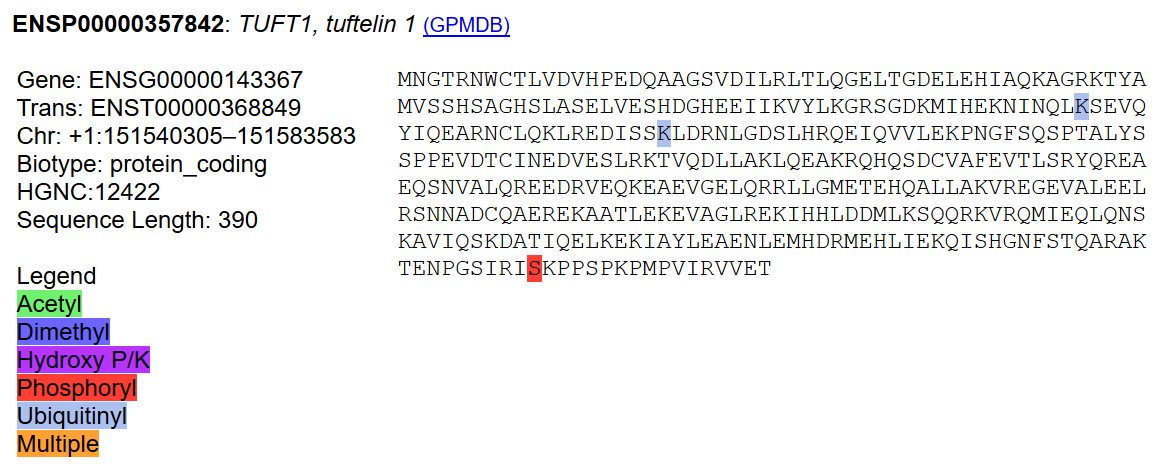
Tue Dec 18 18:15:52 +0000 2018Question: If you have obtained a patent based on evidence from your own research, should it be possible to use as "prior art" similar evidence discovered by reanalyzing public raw data that predates your patent, invalidating your claims?
Tue Dec 18 17:06:25 +0000 2018@pwilmarth If public raw data cannot be used to generate IP, then its value as a driver for anything ending up in a clinical setting is going to be very limited.
Tue Dec 18 17:03:56 +0000 2018@pwilmarth The practical issue is that for any drug or biotech company to utilize a discovery, they must be able to claim IP that allows them a chance to defray the very high cost of moving a discovery all the way to the clinic.
Tue Dec 18 16:34:09 +0000 2018I guess very few people are interested in this type of question. I view it as fundamental to data reuse in biomedical research.
Tue Dec 18 16:11:32 +0000 2018@lukas_k After many years of reanalyzing datasets, I am still surprised how often the experimental methods described in a paper are not even a good place to start when trying to analyze the corresponding data.
Tue Dec 18 15:25:27 +0000 2018MMP20:p, matrix metallopeptidase 20 (H. sapiens) 🔗 Small protease, only observed in tooth enamel [82 x]: probably responsible for the extensive protein cleavage found in enamel samples
Mon Dec 17 18:27:54 +0000 2018@IRPP @KaiHsinHung @internetrights I don't agree with the authors, but it was interesting to read.
Mon Dec 17 17:33:51 +0000 2018After a year of running almost everything on Ryzen 1950 processors, I'm running something on an I7 and it is like watching paint dry.
Mon Dec 17 16:23:34 +0000 2018Question: If I discover something patentable from examining a large number of public data sets that was not apparent to any of the groups that generated the data, do those groups have any claim on the IP?
Mon Dec 17 14:35:17 +0000 2018AMBN:p, ameloblastin (H. sapiens) 🔗 Small protein, only observed in tooth enamel [99 x]: one of the few non-collagen proteins with hydroxyproline PTMs 🔗
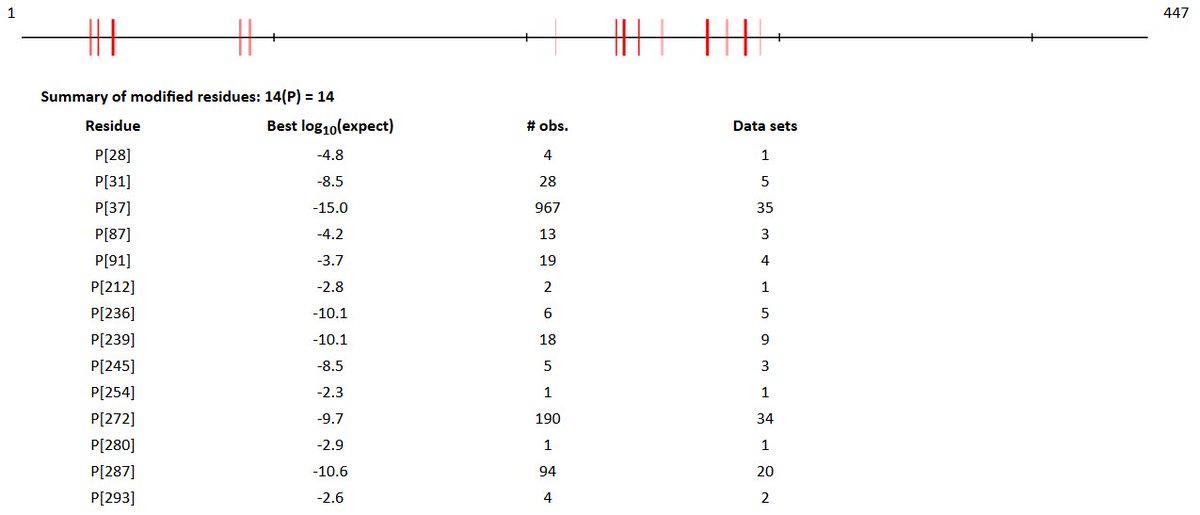
Sun Dec 16 15:21:45 +0000 2018ENAM:p, enamelin (H. sapiens) 🔗 Large protein, observed in tooth enamel [269 x]: the pattern of observed peptides generates more questions than answers 🔗
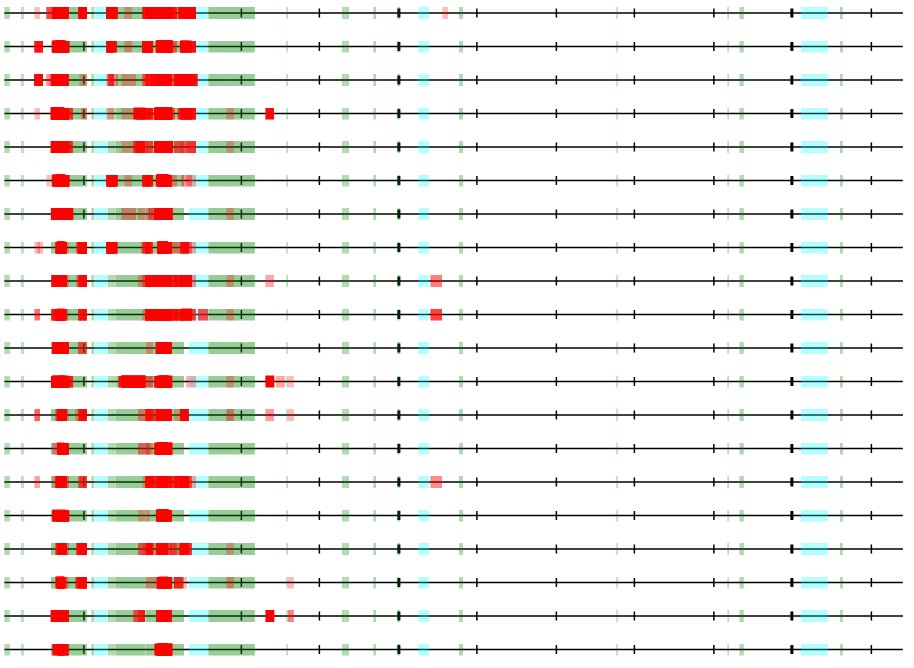
Sat Dec 15 14:16:52 +0000 2018SLC26A2:p, solute carrier family 26 member 2 (H. sapiens) 🔗 Midsized intrinsic membrane glycoprotein, observed in colon tissues, urine, feces and some common cell lines [3,009 x], with a short N-terminal phospho-domain 🔗
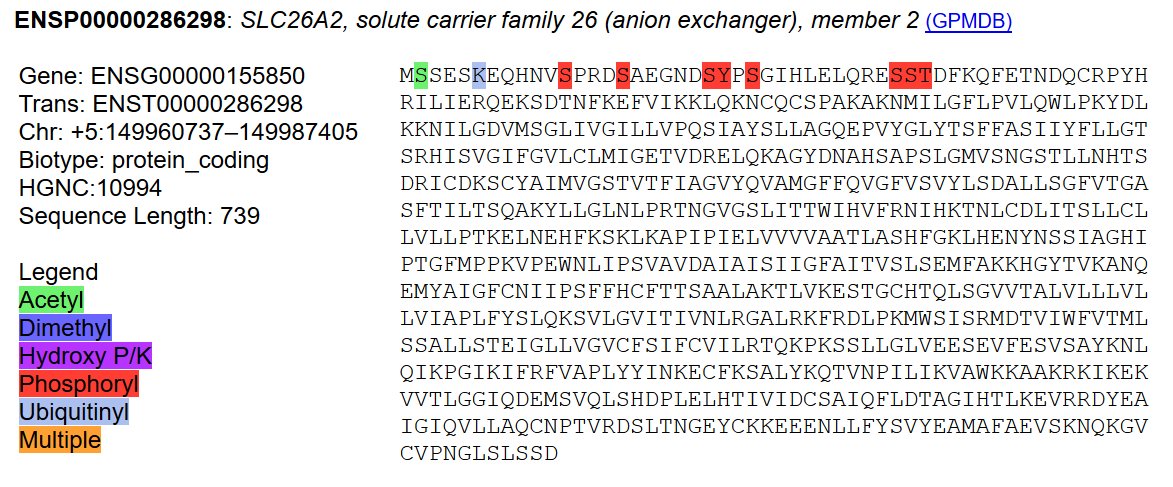
Fri Dec 14 15:42:48 +0000 2018SLC26A3:p, solute carrier family 26 member 3 (H. sapiens) 🔗 Midsized intrinsic membrane protein, commonly observed in colon tissues, feces & spermatazoon [802 x], even though it may have as many as 10 membrane spanning domains
Thu Dec 13 15:55:55 +0000 2018It also has 2 SAVs commonly observed in proteomics experiments:
ENSP00000383563:p.G32S & ENSP00000383563:p.S162T
Thu Dec 13 13:33:04 +0000 2018ZG16:p, zymogen granule protein 16 (H. sapiens) 🔗 Small secreted lectin, the mature form (18-167, unknown function) frequently observed in feces and colon tissue, occasionally present in urine [1,410 x]
Wed Dec 12 15:50:16 +0000 2018Almost certainly an unrecognized type of digestive enzyme. Also observed in the gut cavity of mice and rats.
Wed Dec 12 13:42:24 +0000 2018CUZD1:p, CUB and zona pellucida like domains 1 (H. sapiens) 🔗 Midsized secreted pancreatic glycoprotein, the mature form (23-607, unknown function) frequently observed in feces [457 x]
Tue Dec 11 21:25:30 +0000 2018No matter how often I see it, I am still surprised by how consistent MHC Class I & II peptides are from study to study.
Tue Dec 11 21:20:13 +0000 2018@jessehirsh @juliapowles 🔗
Tue Dec 11 13:56:31 +0000 2018MEP1B:p, meprin A subunit beta (H. sapiens) 🔗 Midsized secreted glycoprotein, the mature form (62-701) is prominent in feces, colon and colon-derived cell lines [398 x]
Mon Dec 10 20:45:02 +0000 2018@ypriverol @pwilmarth I don't do any tracking of users any more. One of the advantages of not having to report to anyone.
Mon Dec 10 20:08:42 +0000 2018@ypriverol @pwilmarth You also might want to sugar-coat the 'data generation is dying' idea when talking to people who make a living generating data 😀. Give them some examples of how using existing information can assist in data generation.
Mon Dec 10 14:18:20 +0000 2018MEP1A:p, meprin A subunit alpha (H. sapiens) 🔗 Midsized secreted glycoprotein, prominent in feces, colon and colon-derived cell lines [1,585 x]
Sun Dec 09 17:46:12 +0000 2018@Smith_Chem_Wisc Enamel also has 3 prominent, easily distinguished splice variants of the small protein AMELX + a 4th version, AMELY, when available, so I guess I should add transcriptional variants as part of the enamel-construction playbook.
Sun Dec 09 17:28:01 +0000 2018@Smith_Chem_Wisc Your results suggest that the peculiar physical properties of the tissue aren't the result of a novel PTM, but a clever use of COL1, known PTMs + a few proteins that are only present in enamel.
Sun Dec 09 17:24:19 +0000 2018@Smith_Chem_Wisc I was interested in whether the open search method would find something significant that I was missing. Enamel is a weird sort of tissue, with relatively old proteins, lots of PTMs, including proteinease cleavages and protein-protein non-cystine cross-links.
Sun Dec 09 14:14:33 +0000 2018CLPS:p, colipase (H. sapiens) 🔗 Small secreted co-enzyme, the mature form (23-112) is prominent in feces and pancreas tissue [418 x]
Sat Dec 08 14:53:59 +0000 2018MME:p, membrane metalloendopeptidase (H. sapiens) 🔗 Midsized glyco-phosphoprotein, abundant in feces, urine and seminal plasma [7,809 x] It is unknown how this protein is secreted. 🔗
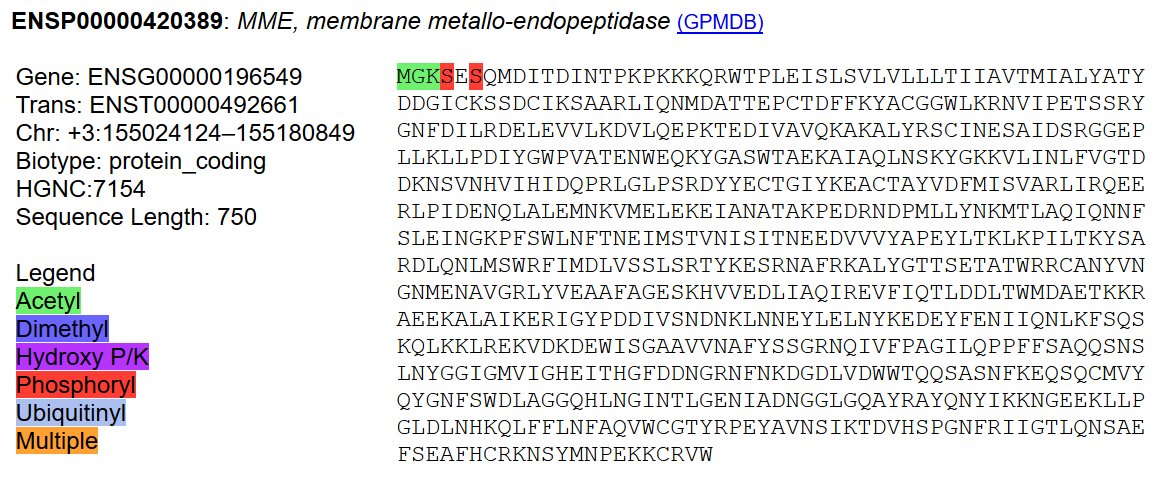
Fri Dec 07 17:43:11 +0000 2018@dtabb73 Cape dune mole-rat, Cape golden mole, Cape mole-rat ... come on, we need details!
Fri Dec 07 14:01:06 +0000 2018ASAH2:p, N-acylsphingosine amidohydrolase 2 (H. sapiens) 🔗 Midsized glycoprotein, the soluble form of this enzyme (99-780) is abundant in feces and the intestinal mucosa [487 x] #proteomics
Thu Dec 06 21:16:56 +0000 2018Finally! 🔗
Thu Dec 06 19:01:38 +0000 2018This SAV is also homozygous in HeLa, JURKAT, HEK-293, U2-OS, A-431 and MCF-7 cell lines.
Thu Dec 06 18:54:02 +0000 2018ENSP00000361883:p.S256A (aka Q01518-1:p.S256A) is a good SAV to use when testing for variant finding. The variant form is > 97% of the population and CAP1 is a very commonly observed, abundant protein.
Thu Dec 06 18:34:22 +0000 2018For example, the data in '07142017 JY24.raw' or '07142017 JY25.raw'.
Thu Dec 06 18:33:06 +0000 2018#PXD009781 has genuinely good data, but the samples are really tricky things to model accurately. I would be interested to see what an "open" search engine would do with this sort of data
Thu Dec 06 15:45:14 +0000 2018The distinctive tissue distribution of this protein suggests that the current understanding of its function probably doesn't tell the whole story.
Thu Dec 06 14:22:09 +0000 2018DPEP1:p, dipeptidase 1 (H. sapiens) 🔗 Small glycoprotein, the mature form (17-411) is prominent in fecal and urine samples & some tissues, e.g., kidney, colon and testis [4,528 x] #proteomics
Wed Dec 05 19:00:13 +0000 2018#PXD007662 is a really well done: one of the best data sets I've seen. It shows how to design and execute an experiment for the reliable detection of SAVs.
Wed Dec 05 13:47:38 +0000 2018ENPP7:p, ectonucleotide pyrophosphatase/phosphodiesterase 7 (H. sapiens) 🔗 Small glycoprotein, the mature form (22-458) may be prominent in fecal, colon and urine samples [1,808 x] #proteomics
Tue Dec 04 17:26:38 +0000 2018I am pretty leery about the significance of these results 🔗 Finding bovine caseins and lactoglobulin as lab-contamination-derived artifacts in proteomics samples is quite common.
Tue Dec 04 14:03:26 +0000 2018CTRC:p, chymotrypsin C (H. sapiens) 🔗 Small unmodified protein, produced in the pancreas as a zymogen, the mature protein (30-268) is commonly observed in fecal samples [690 x] #proteomics
Mon Dec 03 20:15:34 +0000 2018Not quite. I'm looking for something that predicts the length of a mitochondrial targeting peptide: 10-70 AAs on a protein's N-terminus that allows it to enter a mitochondria from the cytoplasm, which is cleaved from the protein while it is being imported. 🔗
Mon Dec 03 16:45:47 +0000 2018What is the best algorithms/web sites for the prediction of mitochondrial targeting peptides for human proteins? #proteomics
Mon Dec 03 13:52:38 +0000 2018CELA3A:p, chymotrypsin like elastase family member 3A (H. sapiens) 🔗 Small protein, produced in the pancreas as a zymogen (18-,19-, and 20-270), the mature protein (29-270) is commonly observed in fecal samples [1,121 x]
Sun Dec 02 18:25:29 +0000 2018@dabeaz I would, however, suggest that there is value in trying to tackle the problems of creating something that can be installed: it leads you to a new appreciation of how platforms work. But doing it more than once or twice is a distraction for performing research.
Sun Dec 02 17:16:58 +0000 2018@dabeaz I have to agree with your general position. Trying to produce software that can be installed and used by others unwilling to develop their own technical expertise does get in the way of developing implementations to solve scientific problems.
Sun Dec 02 14:11:04 +0000 2018Cell surface protein (Bacteroides vulgatus) 🔗| Midsized, easily observed protein in human feces, characteristic of the presence of B. vulgatus [97x]. Observed pattern of sequence coverage attached. 🔗
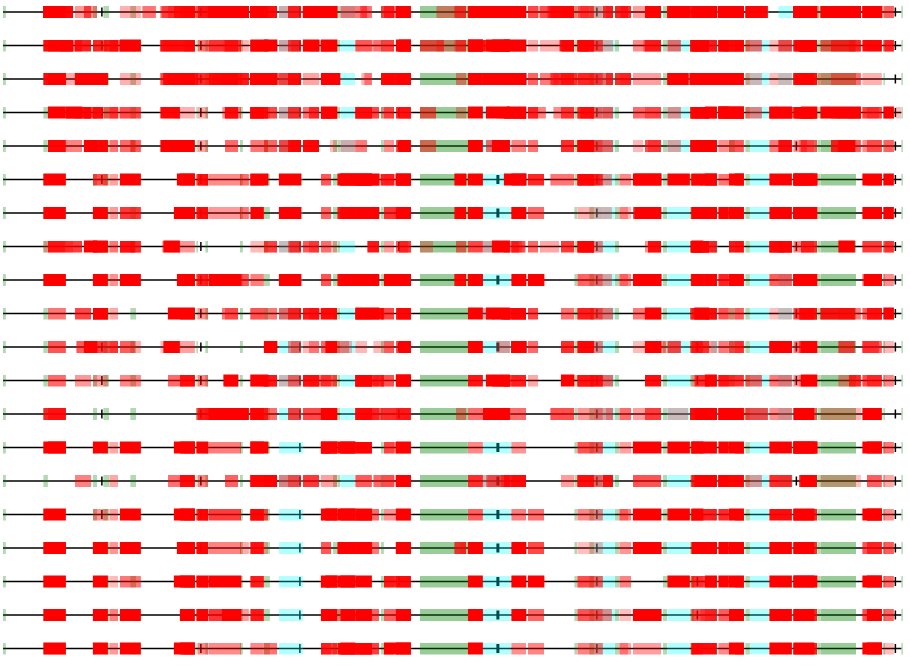
Sat Dec 01 14:37:39 +0000 2018This protein puts the "T" into HEK293T. If it is present in a sample from a cell line, check for HEK293T contamination or an error that has resulted in the substitution of HEK293T for the desired cell line.
Sat Dec 01 14:34:45 +0000 2018Large T antigen (Simian virus 4) 🔗 Midsized protein, commonly observed in some cell lines, where the gene has been inserted either to aid cell transformation or to improve recombinant protein production [1,626x]
Fri Nov 30 13:37:43 +0000 2018TMSB15A:p, thymosin beta 15a (H. sapiens) 🔗 Very small (45 aa) protein, a rarely observed thymosin, with 2 copies of the gene (15A and 15B) on the X chromosome [1,440x] #proteomics 🔗
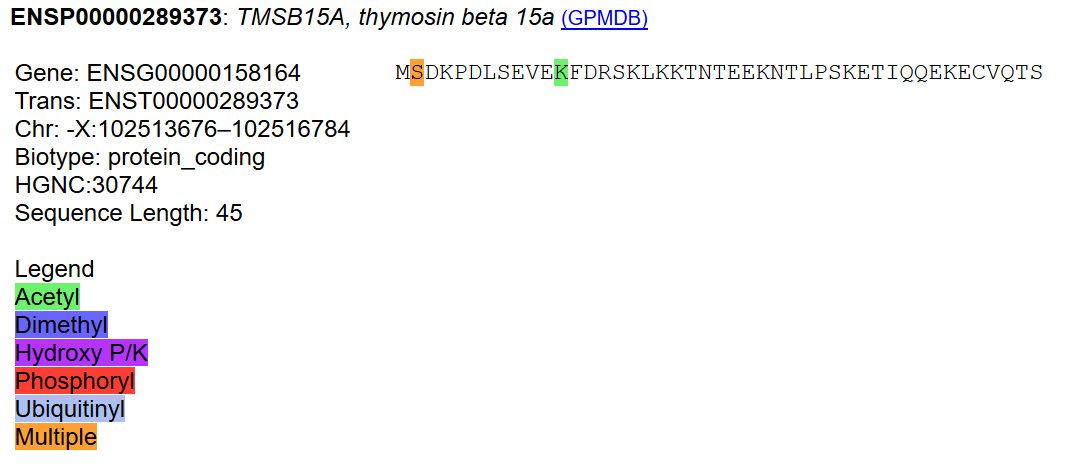
Thu Nov 29 16:36:27 +0000 2018The proposed function for the protein seems very unlikely, based on the proteomics data. The N-terminus of the mature protein is ragged, but the main species is 2-44, with TMSB10:pm.A2+acetylation
Thu Nov 29 15:45:59 +0000 2018TMSB10:p, thymosin beta 10 (H. sapiens) 🔗 Very small (44 aa) highly modified protein, common in almost all cell types, with the exception of erythrocytes and spermatozoa [23,782x] #proteomics 🔗
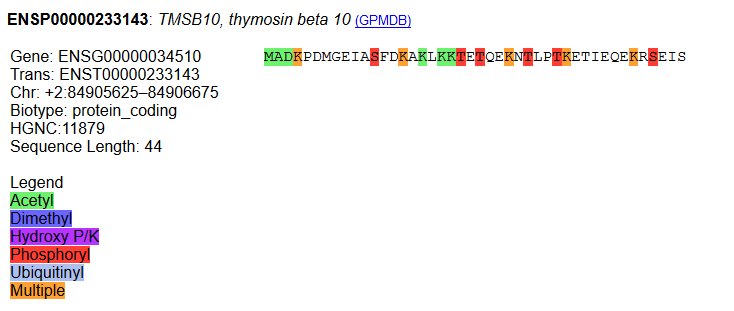
Wed Nov 28 15:38:42 +0000 2018North American weather looks pretty messy this morning 🔗
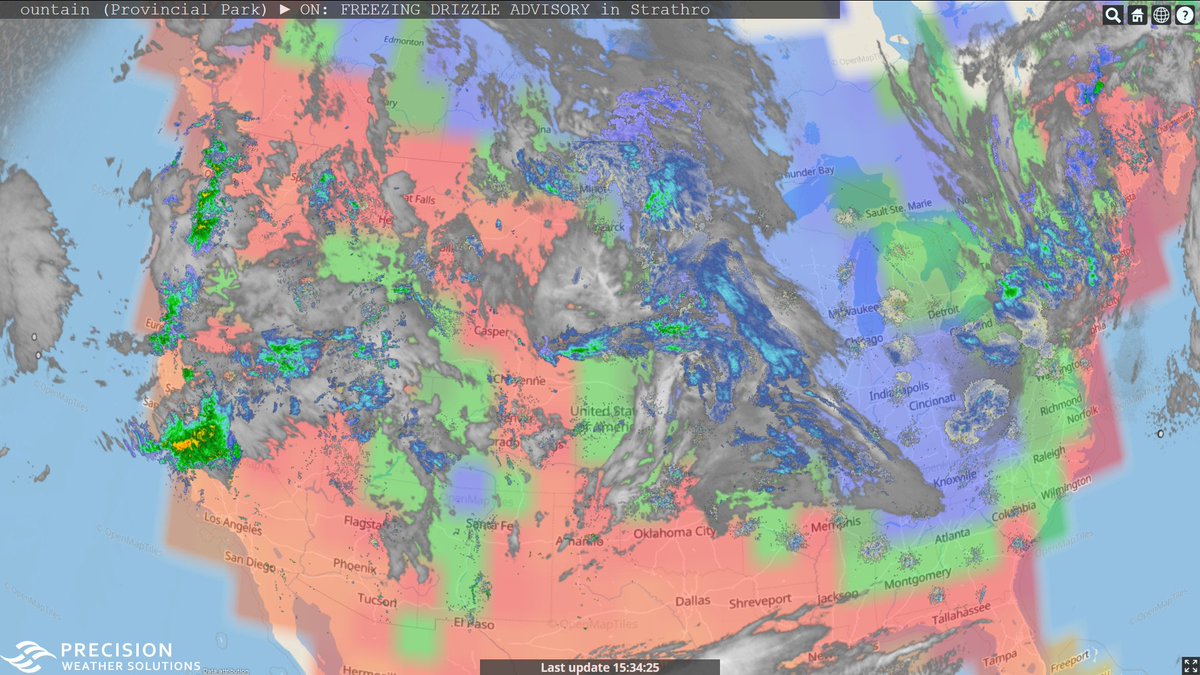
Wed Nov 28 14:11:27 +0000 2018ATP5MF:p, ATP synthase, H+ transporting, mitochondrial Fo complex subunit F2 (H. sapiens) 🔗 Very small (94 aa) mitochondrial protein subunit, commonly found in most tissues and cell lines [23,403x] #proteomics 🔗
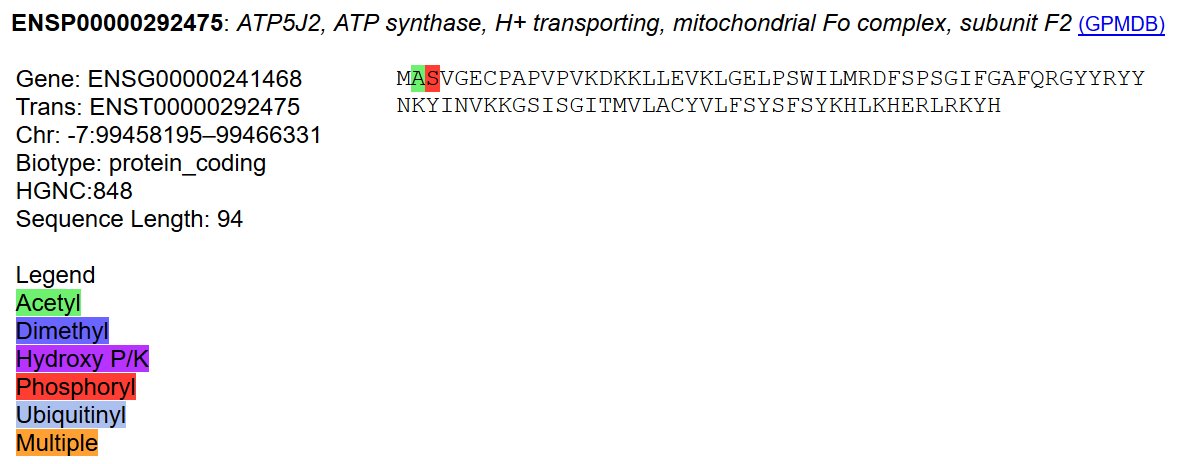
Tue Nov 27 15:49:57 +0000 2018@AlexUsherHESA Excluding Rhodes scholars?
Tue Nov 27 15:48:39 +0000 2018@NatureNews How is this new? It has been going on (in the US and Europe) since I was a post-doc back in the '80s.
Tue Nov 27 14:00:04 +0000 2018ATP5E:p, ATP synthase F1 subunit epsilon (H. sapiens) 🔗 Very small (51 aa) mitochondrial protein subunit, commonly found in most tissues and cell lines [5,030x] 🔗
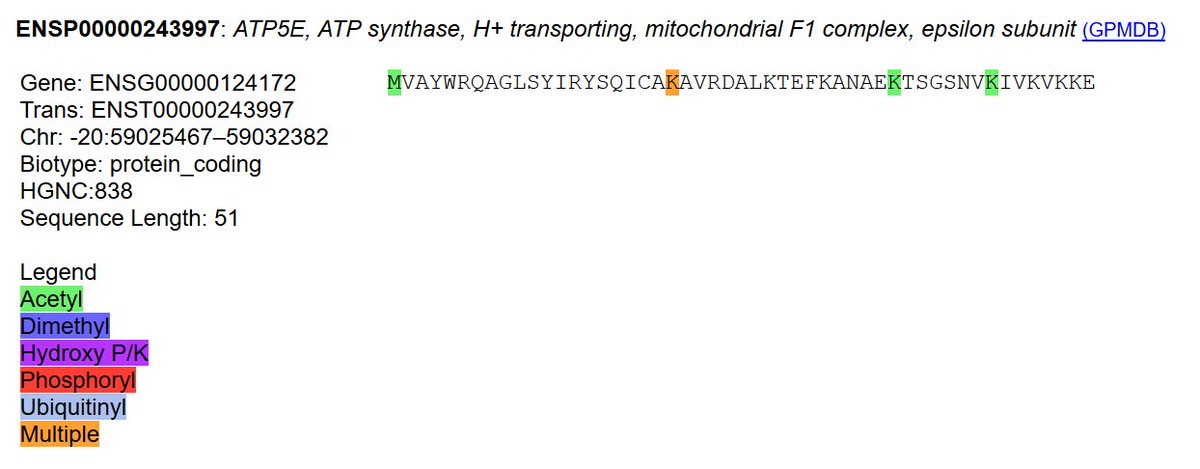
Mon Nov 26 19:31:24 +0000 2018A piece on the GM restructuring plans, without the Canadian-style "sky is falling" chauvinist panicky reactions (even though they are mentioned) 🔗
Mon Nov 26 16:21:21 +0000 2018TMSB4X is also prominent in S/T phosphorylation, K-acetylation and K-ubiquitinylation affinity purification studies.
Mon Nov 26 16:19:15 +0000 2018The TMSB4X signals are a good test for experimental bias against small proteins in proteomics sample preparation methods.
Mon Nov 26 16:14:31 +0000 2018TMSB4X:p, thymosin beta 4, X-linked (H. sapiens) 🔗 Very small (44 aa), highly modified protein, commonly found in most tissues and cell lines [26,944x] 🔗
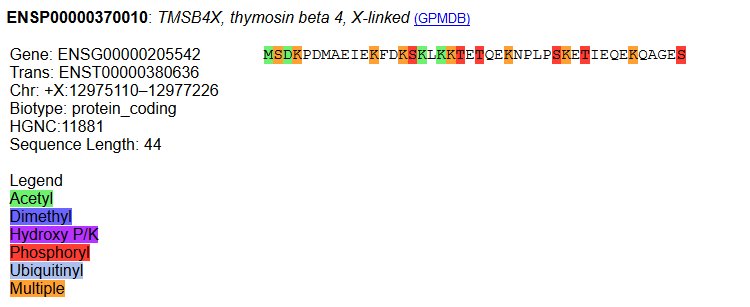
Sun Nov 25 19:58:20 +0000 2018I have to admit that bioRxiv has joined the top tier of publication sites for proteomics when it comes to overall data quality.
Sun Nov 25 14:48:38 +0000 2018fdnG:p, formate dehydrogenase-O major subunit (P. aeruginosa PAO1) 🔗| Large redox enzyme subunit, contains the rare, RNA-encoded amino acid residue selenocysteine (U) [397x] 🔗
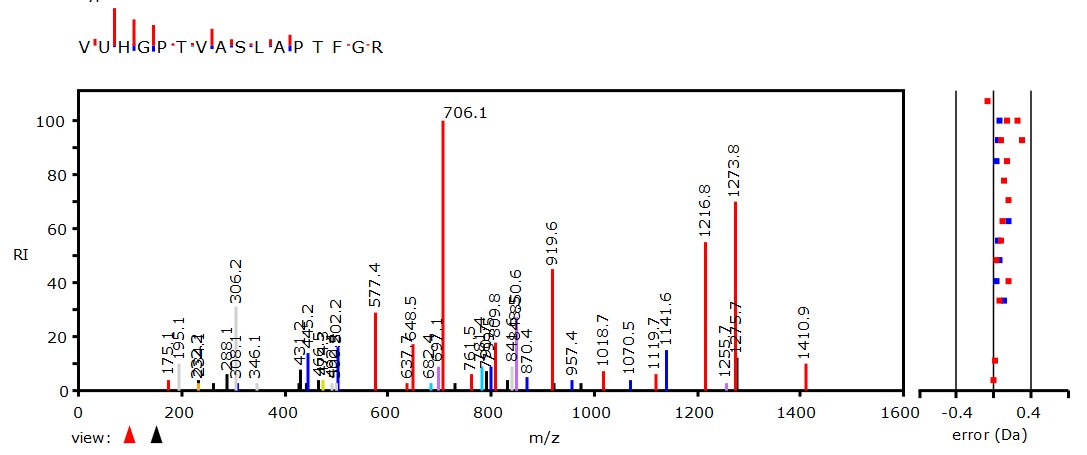
Sat Nov 24 14:54:10 +0000 2018rpoB:p, DNA-directed RNA polymerase subunit beta (P. aeruginosa) 🔗| Large enzyme subunit, easily detected in urine of patients with P. aeruginosa UTIs [930x]. Diagram is for observations in clinical urine samples. 🔗
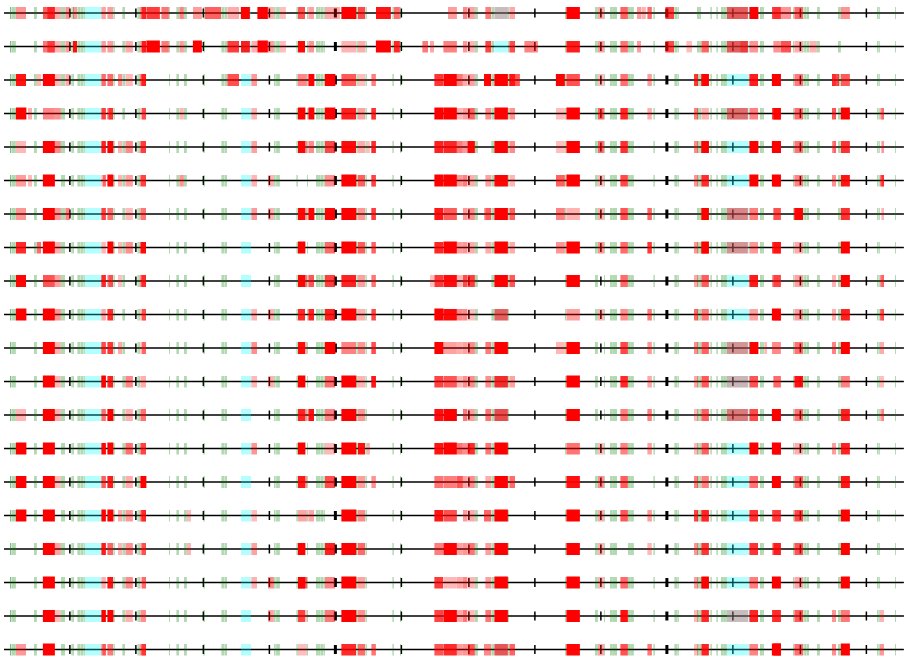
Fri Nov 23 13:52:22 +0000 2018AACS:p, acetoacetyl-CoA synthetase (H. sapiens) 🔗 Midsized cytoplasmic enzyme subunit, unmodifed except for the removal of the initiator M and subsequent N-terminal acetylation [8,136x] 🔗
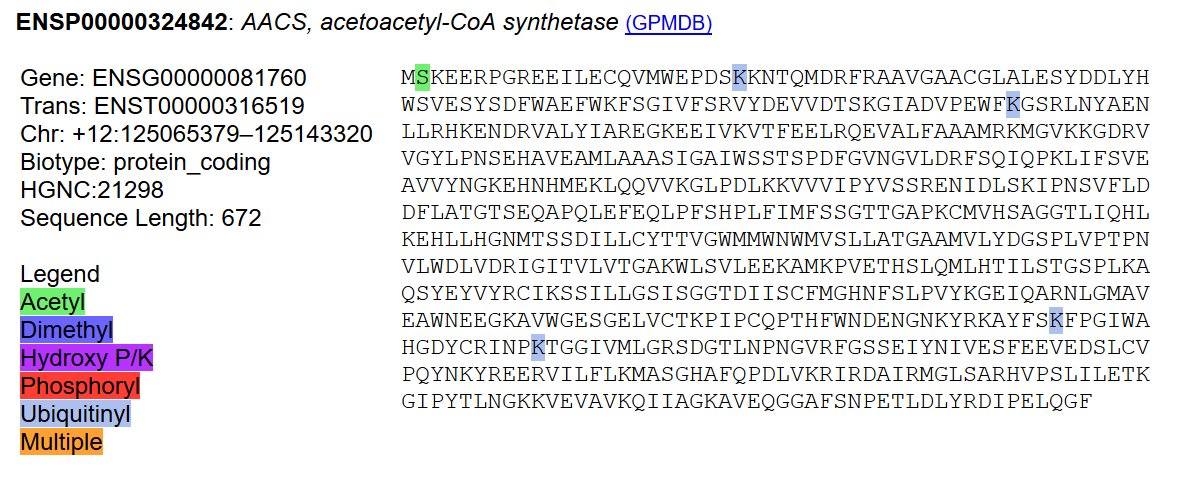
Thu Nov 22 18:13:00 +0000 2018Champalou Vouvray 2016 (Chenin Blanc) - good flavour and aroma, perfect for pairing with Hawkins Cheezies
Thu Nov 22 14:06:52 +0000 2018HMGCS1:p, 3-hydroxy-3-methylglutaryl-CoA synthase 1 (H. sapiens) 🔗 Midsized cytoplasmic enzyme subunit, with a PTM pattern that is strikingly different from the mitochondrial version of HMGCS [20,278x] 🔗
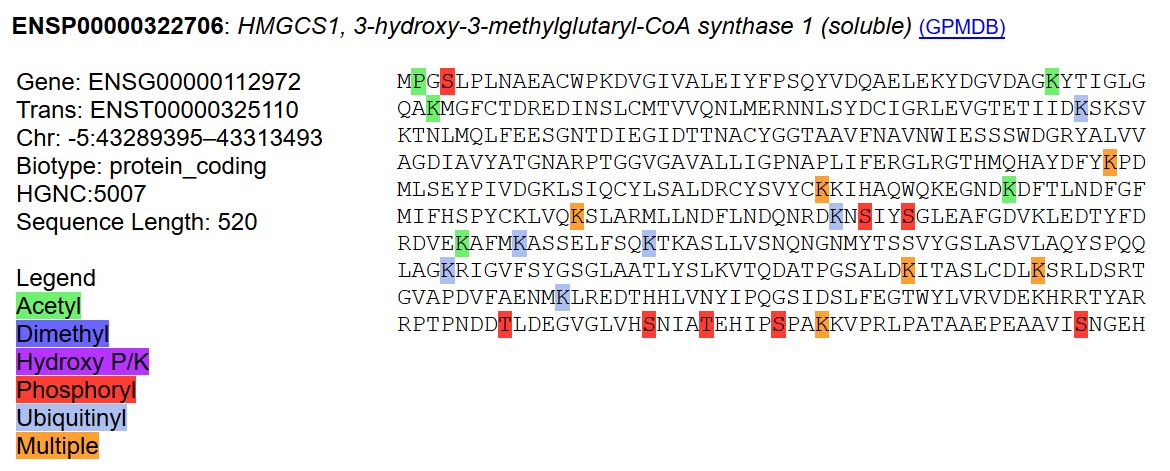
Wed Nov 21 13:57:43 +0000 2018HMGCS2:p, 3-hydroxy-3-methylglutaryl-CoA synthase 2 (H. sapiens) 🔗 Midsized enzyme subunit, normally unmodified, mitochondrial targeting sequence 1-36 [8,628x] 🔗
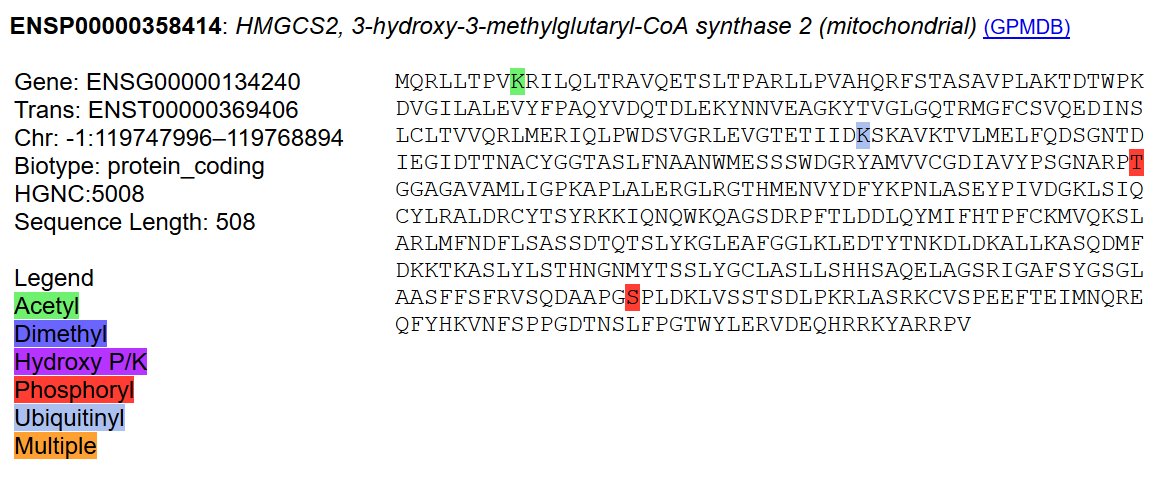
Tue Nov 20 20:22:09 +0000 2018E. coli is the most likely cause of bladder infections in humans & it is usually present at some level in urine. Anyone catheterized in a hospital is at high risk of developing a significant P. aeruginosa infection within a few days.
Tue Nov 20 20:16:27 +0000 2018When analyzing human urine proteomics data for any reason, you should include these bacterial proteomes in your sequence search space:
Escherichia coli;
Pseudomonas aeruginosa;
Klebsiella pneumoniae;
Proteus mirabilis; &
Enterococcus faecalis
Tue Nov 20 19:25:09 +0000 2018Strange: I've never seen one of these in Winnipeg 🔗
Tue Nov 20 15:36:56 +0000 2018Left Field Flying Squidmill (Sauvignon Blanc): easy drinking, lots of aroma, won't get lost when paired with strong food flavours.
Tue Nov 20 15:31:43 +0000 2018NOTE: the mitochondrial targeting/transit sequence is incorrectly listed as 1-27 in some sources.
Tue Nov 20 14:08:20 +0000 2018HMGCL:p, 3-hydroxymethyl-3-methylglutaryl-CoA lyase (H. sapiens) 🔗 Small enzyme subunit with 3 observed lysine acetylation sites and a 20 residue mitochondrial targeting sequence [13,675x] 🔗
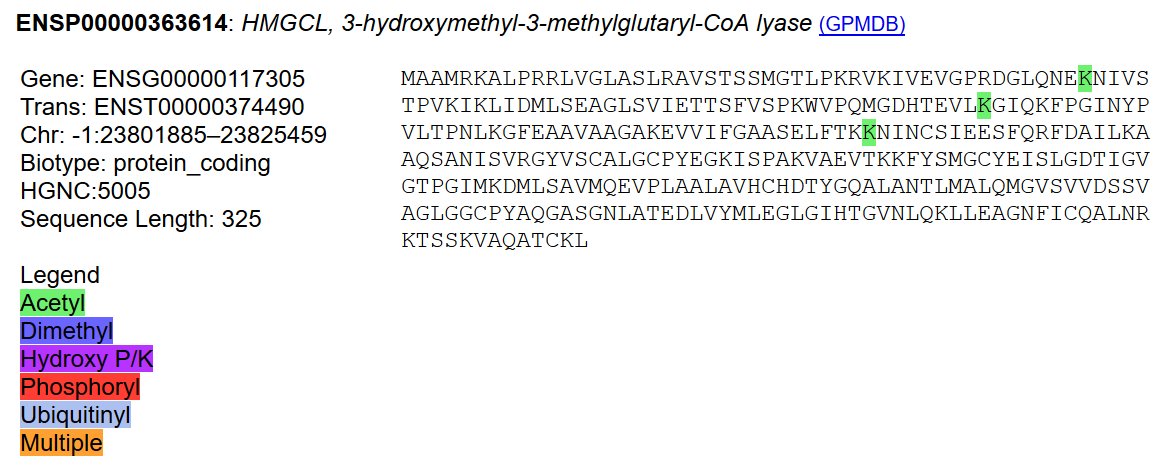
Mon Nov 19 17:43:27 +0000 2018PXD011622 certainly lives up to its stated goal of providing a good sampling of N. meningitidis outer membrane proteins.
Mon Nov 19 13:56:45 +0000 2018AUH:p, AU RNA binding methylglutaconyl-CoA hydratase (H. sapiens) 🔗 Small, normally unmodified enzyme subunit, with a comparatively long (1-67) mitochondrial targeting sequence [4,506x] 🔗
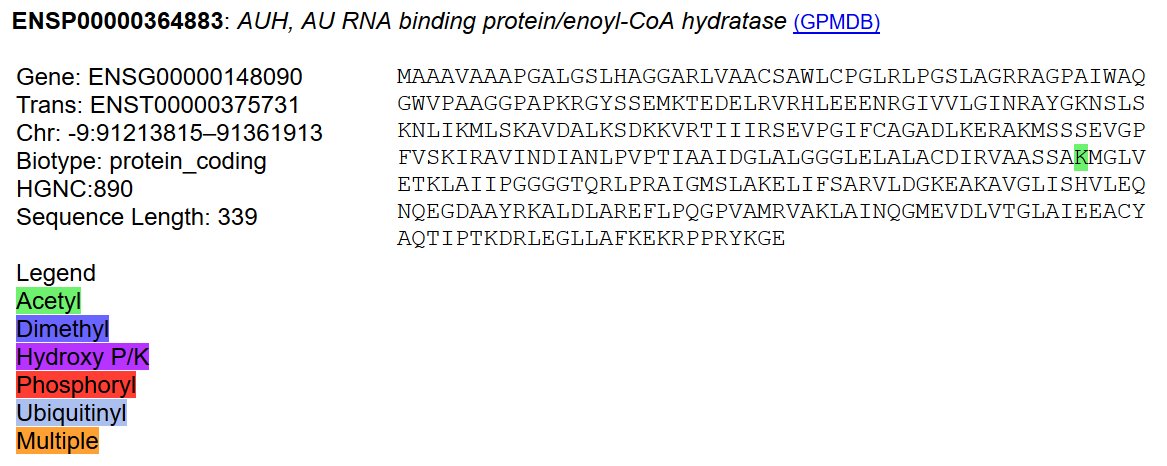
Sun Nov 18 15:36:56 +0000 2018Wasted half-an-hour listening to an interviewer on CBC Radio 1 talking to an "expert" about government use of AI: neither one had any idea what they were talking about, but they were more than happy to talk (& talk & talk)
Sun Nov 18 14:20:19 +0000 2018Nonstructural polyprotein (Cricket paralysis virus) 🔗| Viral polyprotein, contains the virus' replication enzymes, none of which are present in the mature virus particle (7x) 🔗

Sat Nov 17 14:44:27 +0000 2018Structural polyprotein (Cricket paralysis virus) 🔗| Viral polyprotein, contains the sequences of the virus particle's 4 capsid proteins (11x), observed peptide coverage diagram for the 11 measurements attached 🔗
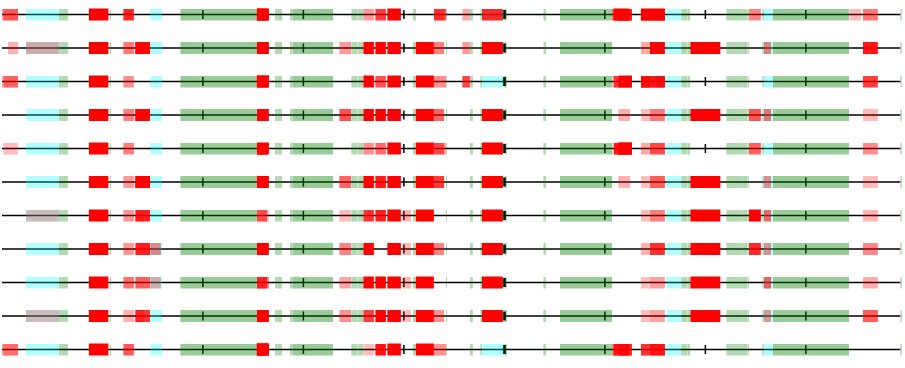
Fri Nov 16 14:03:59 +0000 2018MCCC1 also has a rather long N-terminal mitochondrial targeting sequence (1-70), but the original cytosolic form seems to have the initiator M removed and A2+acetyl so the real targeting sequence is probably 2-70. 🔗
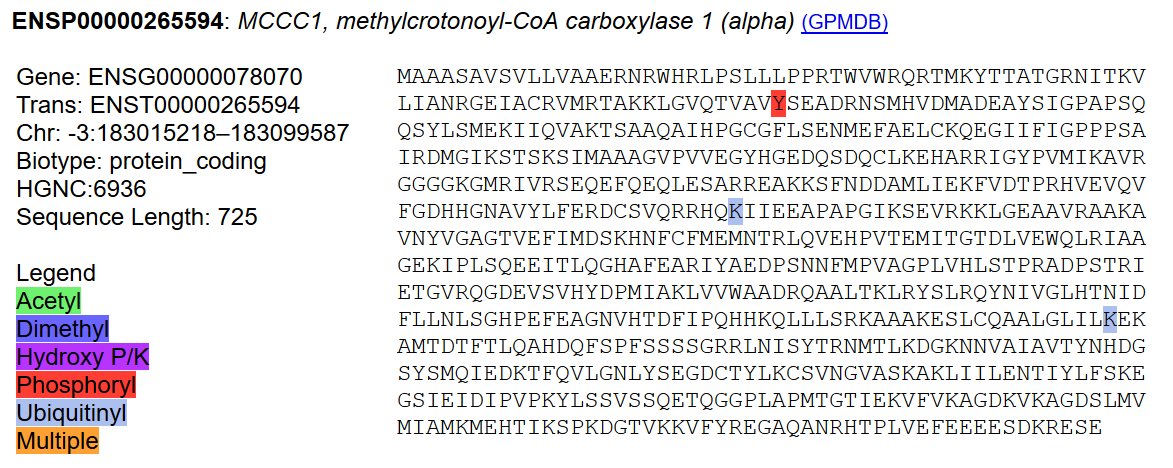
Fri Nov 16 13:57:55 +0000 2018MCCC1:p, methylcrotonoyl-CoA carboxylase 1 (H. sapiens) 🔗 Midsized, normally unmodified metabolic enzyme subunit, forms the active hetero-dodecamer MCC with MCCC2 (19,396x)
Thu Nov 15 22:01:00 +0000 2018It is worth noting that the 22 residue N-terminal mitochondrial targeting domain is absent in the observations of the mature subunit
Thu Nov 15 19:45:02 +0000 2018If anyone seriously believes that these are the best ideas for "innovation" in Canada, we have more and much worse problems than even I thought:
🔗
Thu Nov 15 16:21:51 +0000 2018The circular puffs of radar reflectivity in the green area (0 to -4 C) are ground clutter, not precipitation
Thu Nov 15 16:17:55 +0000 2018The weather is going to be a bit of a mess today along a cold front currently stretching from Chicago to the Atlantic coast. 🔗
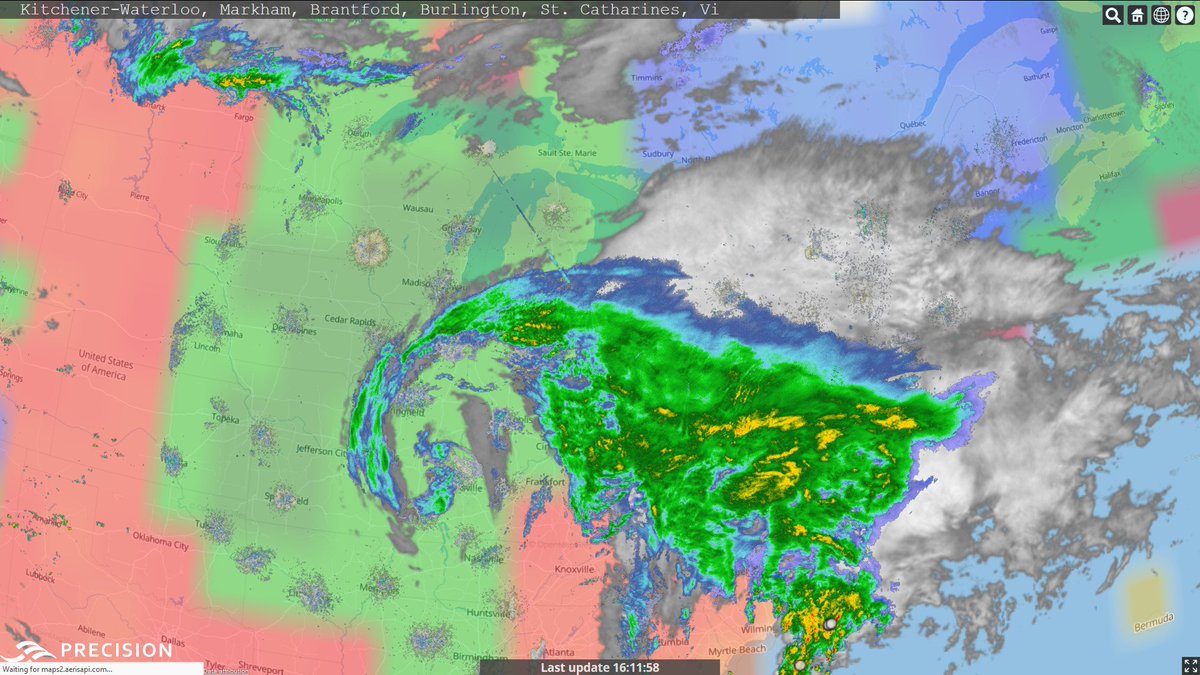
Thu Nov 15 15:33:40 +0000 2018MCCC2:p, methylcrotonoyl-CoA carboxylase 2 (H. sapiens) 🔗 Midsized metabolic enzyme subunit, normally unmodified but with several very low occupancy phosphorylation acceptor sites (26,803x) 🔗
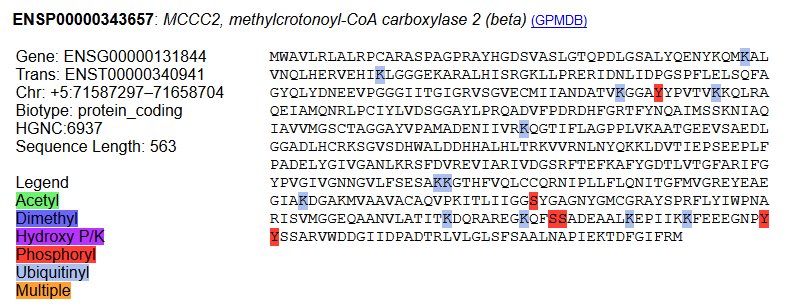
Thu Nov 15 13:49:20 +0000 2018PXD011271 is a really nice data set. Interesting technically and biologically. Good work Dr. Foster, et al.
Wed Nov 14 15:29:39 +0000 2018@slavovLab A good intro to the history of tag-based searches can be found in 🔗 describing the Paragon tag-based algorithm used by ProteinPilot.
Wed Nov 14 13:38:39 +0000 2018PKM:p, pyruvate kinase M1/2 (H. sapiens) 🔗 Small metabolic enzyme subunit, one of two splice variants (PKM1 and PKM2) that form tissue-specific versions of the enzyme (73,854x) 🔗
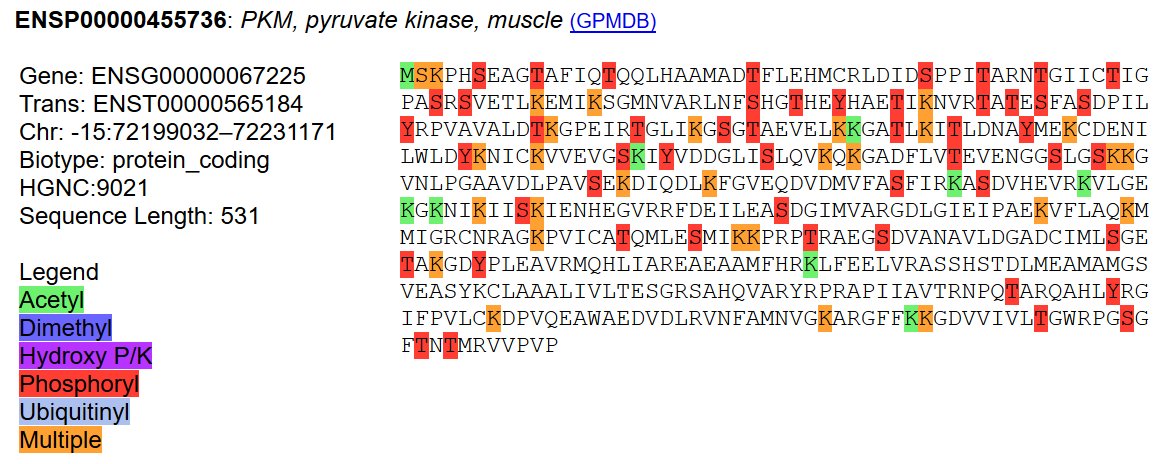
Tue Nov 13 18:50:33 +0000 2018@mjmaccoss @pwilmarth @slavovLab @ProteomicsNews Mathias Mann used to come out with a least one new named algorithm a year for this type of search engine, until he switched to Mascot.
Tue Nov 13 14:02:17 +0000 2018ENO1:p, enolase 1 (H. sapiens) 🔗 Small metabolic metalloenzyme subunit, active form maybe a homodimer or a heterodimer involving ENO2:p or ENO3:p (83,006x) 🔗
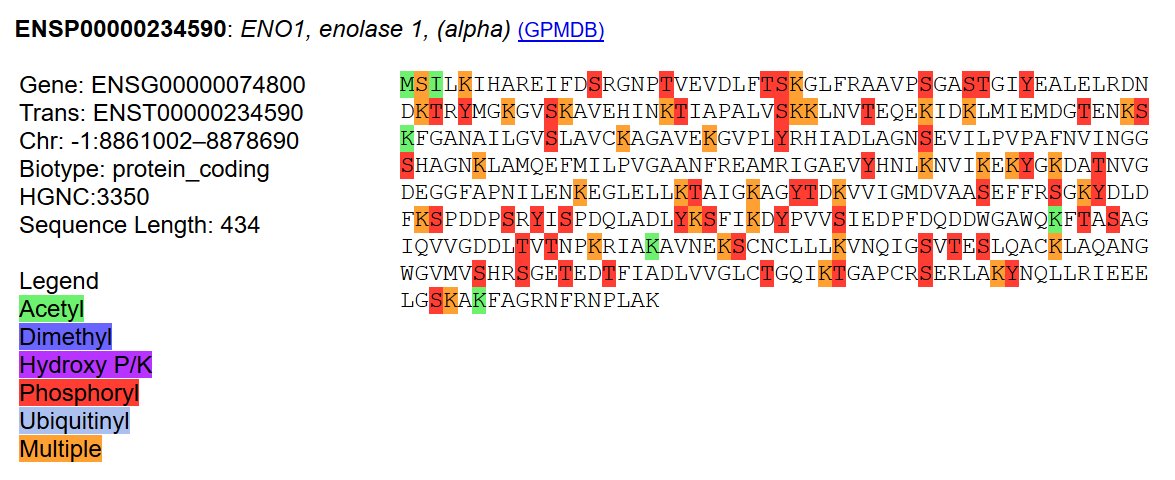
Mon Nov 12 15:40:17 +0000 2018Winter is no longer "coming" in central North America 🔗
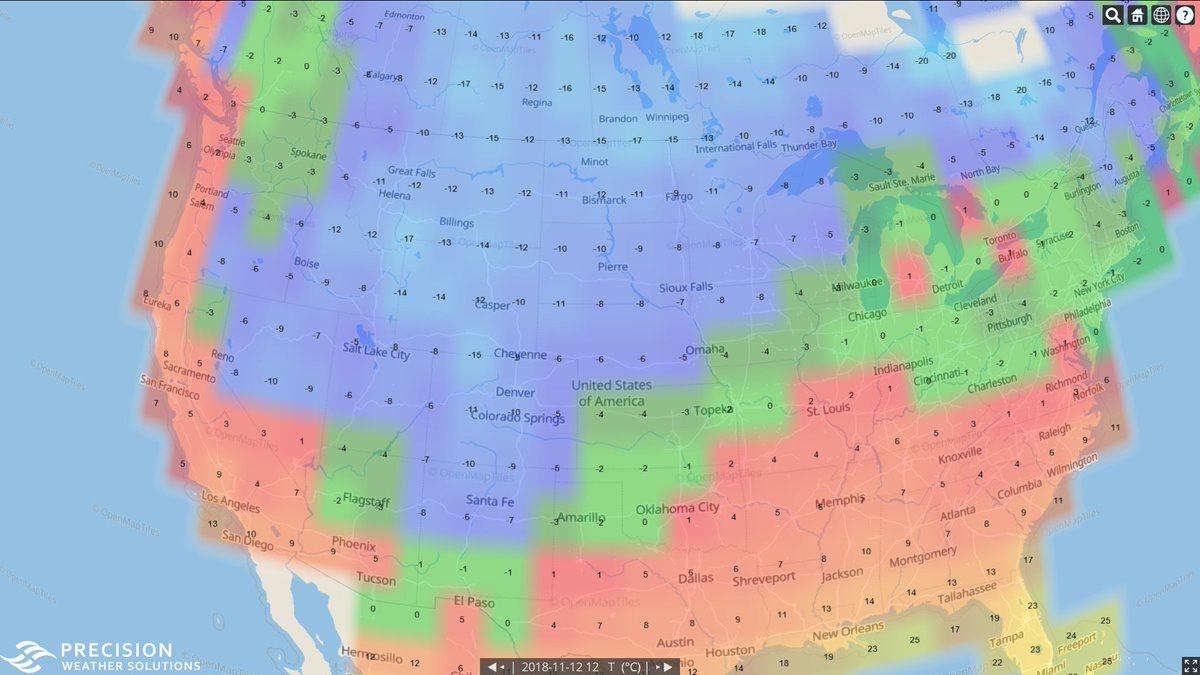
Mon Nov 12 14:38:26 +0000 2018PGAM1:p, phosphoglycerate mutase 1 (H. sapiens) 🔗 Small metabolic enzyme subunit, may form a homodimer or a heterodimer with PGAM2 (49,054x) 🔗
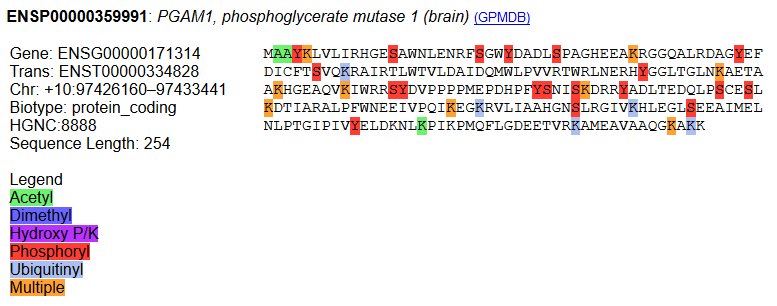
Sun Nov 11 15:11:09 +0000 2018PGK1:p, phosphoglycerate kinase 1 (H. sapiens) 🔗 Small metabolic enzyme, that has a similar PTM profile to other proteins in the glycolytic pathway (65,717x) 🔗
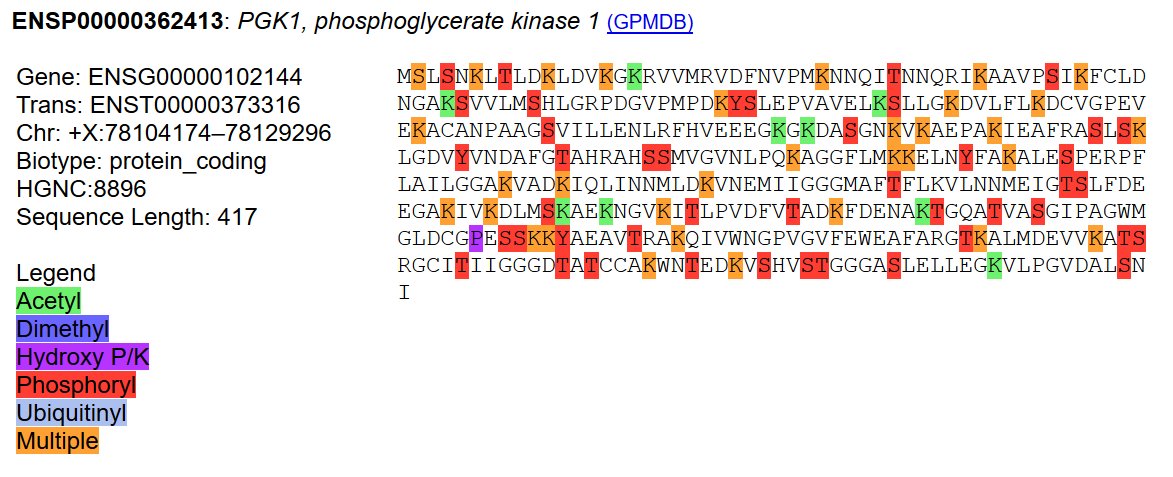
Sat Nov 10 13:36:36 +0000 2018GAPDH:p, glyceraldehyde-3-phosphate dehydrogenase (H. sapiens) 🔗 Small metabolic enzyme subunit, one of the most commonly observed proteins (93,393x) 🔗
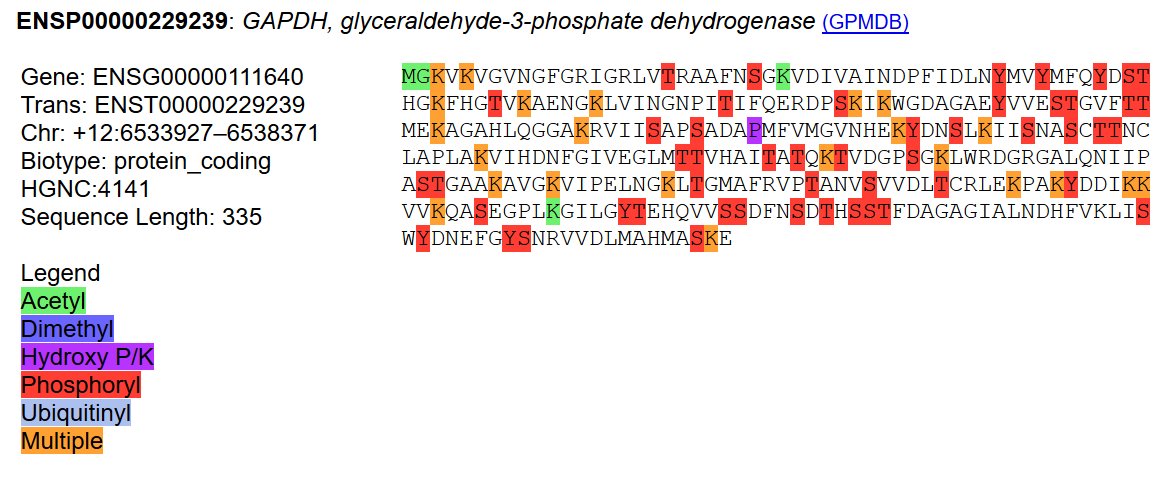
Fri Nov 09 16:03:30 +0000 2018The longer variant can be positively id'd by the observation of the peptides 2-23, 33-42 or 33-43. (3/3)
Fri Nov 09 16:02:44 +0000 2018NOTE: This 249 aa splice variant is the dominant form in humans. The longer 286 aa splice variant (corresponding to the UniProt entry P60174) is only found in spermatozoa. (2/3)
Fri Nov 09 14:34:08 +0000 2018TPI1:p, triosephosphate isomerase 1 (H. sapiens) 🔗 Small metabolic enzyme subunit, with a puzzling degree of post-translational modification (63,045x) 🔗
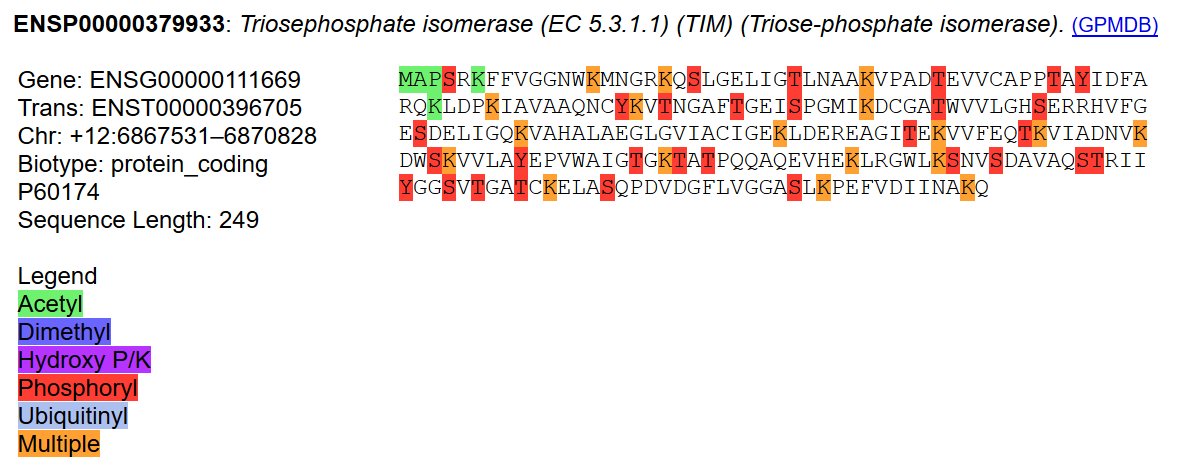
Thu Nov 08 22:01:31 +0000 2018@pwilmarth I deal with the redundancy at run time, so it isn't really an issue for me: I understand it is a real pain if that isn't possible. My main considerations are being able to easily audit everything back & forth to the RNA/DNA + having all of the splice variants considered.
Thu Nov 08 16:56:09 +0000 2018@pwilmarth For eukaryote model species, I normally use ENSEMBL's sequence files
For prokarytes, sequence files from ftp://ftp.ncbi.nlm.nih.gov/genomes/refseq/bacteria
For viruses, sequence files from ftp://ftp.ncbi.nlm.nih.gov/genomes/refseq/viral
Thu Nov 08 15:35:23 +0000 2018@pwilmarth I find SwissProt/UniProt/neXtProt to be a bit too whimsical for practical use, but I know they are very popular.
Thu Nov 08 13:50:53 +0000 2018ALDOA:p, aldolase, fructose-bisphosphate A (H. sapiens) 🔗 Small metabolic enzyme subunit, one of three genes (ALDOA, ALDOB, ALDOC) that can be used to form the functional homotetramer (67,979x) 🔗
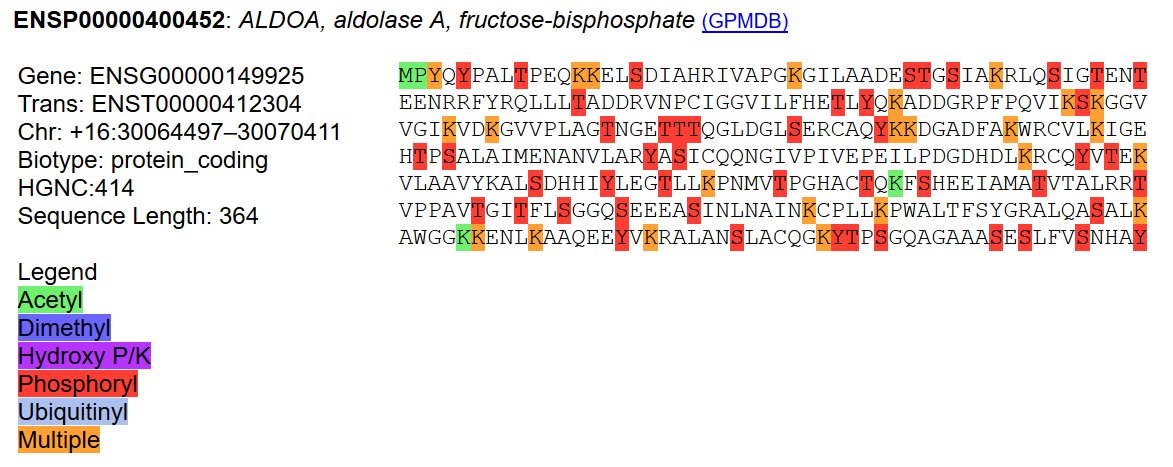
Wed Nov 07 13:51:57 +0000 2018PFKP:p, phosphofructokinase, platelet (H. sapiens) 🔗 Midsized, metabolic enzyme subunit, one of three genes that can be used to form the functional tetramer (41,045x) 🔗
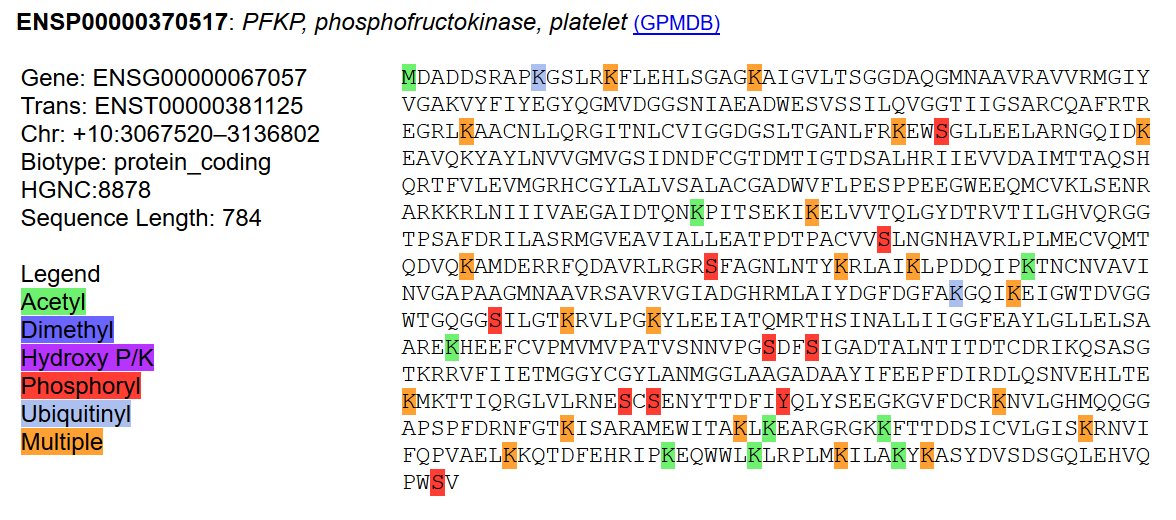
Tue Nov 06 13:28:25 +0000 2018GPI:p, glucose-6-phosphate isomerase (H. sapiens) 🔗 Midsized, highly modified metabolic enzyme, all 17 observed ubiquitinylation sites also observed acetylation sites (51,780x) 🔗
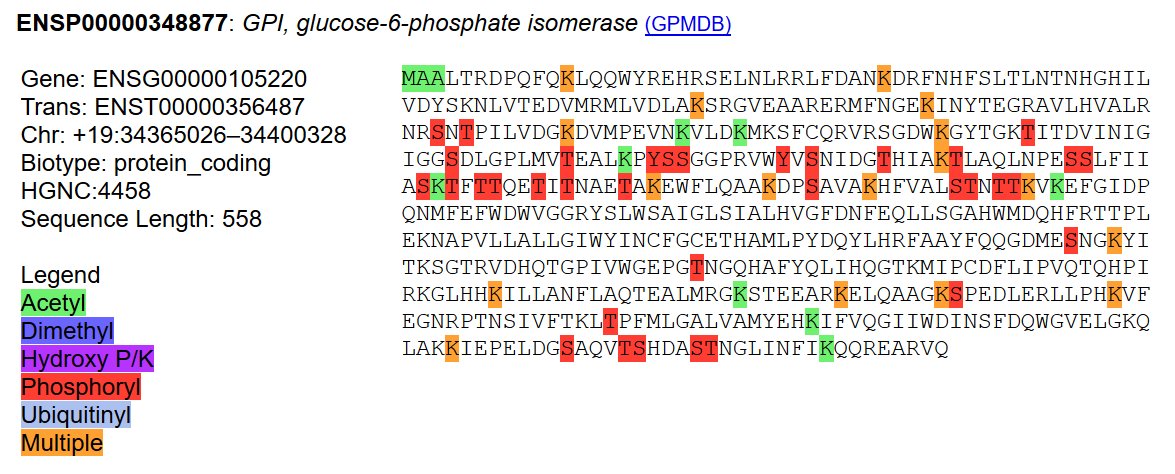
Mon Nov 05 15:10:18 +0000 2018Speaking as someone from the rest of Canada, I cannot adequately express my relief that, finally, someone from Toronto is going to tell us what to do 🔗
Mon Nov 05 15:05:34 +0000 2018Also note that there is no distinguishable sequence motif associated with the ubi-acceptor lysines, suggesting the involvement of multiple E3 ligases
Mon Nov 05 13:43:00 +0000 2018HK1:p, hexokinase 1 (H. sapiens) 🔗 Large, non-muscle form of this metabolic enzyme, with several low occupancy acetylation and phosphorylation sites and 24 ubiquitinylation acceptor sites (35,207x) 🔗
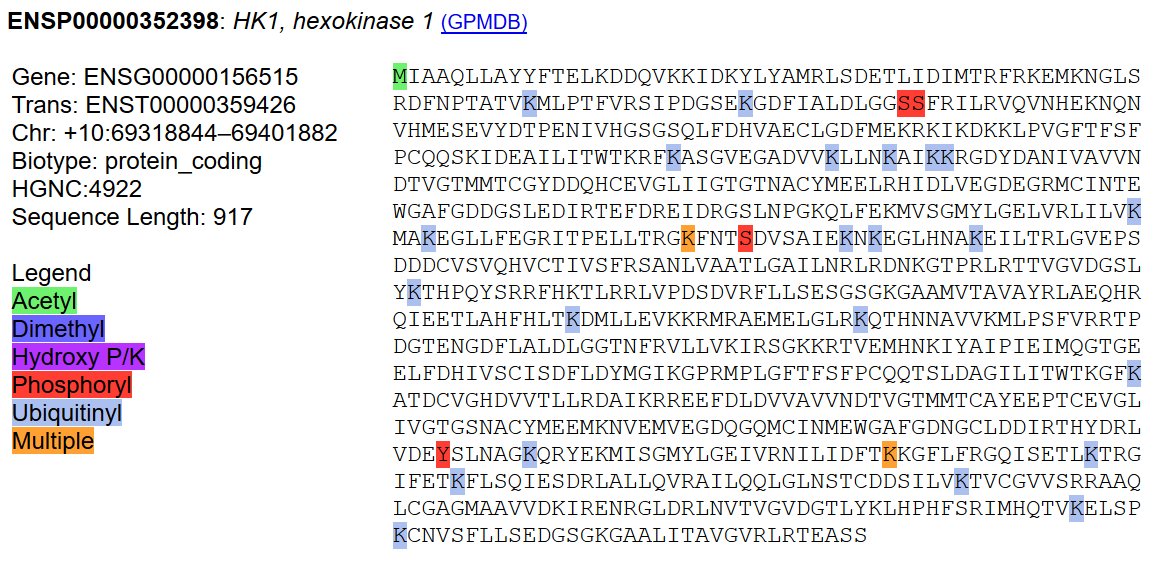
Sun Nov 04 21:42:24 +0000 2018@kady Is there any provision in the current law that would prevent my bank from informing me if I was one of the lucky individuals targeted by the StatsCan data scoop?
Sun Nov 04 14:08:29 +0000 2018CS:p, citrate synthase (H. sapiens) 🔗 Small metabolic enzyme, commonly found in cell lines and tissues (36,628x): last of the TCA cycle proteins 🔗
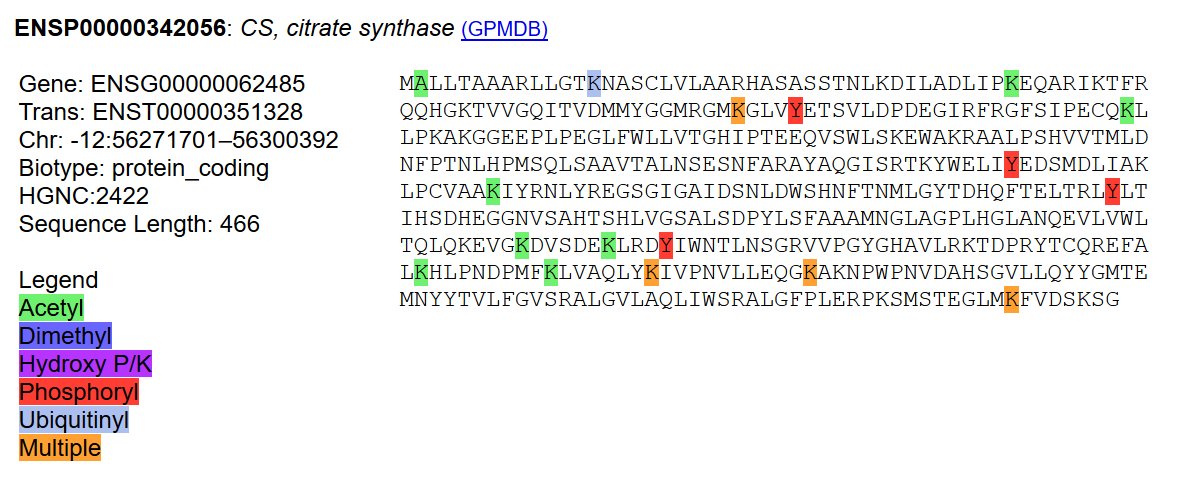
Sat Nov 03 13:40:40 +0000 2018MDH2:p, malate dehydrogenase 2 (H. sapiens) 🔗 Midsized metabolic enzyme with many observed PTM acceptor sites, commonly found in cell lines and tissues (53,249x) 🔗
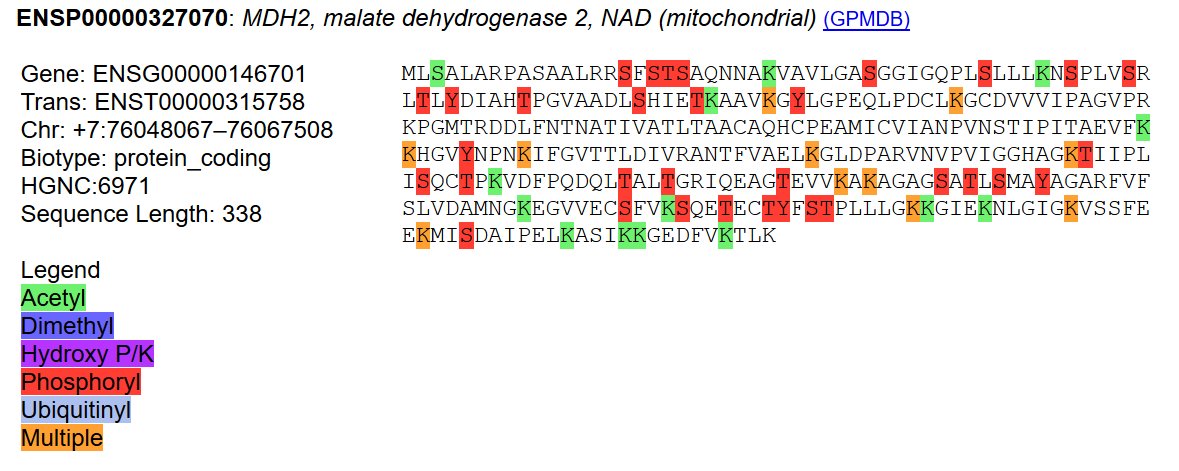
Fri Nov 02 20:48:33 +0000 2018@VassyKapelos @globeandmail But to paraphrase Linda Cullen: She is Adrienne Clarkson, and we're not
Fri Nov 02 20:09:47 +0000 2018Someone's got to tell these guys how to use a robots.txt file
🔗
Fri Nov 02 15:45:50 +0000 2018@UnlikelyWorlds Dirac by a country mile.
Fri Nov 02 12:59:23 +0000 2018FH:p, fumarate hydratase (H. sapiens) 🔗 Variably modified mid-sized metabolic enzyme, commonly observed in cell lines and tissues with mitochondria (33,991x) 🔗
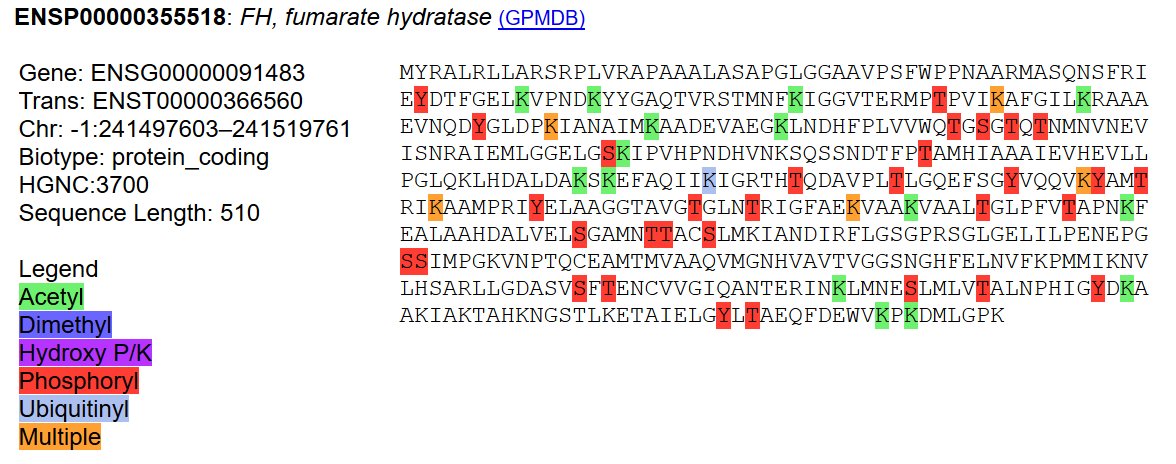
Thu Nov 01 14:25:13 +0000 2018Frost all the way down to Albuquerque, New Mexico this morning 🔗
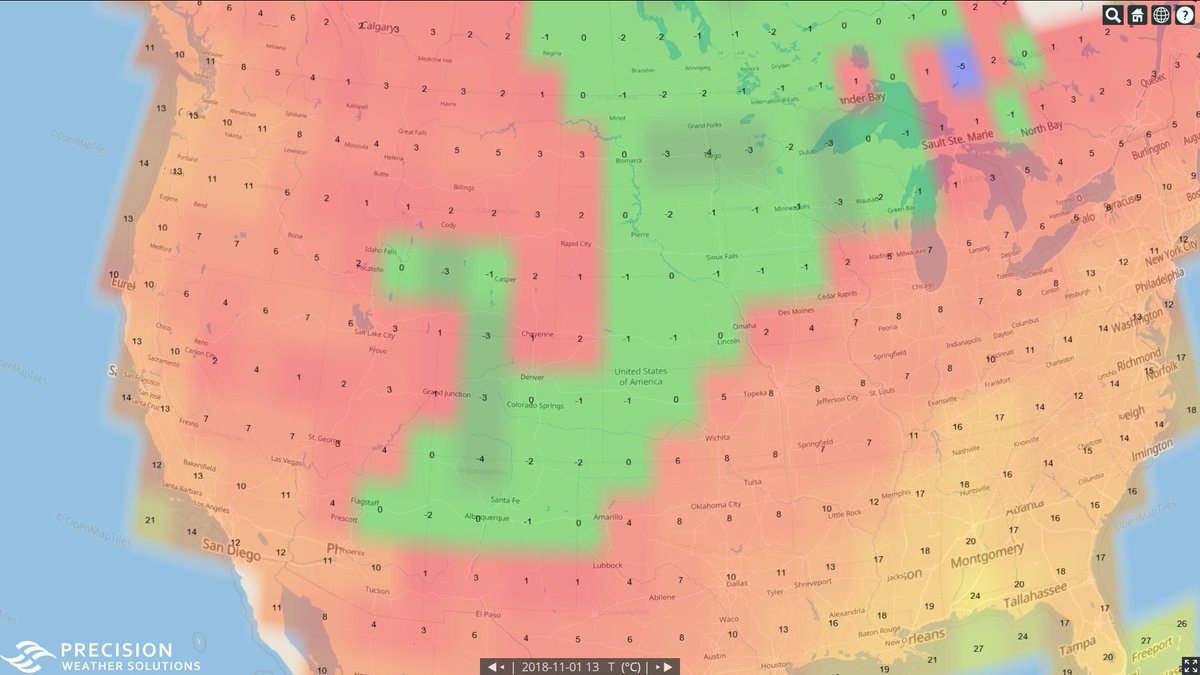
Thu Nov 01 13:17:52 +0000 2018SDHD:p, succinate dehydrogenase complex subunit D (H. sapiens) 🔗 Small, unmodified integral membrane subunit of succinate dehydrogenase, most rarely observed of the heterotetramer's subunits (1,790x)
Wed Oct 31 13:12:25 +0000 2018SDHC:p, succinate dehydrogenase complex subunit C (H. sapiens) 🔗 Small integral membrane subunit of a metabolic enzyme, observed in cell lines and tissues that contain mitochondria (4,991x) 🔗
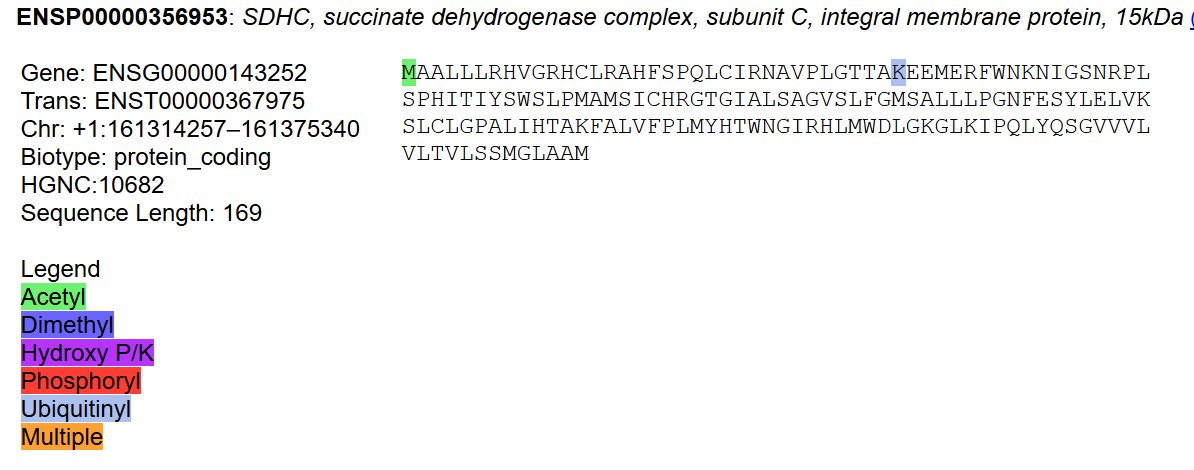
Tue Oct 30 21:40:45 +0000 2018I guess I should have included: Does anyone care?
Tue Oct 30 19:04:24 +0000 2018My winner would be the website for AI.SCALE. It is so noncommittal that it really takes things to another level.
Tue Oct 30 18:53:54 +0000 2018Which website for a Canadian Innovation Supercluster is the least informative about the organization & how the money will be spent: 🔗; 🔗 or 🔗
Tue Oct 30 14:30:27 +0000 2018SDHB:p, succinate dehydrogenase complex iron sulfur subunit B (H. sapiens) 🔗 Small metabolic enzyme subunit, commonly observed in cell lines and tissues that contain mitochondria (21,868x) 🔗
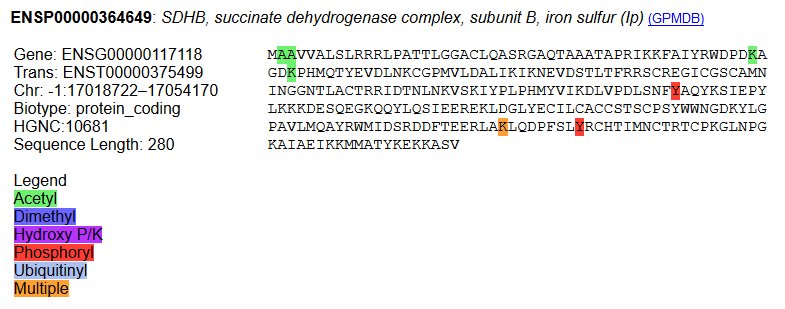
Mon Oct 29 15:15:17 +0000 2018A strong, large and very well organized Typhoon Yutu is making landfall on Luzon 🔗

Mon Oct 29 14:55:26 +0000 2018With today's update, GPMDB just went past 8 billion PSMs for a current total of 8,003,864,805.
Mon Oct 29 12:57:26 +0000 2018SDHA:p, succinate dehydrogenase complex flavoprotein subunit A (H. sapiens) 🔗 Midsized metabolic enzyme, commonly observed in cell lines and tissues (37,444x), except erythrocytes 🔗
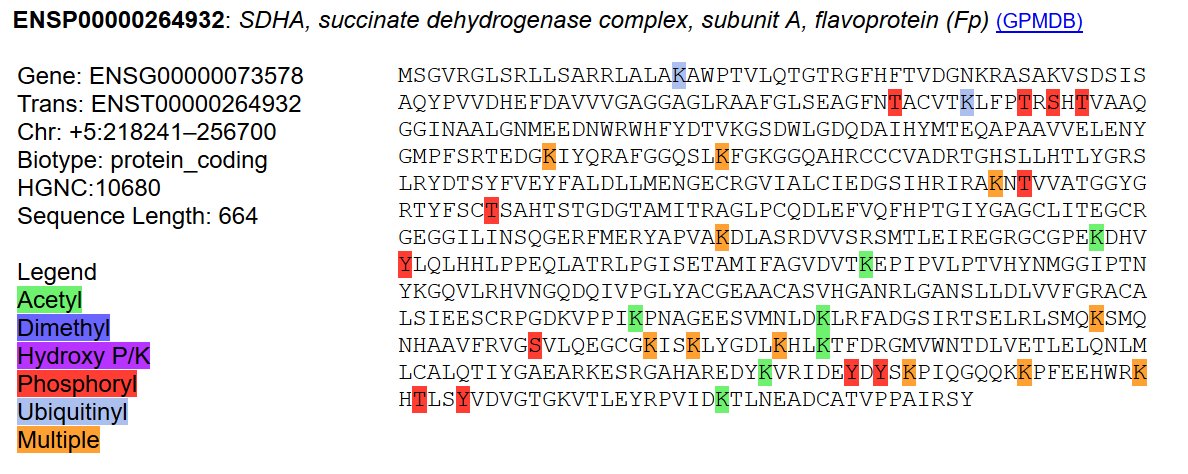
Sun Oct 28 13:17:11 +0000 2018SUCLG2:p, succinate-CoA ligase GDP-forming beta subunit (H. sapiens) 🔗 Midsized K-aetylated metabolic enzyme, commonly observed in cell lines and tissues (23,677x) 🔗
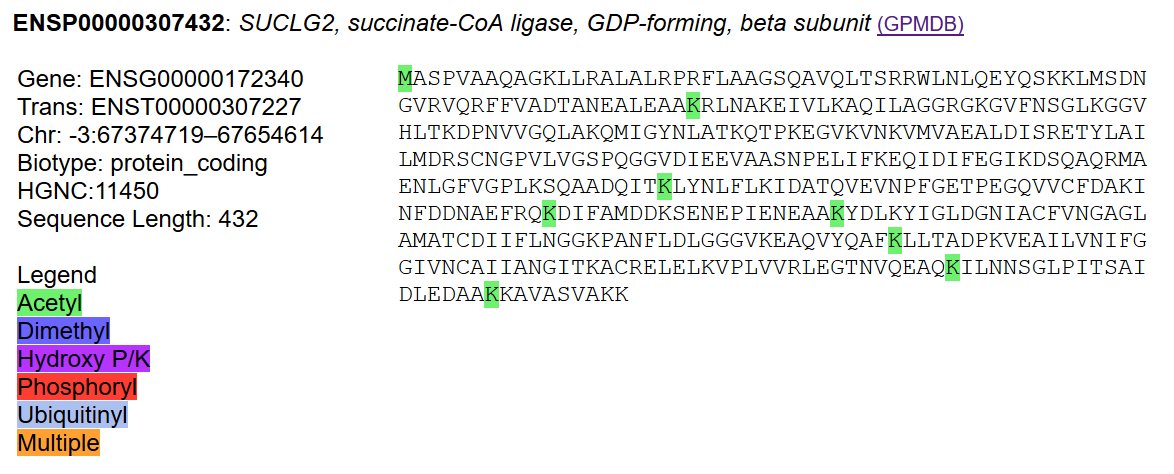
Sat Oct 27 13:11:33 +0000 2018SUCLG1:p, succinate-CoA ligase alpha subunit (H. sapiens) 🔗 Midsized rarely modified metabolic enzyme, commonly observed in cell lines and tissues (21,674x) 🔗
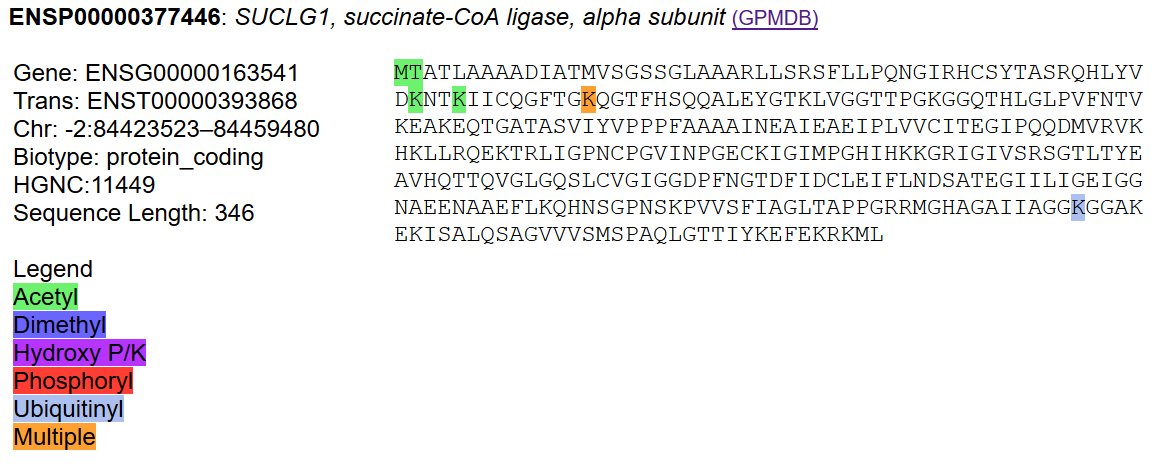
Fri Oct 26 19:25:17 +0000 2018@UCDProteomics Even a percent or two of the beads/bulk would produce easy-to-detect signals in the MS/MS results.
Fri Oct 26 19:21:35 +0000 2018@UCDProteomics Since they are both recombinant proteins used to coat beads, my uninformed guess is a manufacturing error where either some of the coated beads or bulk proteins got mixed together.
Fri Oct 26 15:03:53 +0000 2018The Lys-C these guys used (🔗) is unusually good, but looking at the paper they say that they used "homemade proteases". What does that mean?
Fri Oct 26 14:41:57 +0000 2018Yutu appears to be still well organized, heading towards the Strait of Luzon and into the South China Sea 🔗
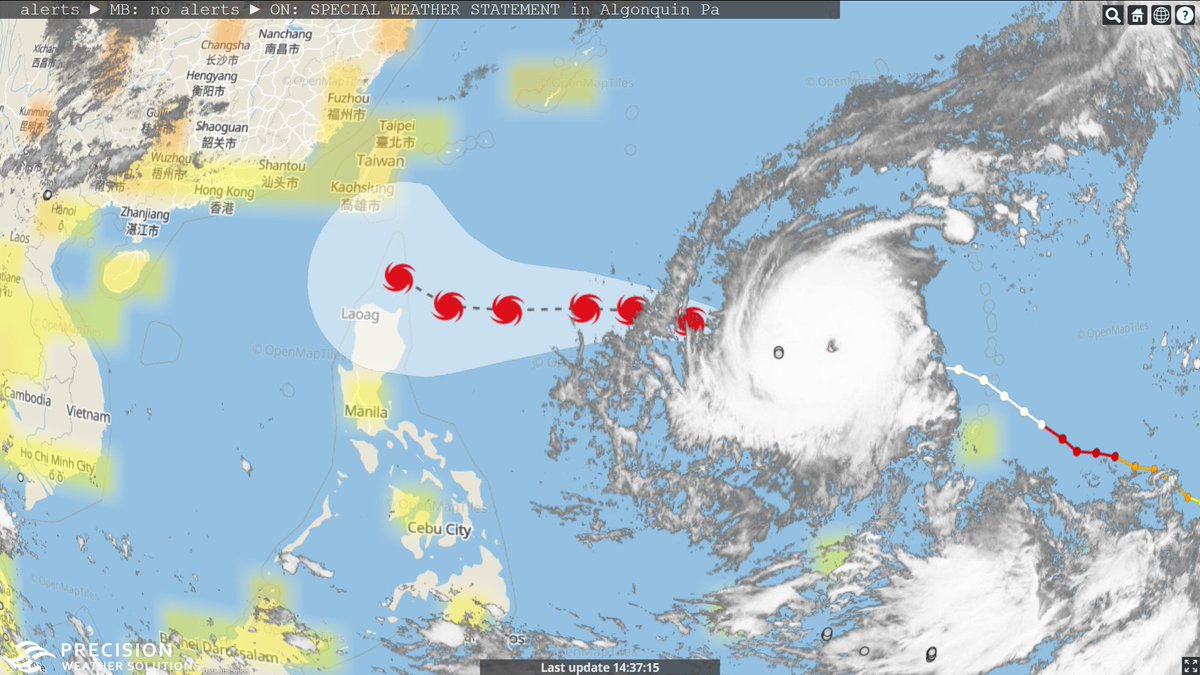
Fri Oct 26 14:16:43 +0000 2018Light frost stretching down from Quebec across New England as far south as Rhode Island this morning. 🔗
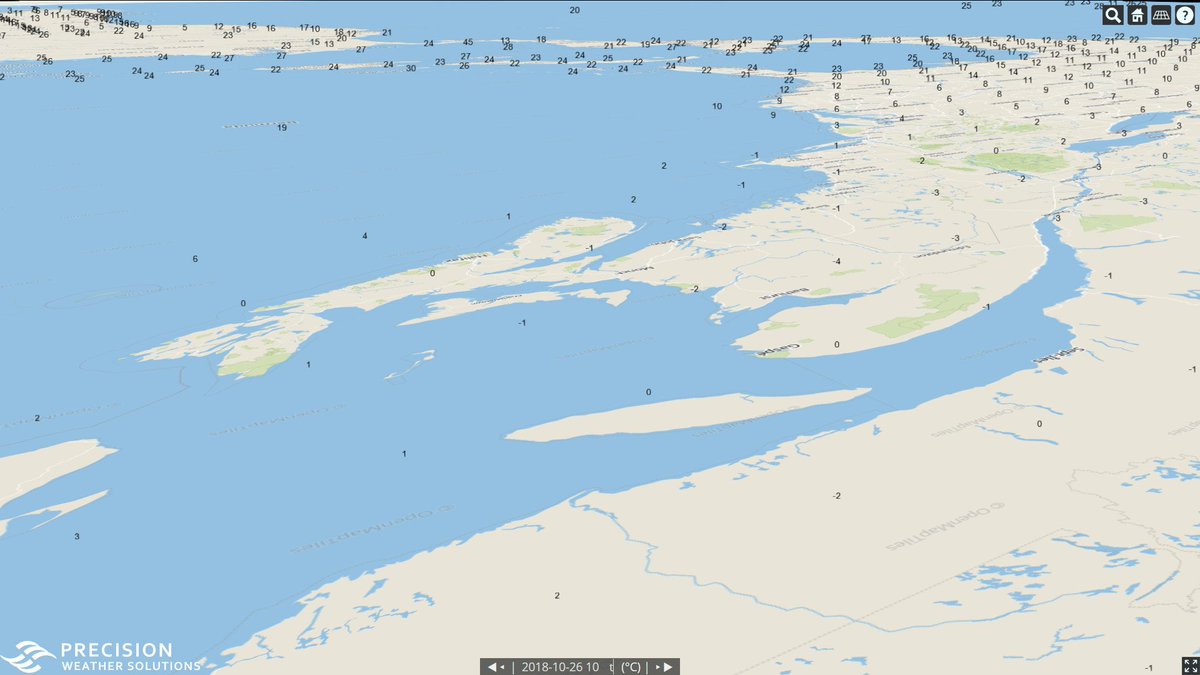
Fri Oct 26 12:41:20 +0000 2018DLD:p, dihydrolipoamide dehydrogenase (H. sapiens) 🔗 Midsized highly modified metabolic enzyme, commonly observed in cell lines and tissues (37,739x). The PTM pattern is quite different than the other 2 subunits of the OGD complex 🔗
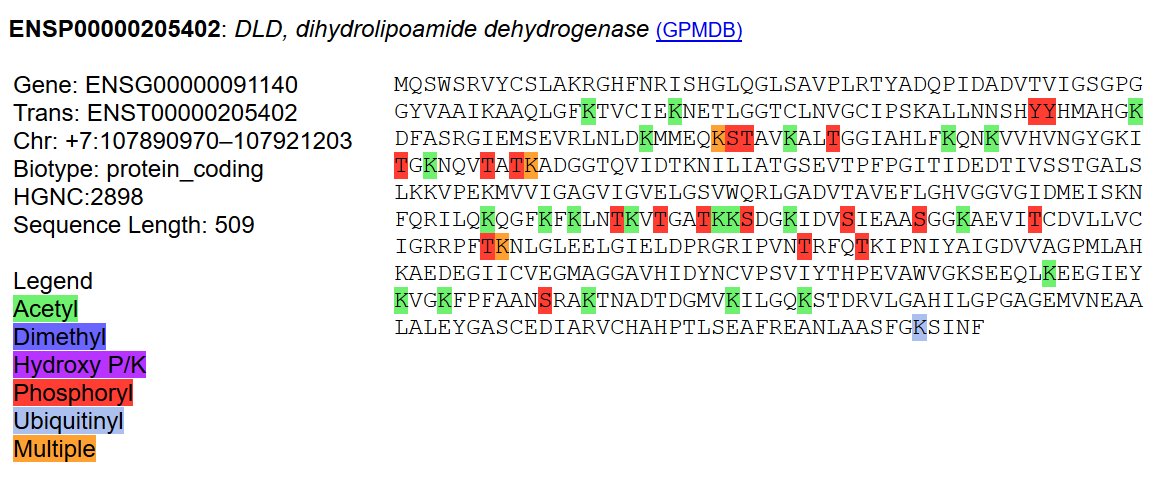
Thu Oct 25 21:06:36 +0000 2018@InklessPW I do believe they are going to "make it rain" in Vancouver tomorrow.
Thu Oct 25 15:20:56 +0000 2018I'm sure it happened some time ago, but I really noticed it when looking at some data containing rarely observed proteins (NLRPs).
Thu Oct 25 15:18:13 +0000 2018I was pleasantly surprised to see that ENSEMBL has switched over to MGI as their source for mouse gene & protein text annotation. 🐭
Thu Oct 25 13:01:29 +0000 2018DLST:p, dihydrolipoamide S-succinyltransferase (H. sapiens) 🔗 Midsized metabolic enzyme, very commonly observed in cell lines and tissues (30,539x) 🔗
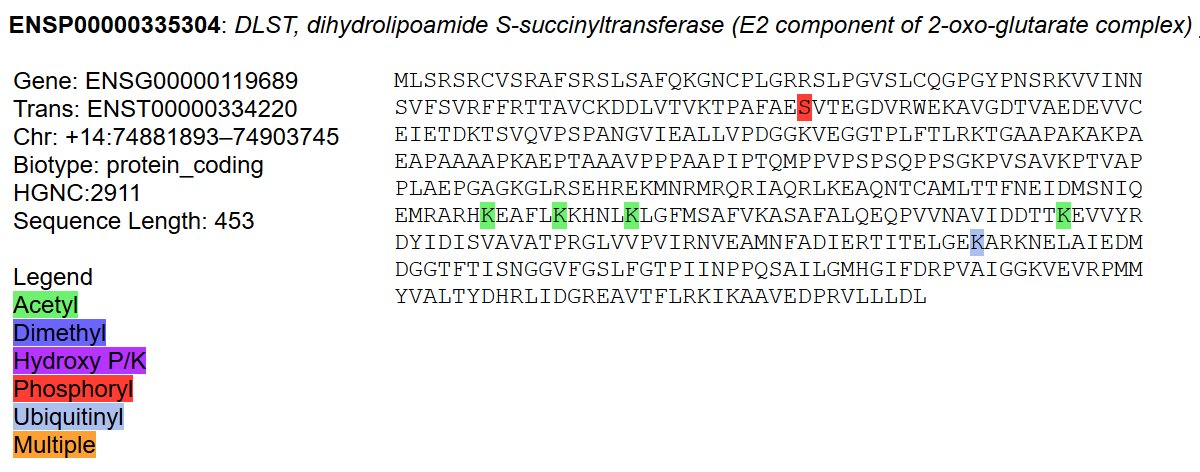
Wed Oct 24 12:57:42 +0000 2018OGDH:p, oxoglutarate dehydrogenase (H sapiens) 🔗
Large metabolic enzyme, very commonly observed in cell lines and tissues (29,403x) 🔗
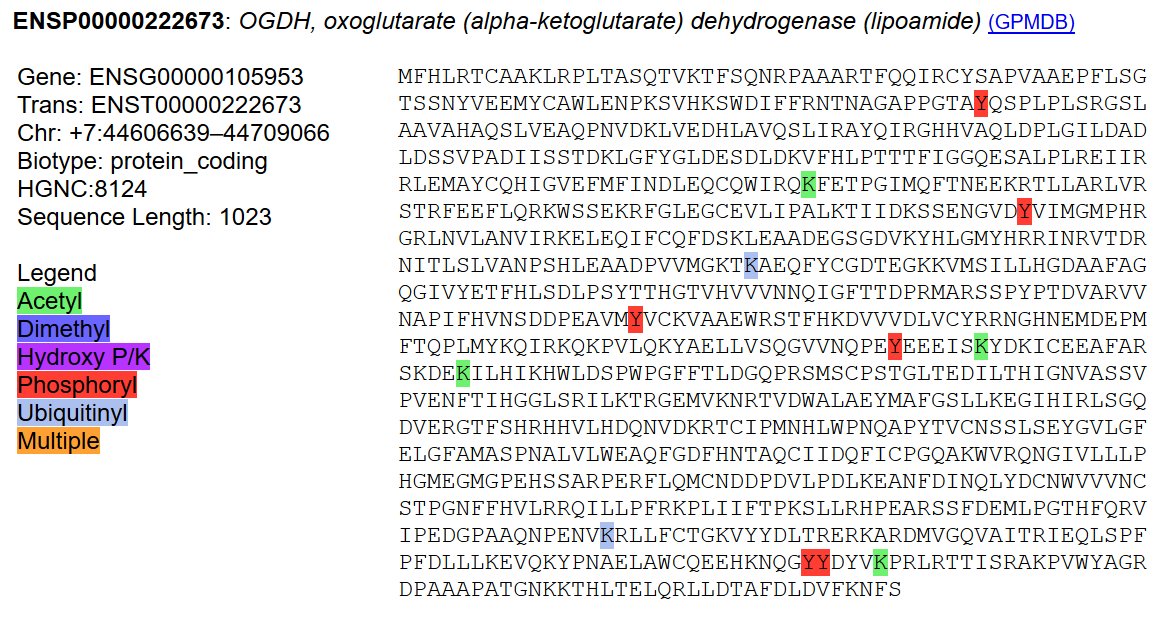
Tue Oct 23 21:28:35 +0000 2018Do MHC Class I peptides caused by peptide splicing events in proteasomes exist or are they MS/MS data interpretation artifacts?
Tue Oct 23 12:57:53 +0000 2018IDH1:p, isocitrate dehydrogenase (NADP(+)) 1, cytosolic (H. sapiens) 🔗 Small metabolic enzyme, very commonly observed in most cell lines and tissues (35,409x) 🔗
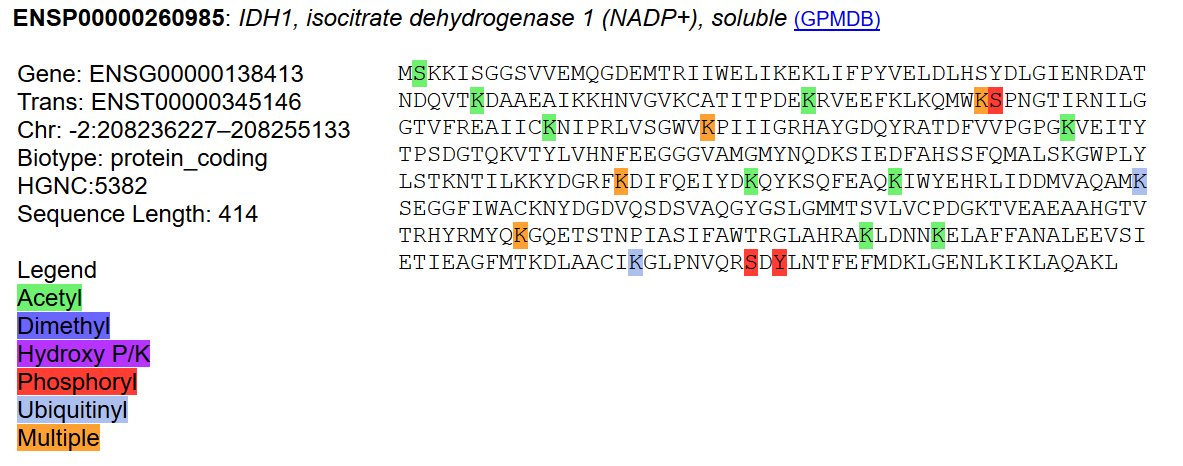
Mon Oct 22 12:47:15 +0000 2018ACO1:p, aconitase 1 (H. sapiens) 🔗 Midsized rarely modified metabolic enzyme, very commonly observed in most cell lines and tissues (25,710x) 🔗
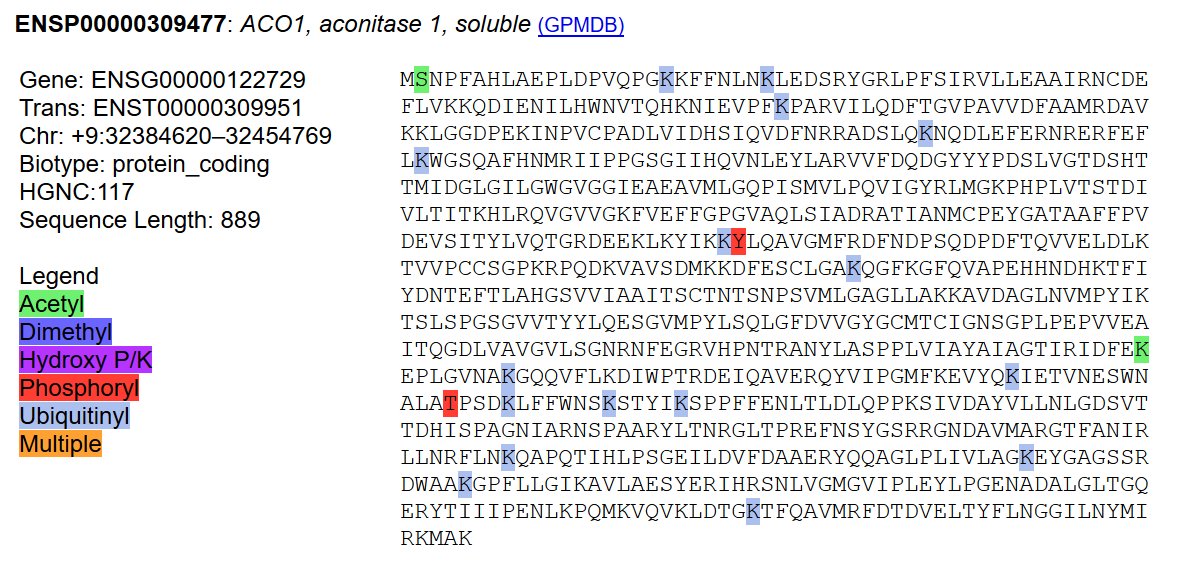
Sun Oct 21 14:03:07 +0000 2018CS:p, citrate synthase (H sapiens) 🔗 Midsized metabolic enzyme, commonly observed in all cell lines and tissues (36,413x), rarely tyrosine phosphorylated 🔗
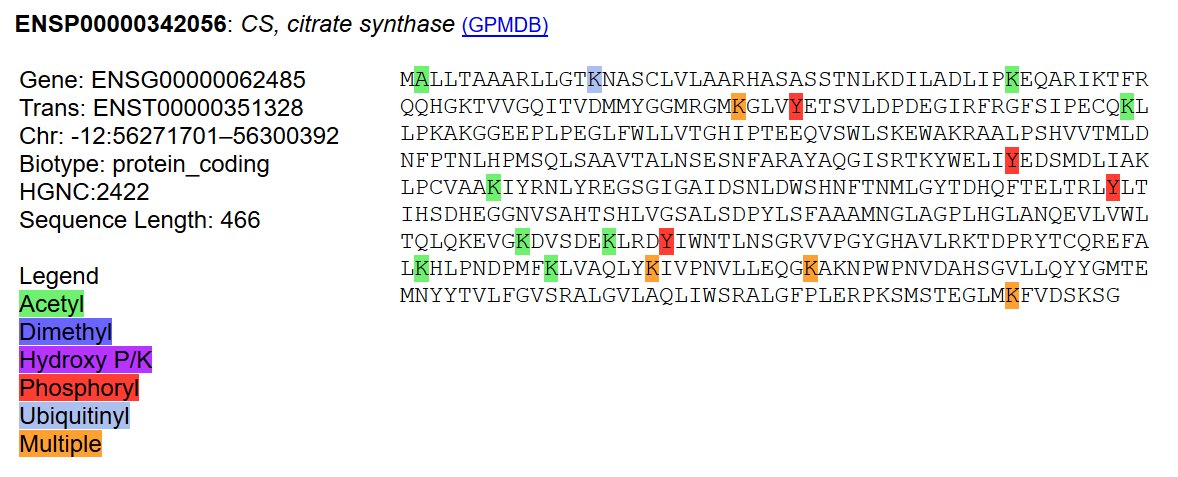
Sat Oct 20 14:24:06 +0000 2018ACLY:p, ATP citrate lyase (H sapiens) 🔗 Large extensively modified metabolic enzyme, very commonly observed in most cell lines and tissues (49,526x) 🔗
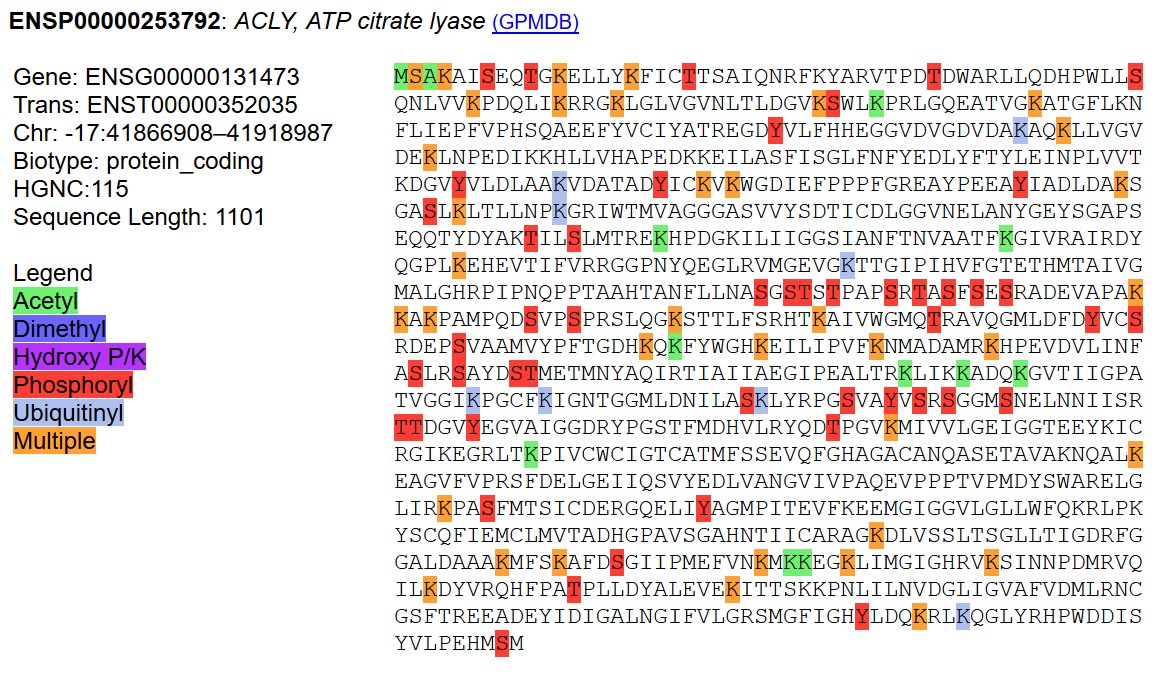
Fri Oct 19 14:40:34 +0000 2018DBT:p, dihydrolipoamide branched chain transacylase E2 (H sapiens) 🔗 Midsized normally unmodified metabolic enzyme, very commonly observed in most cell lines and tissues (13,632 ×) 🔗
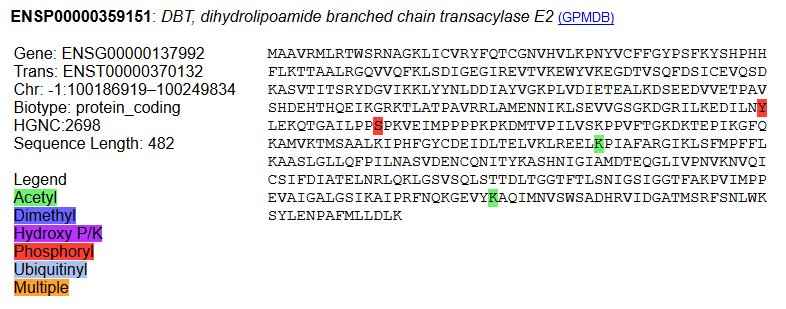
Thu Oct 18 15:34:49 +0000 2018IVD:p, isovaleryl-CoA dehydrogenase (H. sapiens) 🔗 Midsized unmodified intracellular protein, very commonly observed, involved in leucine metabolism 🔗
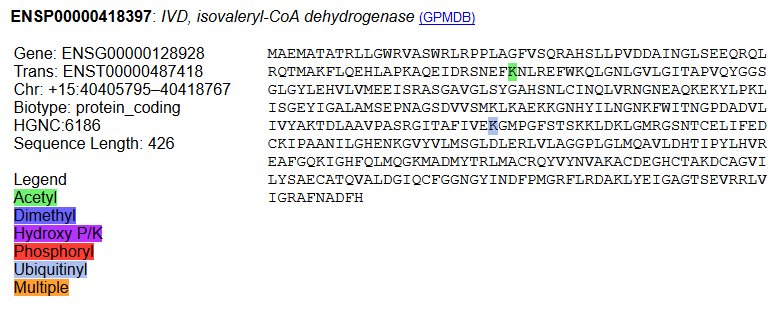
Thu Oct 18 14:35:58 +0000 2018Frost conditions across "central" Canada, northern parts of the US Midwest and higher elevations in New England 🔗
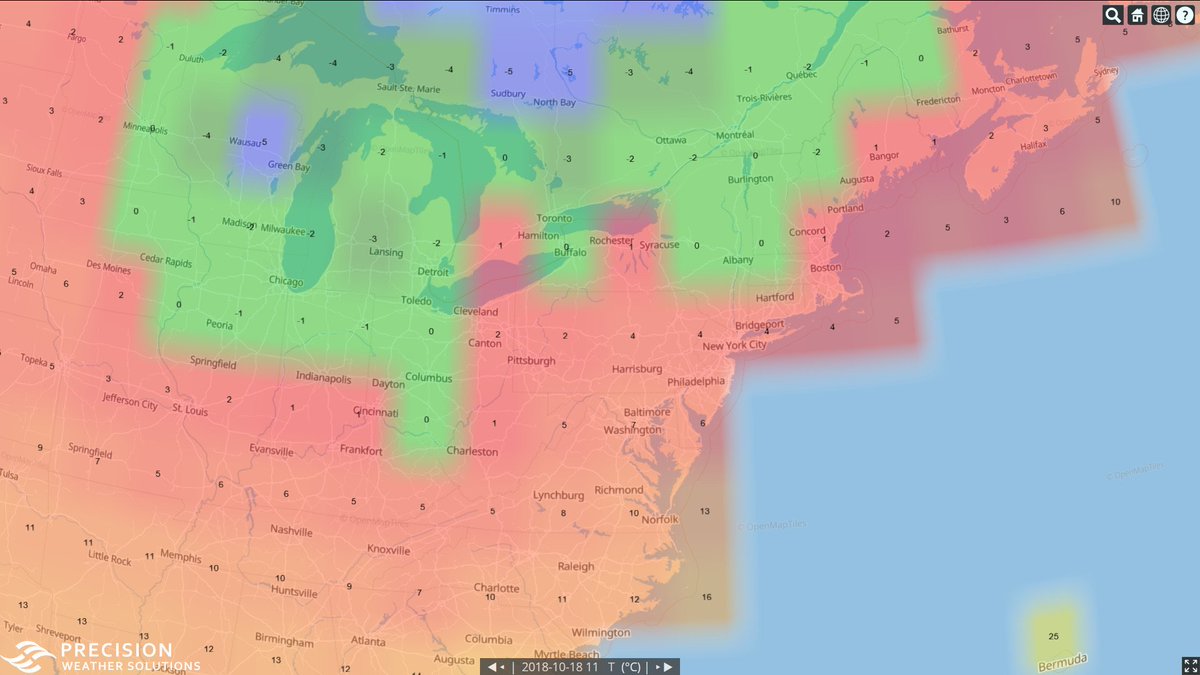
Thu Oct 18 14:12:32 +0000 2018@ProteomicsNews @mvaudel @UCDProteomics And I guess that means that Dr. Vaudel gets a well deserved unfollow from me.
Thu Oct 18 00:17:30 +0000 2018@mvaudel @UCDProteomics @ProteomicsNews @dtabb73 I guess they approximate the high score for false sequence assignments, given the parameters used in the analysis.
Wed Oct 17 15:20:38 +0000 2018I am not OK with including data from this study 🔗 in GPMDB. Not anything to do with the data, but something about the experiment doesn't sit right with me.
Wed Oct 17 14:49:34 +0000 2018DHODH:p, dihydroorotate dehydrogenase (quinone) (H, sapiens) 🔗 Small intracellular protein, observed in many tissues and cell lines, particularly abundant in HeLa cells 🔗
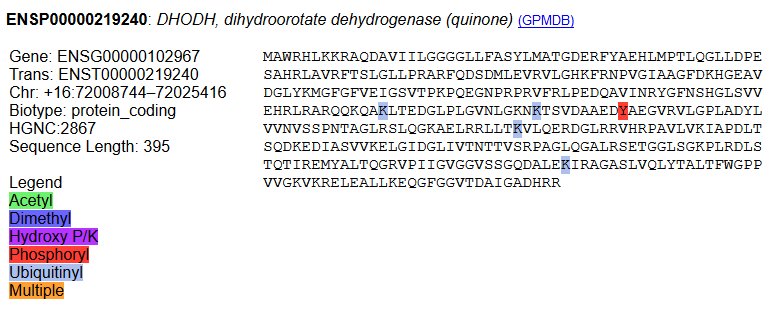
Wed Oct 17 14:23:29 +0000 2018@UCDProteomics @ProteomicsNews Looks like a typical case of best-fit-itis. An impossible solution (unless you treated the sample with formaldehyde & there is a lot of +12.0000 on other ids amino groups), regardless of the fit, is still impossible.
Tue Oct 16 16:33:07 +0000 2018@massspecpro @ProteomicsNews Something about this idea sounds very familiar to me ...
Tue Oct 16 12:49:20 +0000 2018CYB5R2:p, cytochrome b5 reductase 2 (H sapiens) 🔗 Small intracellular protein, most abundant in testis and ovary - has no overlap of identifiable tryptic peptides with other proteins 🔗
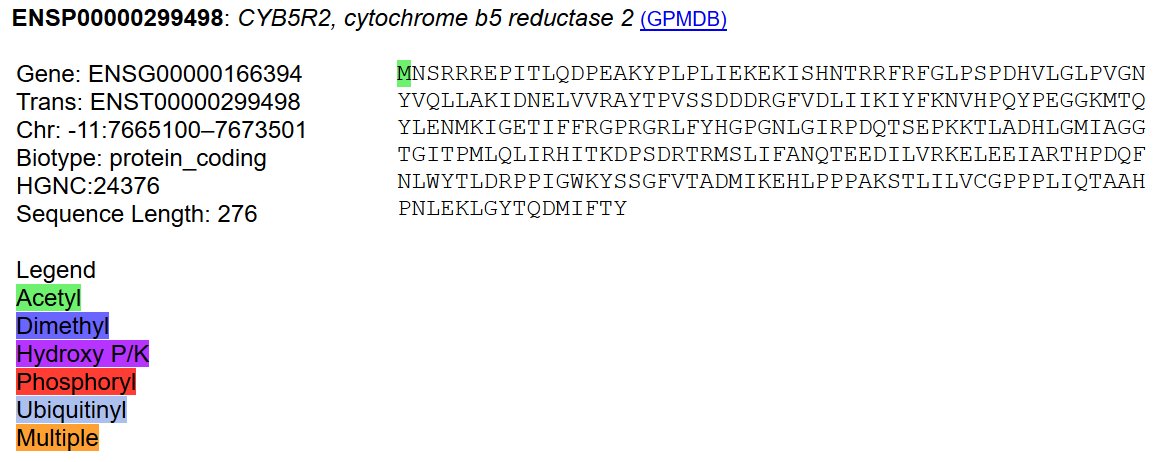
Mon Oct 15 21:19:35 +0000 2018@UCDProteomics @ProteomicsNews I would be interested in the results, too. In the paper, they say that they found 20-30% of the C residues without +57 in IAA preps. That seems a bit odd to me, but if true I would love to know if the C's are modified in some other way.
Mon Oct 15 13:05:55 +0000 2018CYB5R1:p, cytochrome b5 reductase 1 (H. sapiens) 🔗 Small intracellular protein, with 3 low-occupancy phosphorylation sites and at least 15 ubiquitinylation sites 🔗
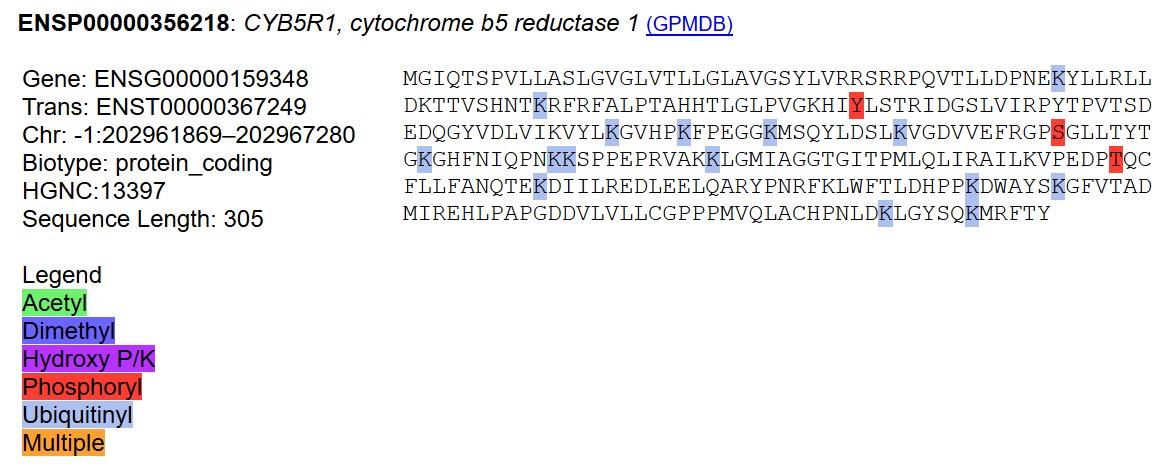
Sun Oct 14 16:27:28 +0000 2018Ground clutter in NEXRAD reflectivity lines up pretty well with sub-zero temperatures this morning 🔗
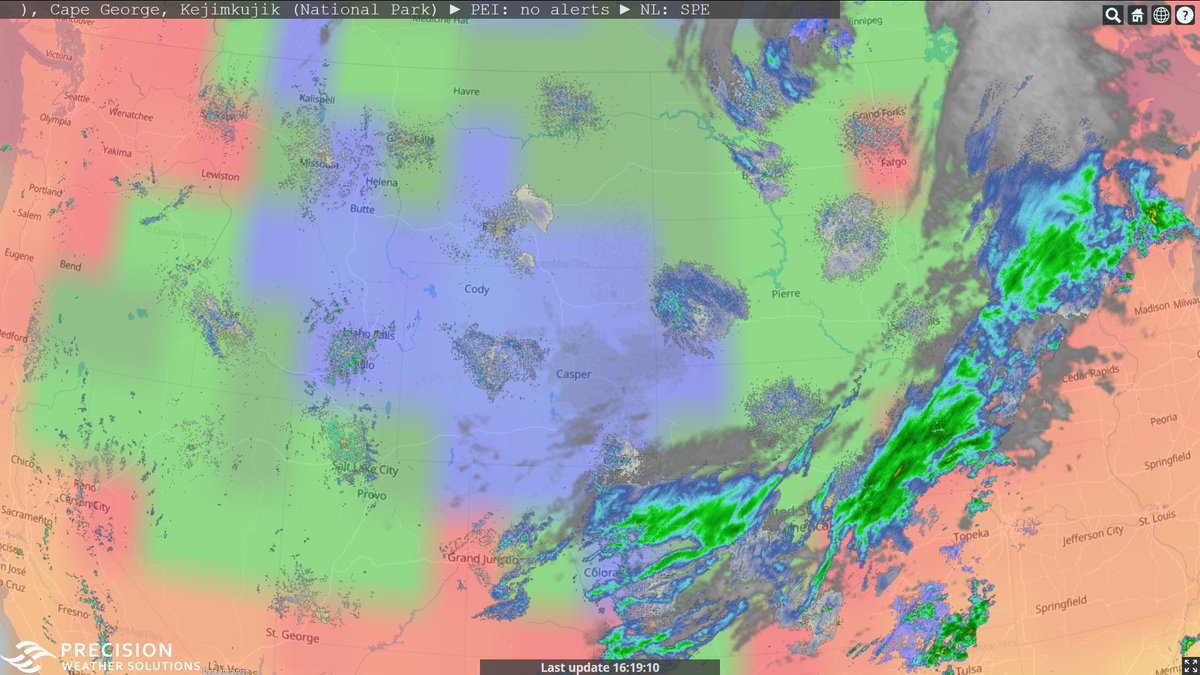
Sun Oct 14 14:51:29 +0000 2018Lots of frost across the Northern Plains and Rocky Mountains this morning 🔗
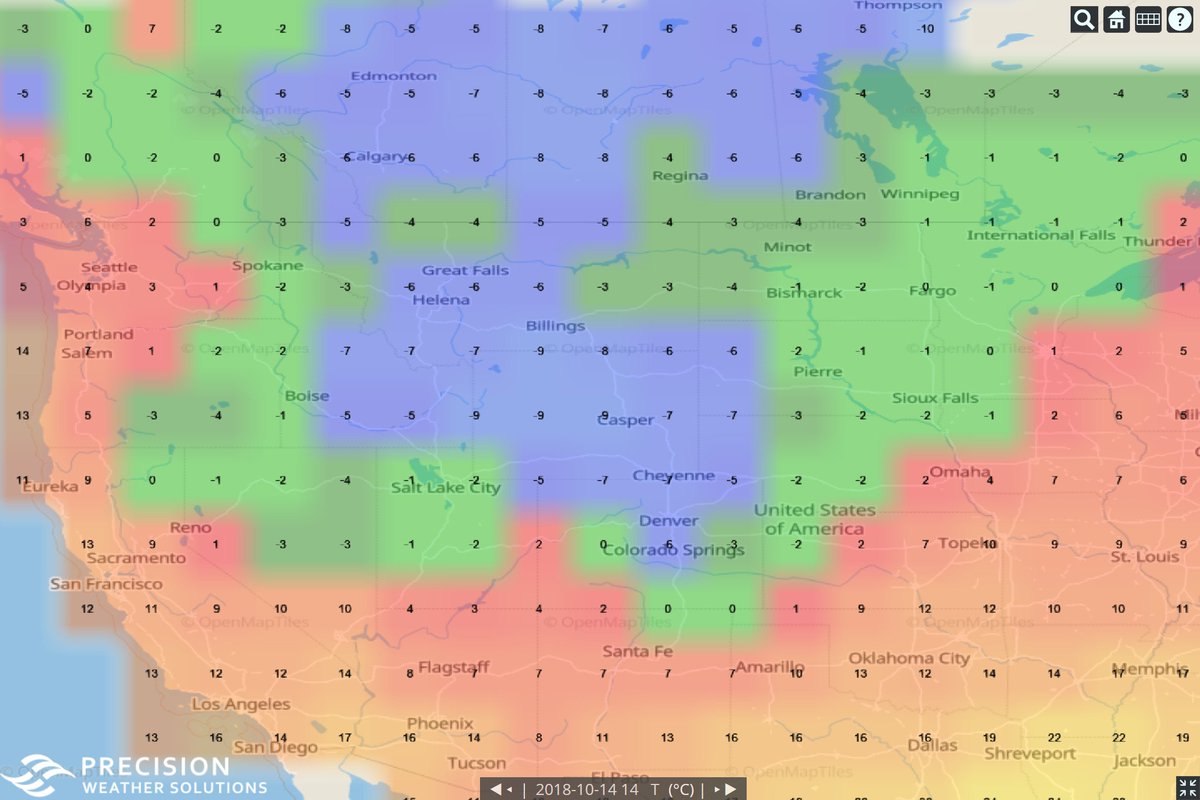
Sun Oct 14 14:24:16 +0000 2018NQO1:p, NAD(P)H dehydrogenase, quinone 1 (H. sapiens) 🔗 Small highly acetylated phosphoprotein, commonly observed in kinome-specific studies 🔗
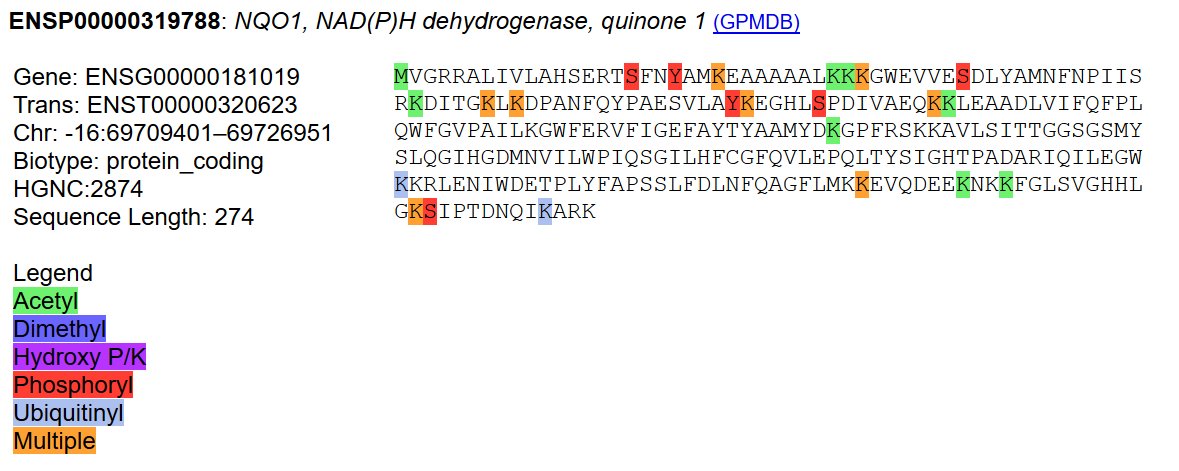
Sat Oct 13 14:48:56 +0000 2018NQO2:p, NAD(P)H dehydrogenase, quinone 2 (H. sapiens) 🔗 Small, commonly observed intracellular phosphoprotein, best observations in affinity separation studies aimed at kinase characterization 🔗
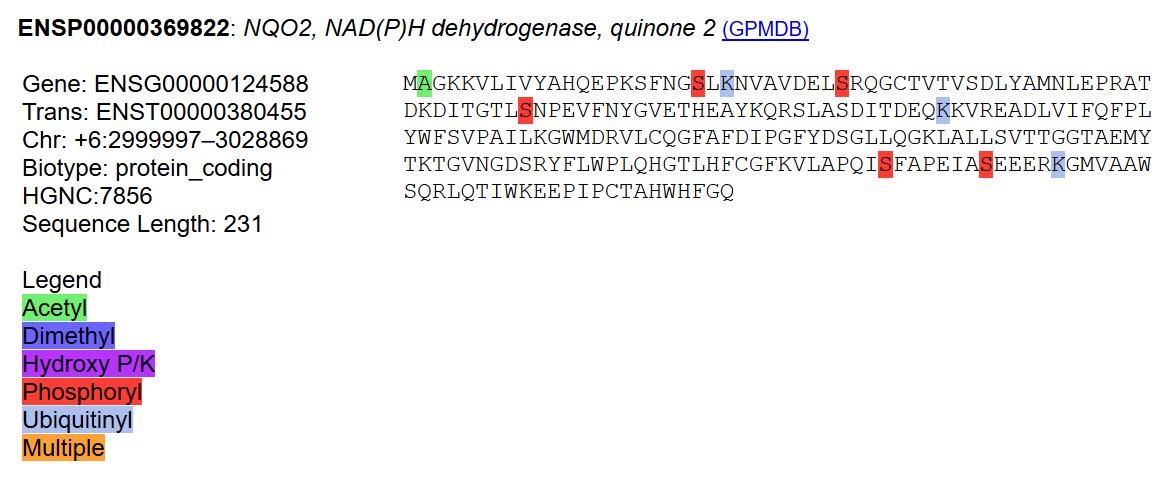
Fri Oct 12 16:13:20 +0000 2018Ground station rainfall totals for Oct. 11 (in mm) showing the path of Michael through NC, VA, MD and DE 🔗
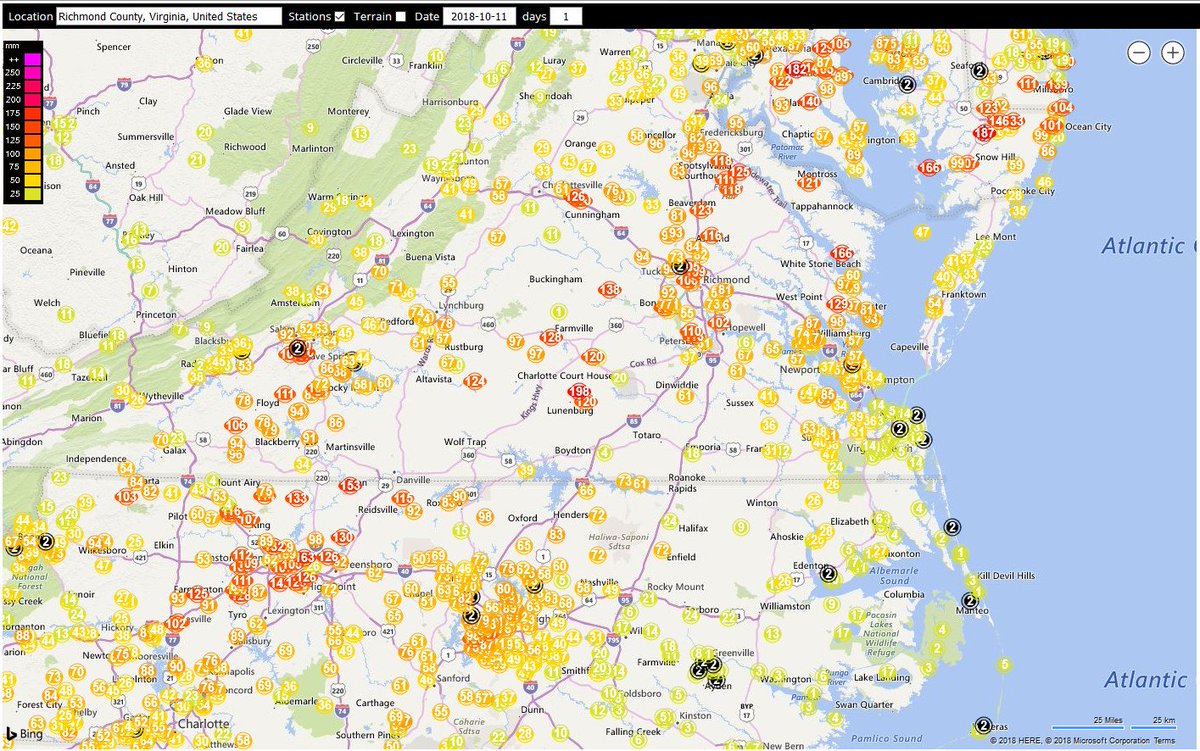
Fri Oct 12 12:54:07 +0000 2018PABPC4:p, poly(A) binding protein cytoplasmic 4 (H. sapiens) 🔗 Mid-sized, highly modified intracellular protein, very commonly observed in tissues and cell lines, but absent in erythrocytes 🔗
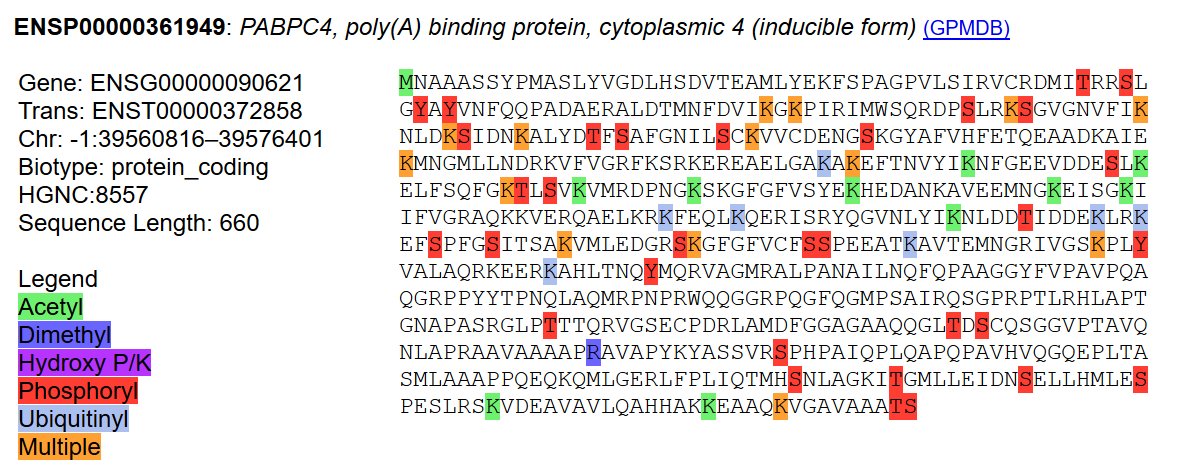
Fri Oct 12 12:44:54 +0000 2018Wide spread ground clutter artifacts on US NEXRAD reflectivity this morning 🔗
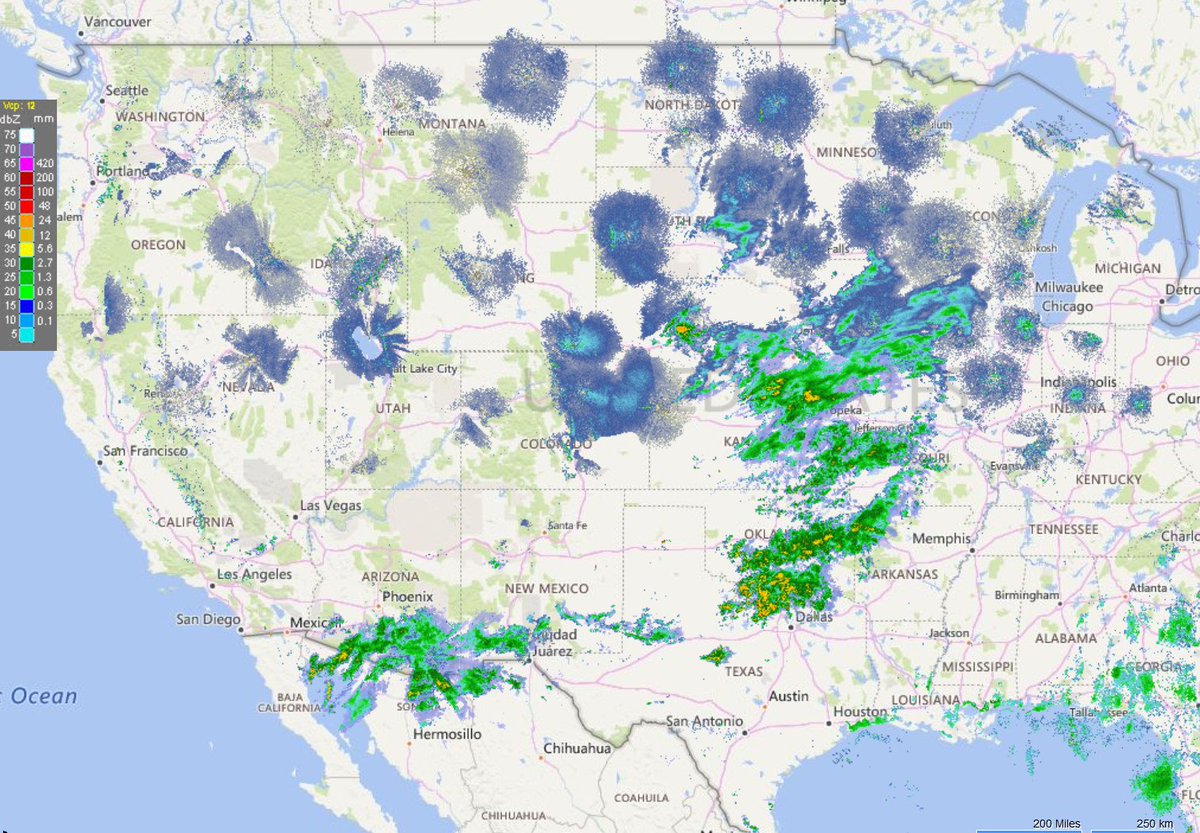
Thu Oct 11 17:43:06 +0000 2018Hurricane (2nd time) Leslie is still aimlessly wandering across the Atlantic and to the south, TS Nadine is heading west from Cabo Verde 🔗
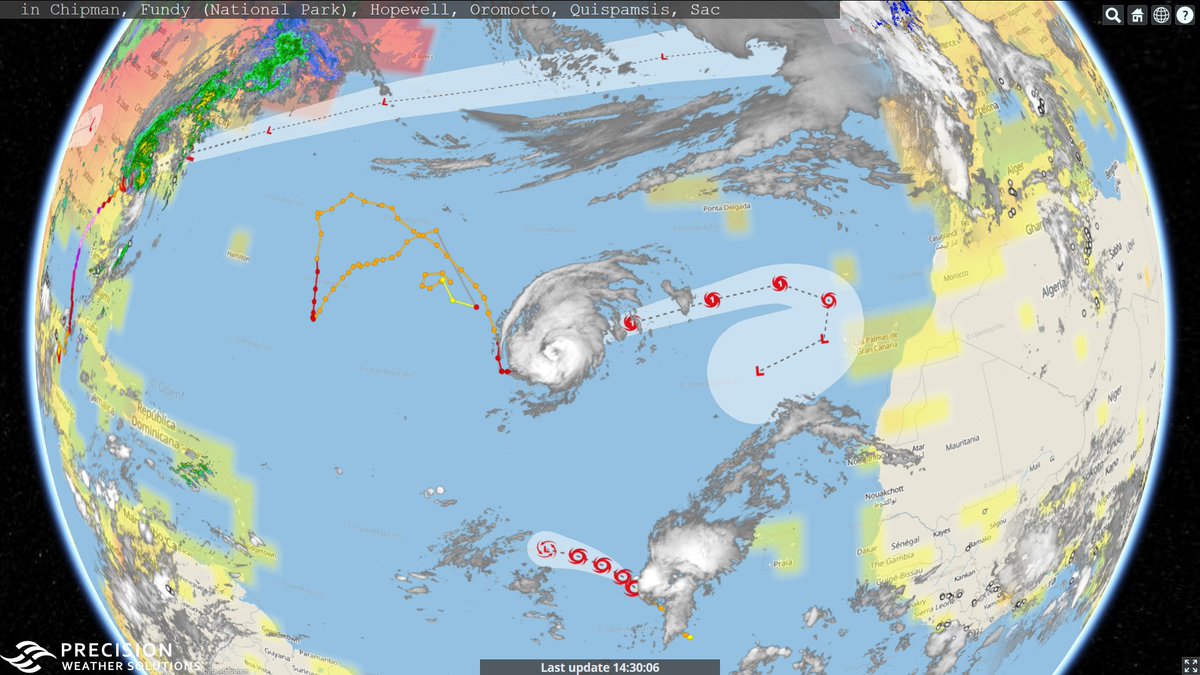
Thu Oct 11 14:49:53 +0000 2018For anyone who may have doubted that the biomedical research literature has simply become a pay-to-play vanity publishing business, look no further 🔗
Thu Oct 11 13:25:50 +0000 2018MX1:p, MX dynamin like GTPase 1 (H. sapiens) 🔗 Mid-sized intracellular phosphoprotein, where many of the best observations come from the CPTAC program. Shares some peptide ids with MX2. 🔗
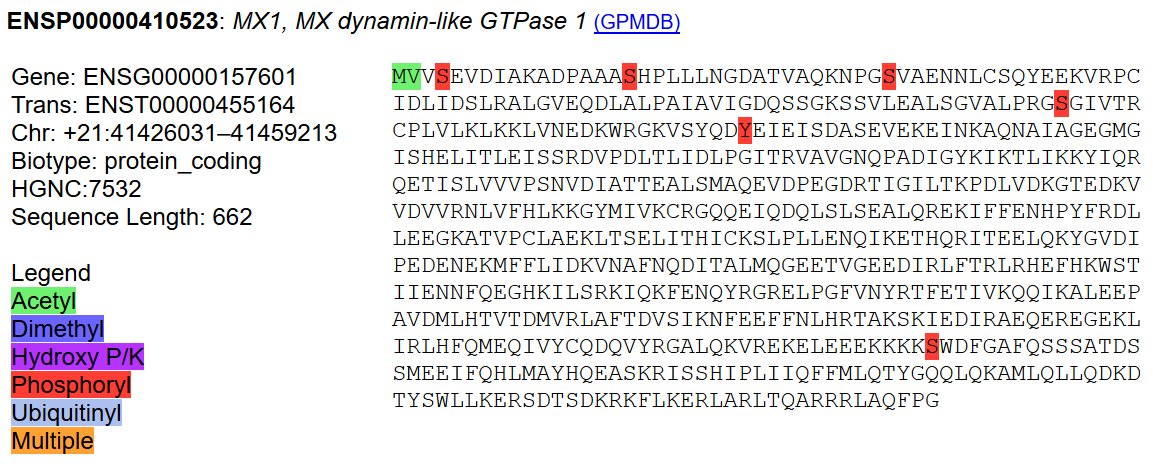
Thu Oct 11 13:10:12 +0000 2018TC Titli moving off the Bay of Bengal into eastern India, while the outer edge of TC Luban beginning to affect Oman 🔗

Wed Oct 10 19:41:00 +0000 2018@ypriverol No. I used to make something like that available, but I don't any more. It was very comp. intensive to curate and there was very little interest.
Wed Oct 10 14:27:05 +0000 2018This morning has light frost extending all the way down to Colorado Springs, with killing frost spread over most of Saskatchewan 🔗
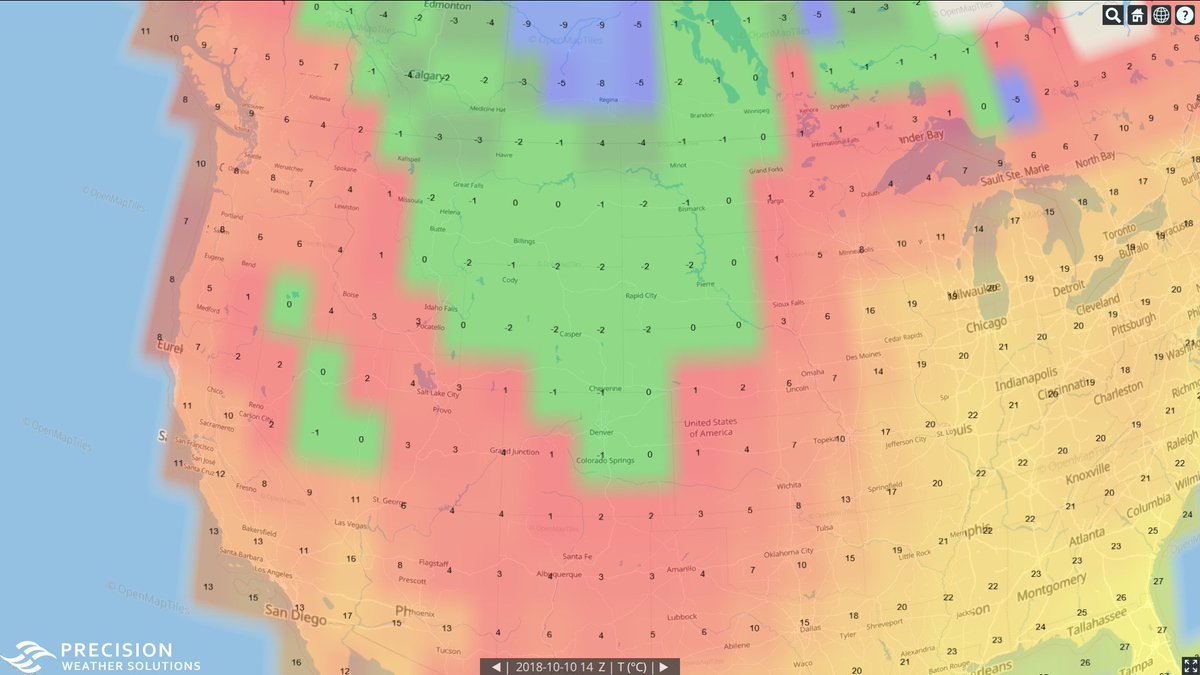
Wed Oct 10 13:35:42 +0000 2018TC Luban appears to be still pretty organized, but heading on a more northerly track than yesterday. It still looks like it will affect the Gulf of Aden as it tracks into the western Arabian Peninsula 🔗
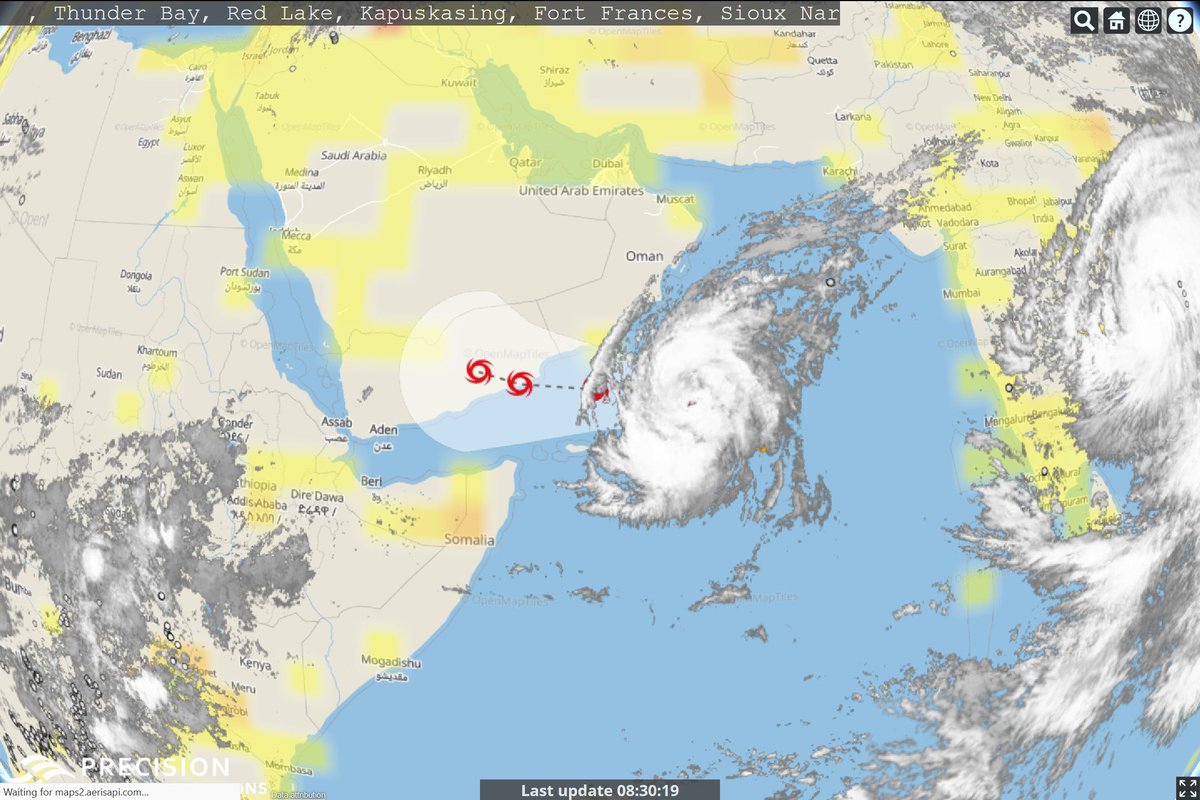
Wed Oct 10 12:46:06 +0000 2018GBP1:p, guanylate binding protein 1 (H. sapiens) 🔗 Mid-sized unmodified intracellular protein, commonly found in most tissues and cell lines 🔗
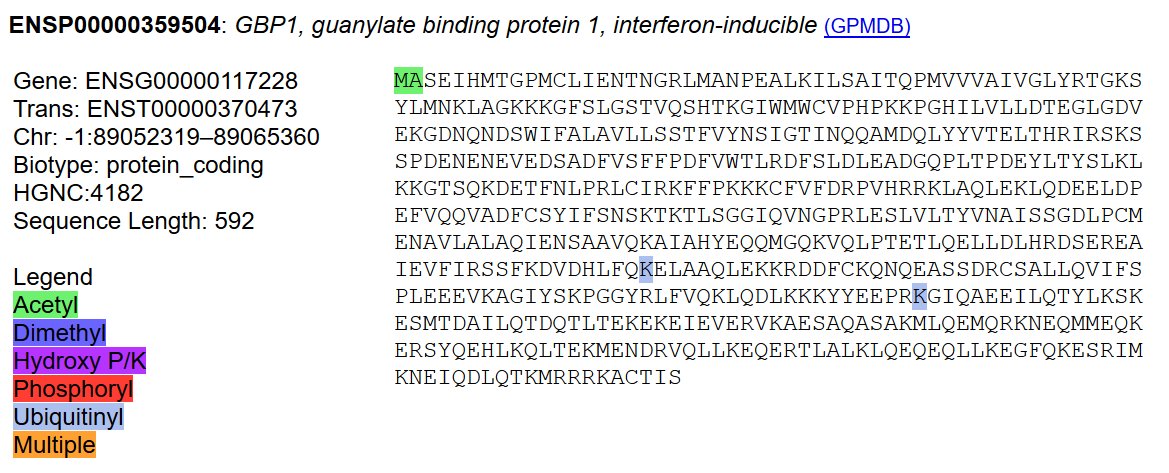
Wed Oct 10 12:33:41 +0000 2018Yikes ... Michael really blew up over night. Favorable conditions and lots of energy in the Gulf of Mexico moved it up to a Cat 4 🔗
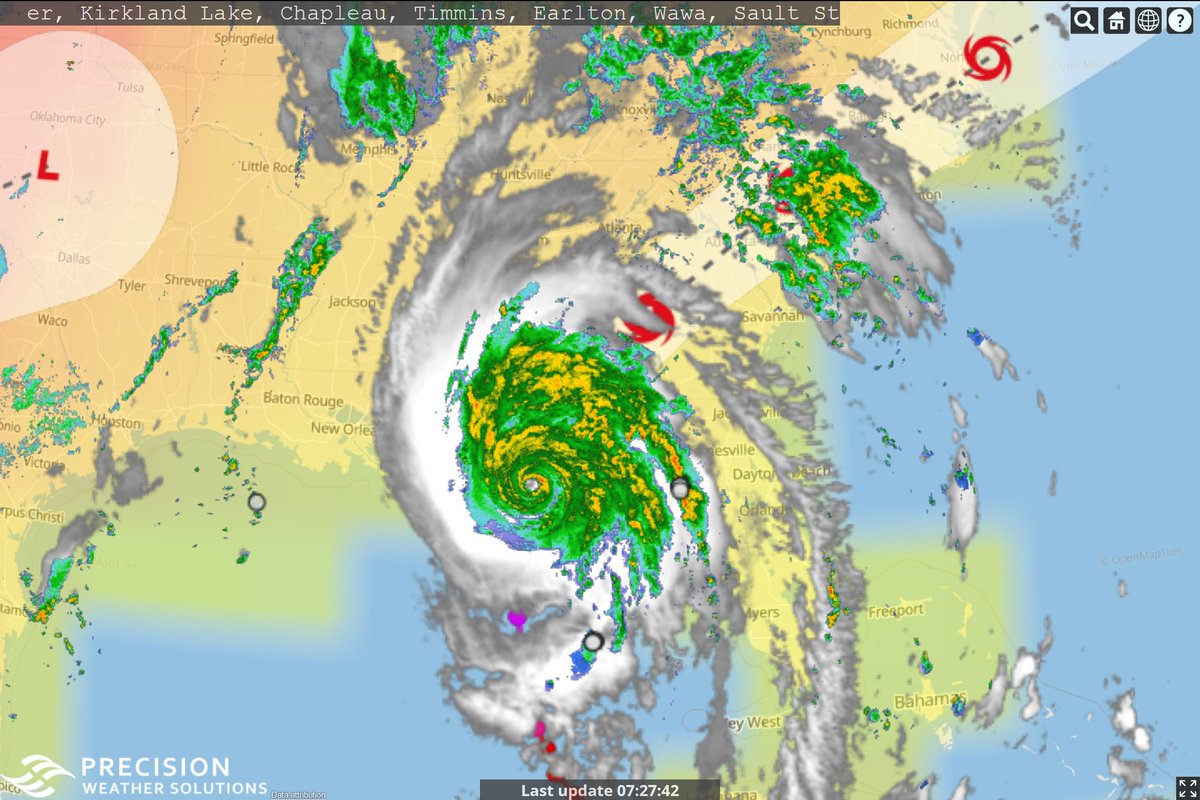
Tue Oct 09 15:20:47 +0000 2018@Abdi678 Noted.
Tue Oct 09 14:33:33 +0000 2018IFI16:p, interferon gamma inducible protein 16 (H. sapiens) 🔗 Mid-sized highly modified protein, with at least 35 ubiquitinylation K acceptor sites, along with lots of acetylation and phosphorylation #pdj 🔗
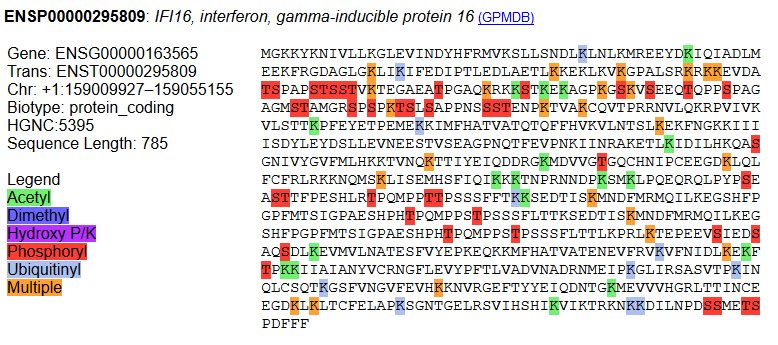
Tue Oct 09 14:28:51 +0000 2018A fairly well organized Tropical Storm Luban looks like it is going bring a lot of rain to Yemen, Djibouti, northern Somalia, Eritrea and Ethiopia in the next few days 🔗

Tue Oct 09 14:25:10 +0000 2018Another day of heavy rain across Kansas because of a stationary front across the middle of the US, with Michael and Sergio on course 🔗

Mon Oct 08 17:29:07 +0000 2018Proteomics is getting pretty baroque (rococo?) 🔗 : I'm beginning to wonder if even the editor reads this stuff anymore.
Mon Oct 08 17:25:30 +0000 2018It looks like a well-organized Michael is going to take a swing at the Florida Panhandle and Alabama coast in a day to 2, destabilizing the stationary front that has been pretty static since Thursday 🔗
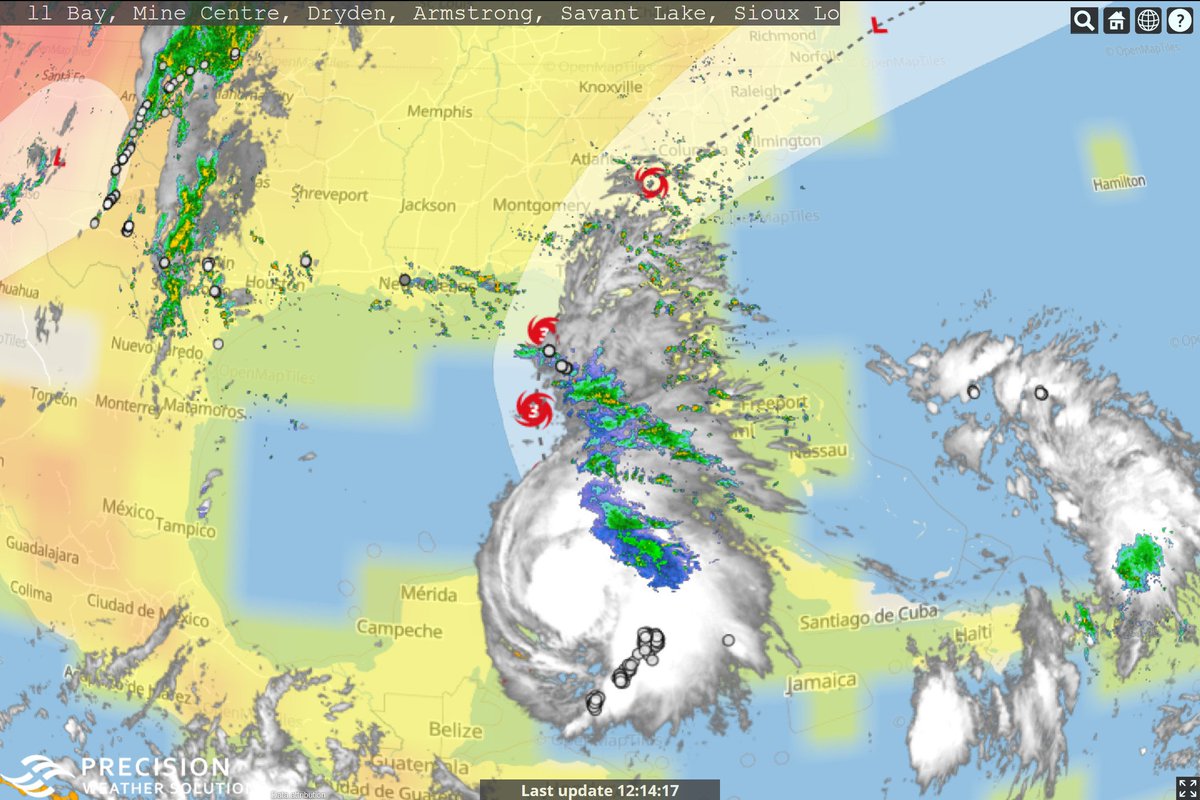
Mon Oct 08 16:19:03 +0000 2018VGF:p, VGF nerve growth factor inducible (H. sapiens) 🔗 Mid-sized rarely modified protein, prominent in melanoma-derived cell lines #pdj
Sun Oct 07 13:19:59 +0000 2018GBP2:p, guanylate binding protein 2, interferon-inducible (H sapiens) 🔗 Mid-sized unmodified protein, commonly found in many tissues and cell lines #pdj
Sat Oct 06 21:48:48 +0000 2018It looks like 2 tropical storms are winding up to hit North America, while a line of thunderstorms is running along a cold front from the Finger Lakes in New York state to Monterey, Mexico. 🔗
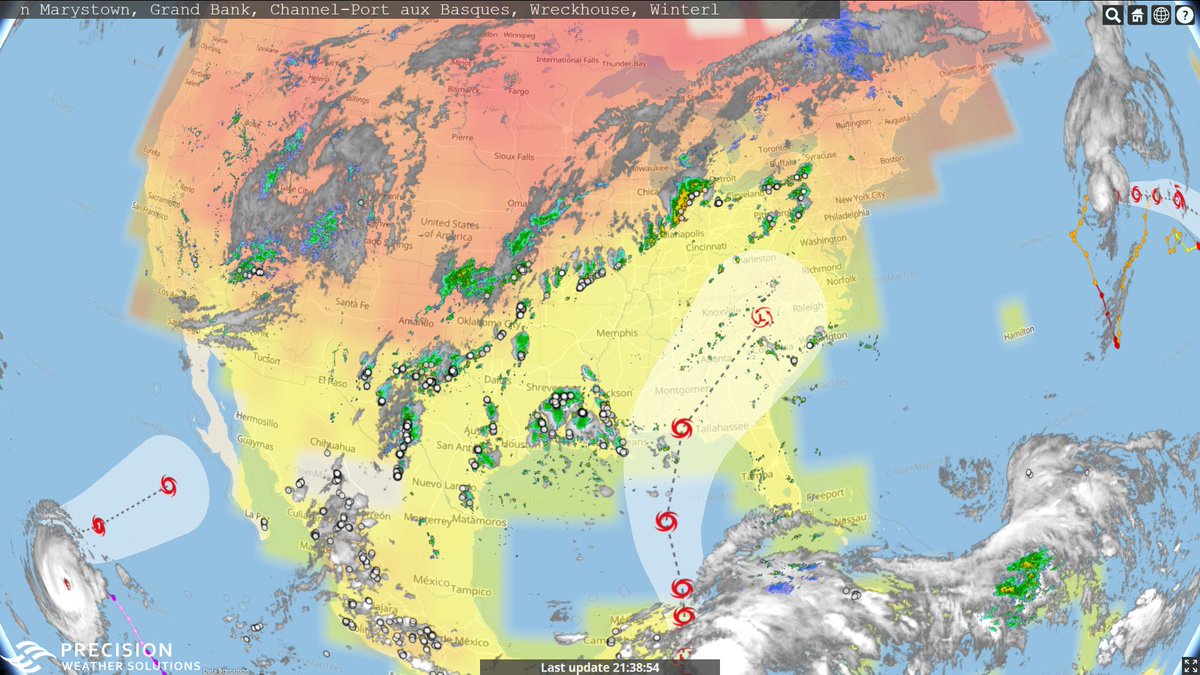
Fri Oct 05 18:46:19 +0000 2018Three storm fronts marching across North America 🔗
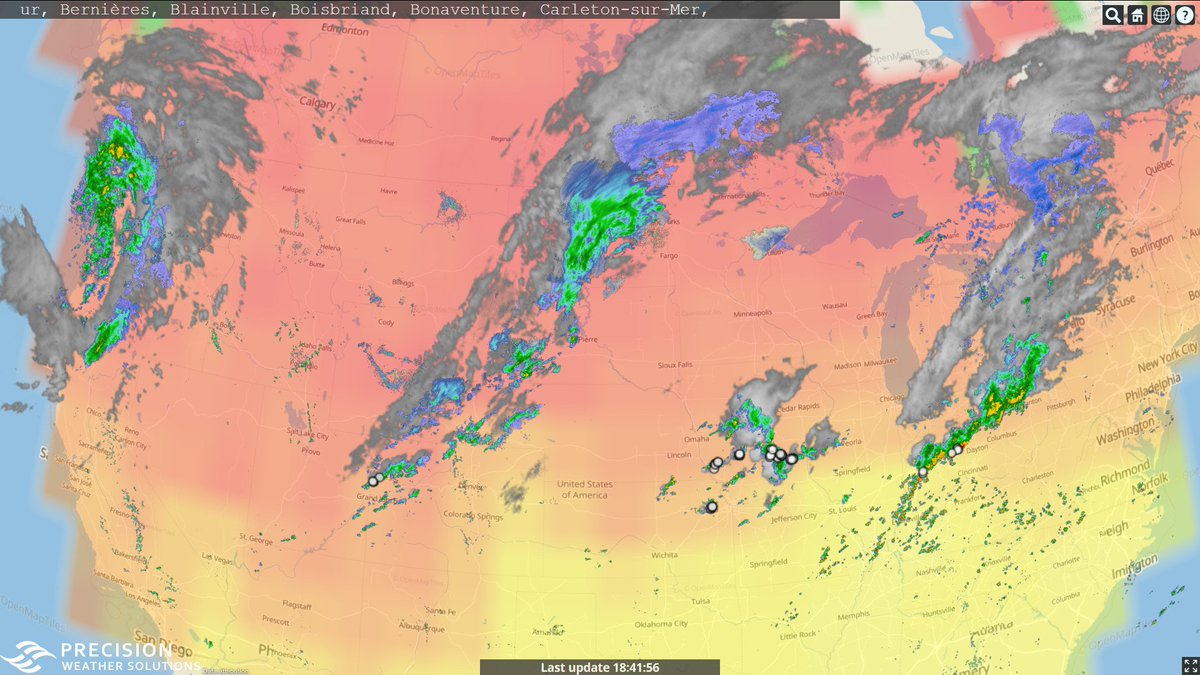
Fri Oct 05 15:00:17 +0000 2018Kong-Rey is near Korea now: the storm has become much less organized as high level winds have pulled its western edge into a long streamer 🔗
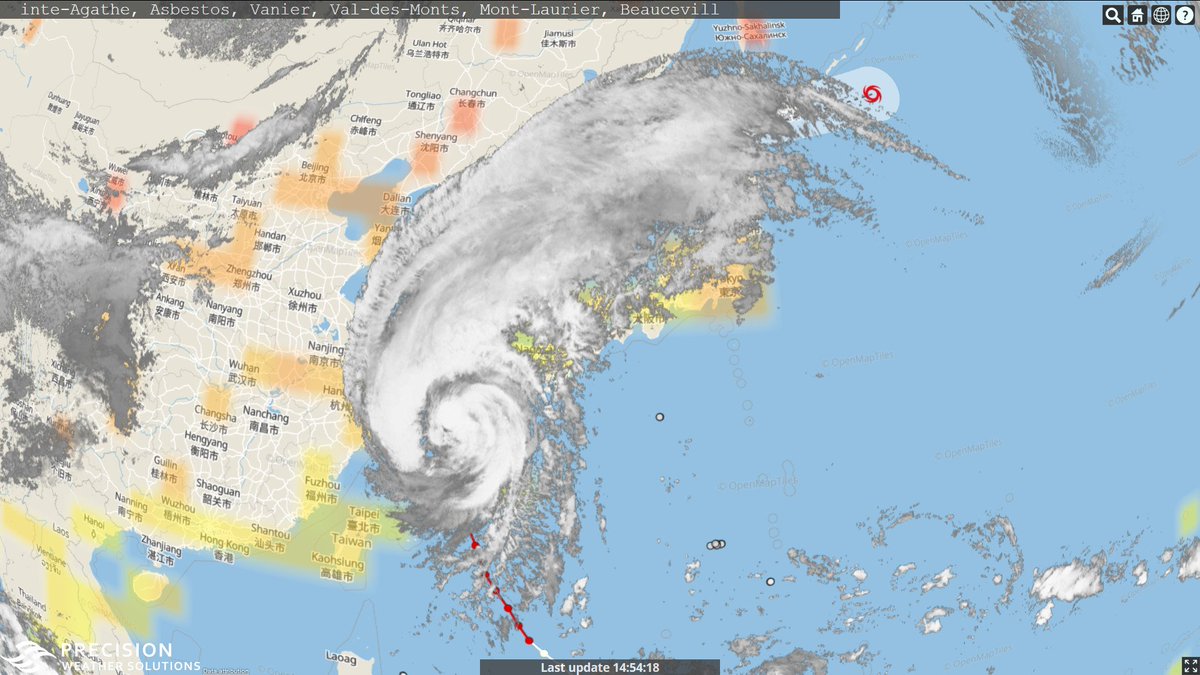
Thu Oct 04 13:18:13 +0000 2018@msf_de Love the slogan
Thu Oct 04 13:17:34 +0000 2018Today's cold weather outbreak across the Northern Plains, as of 8:15 CDT 🔗
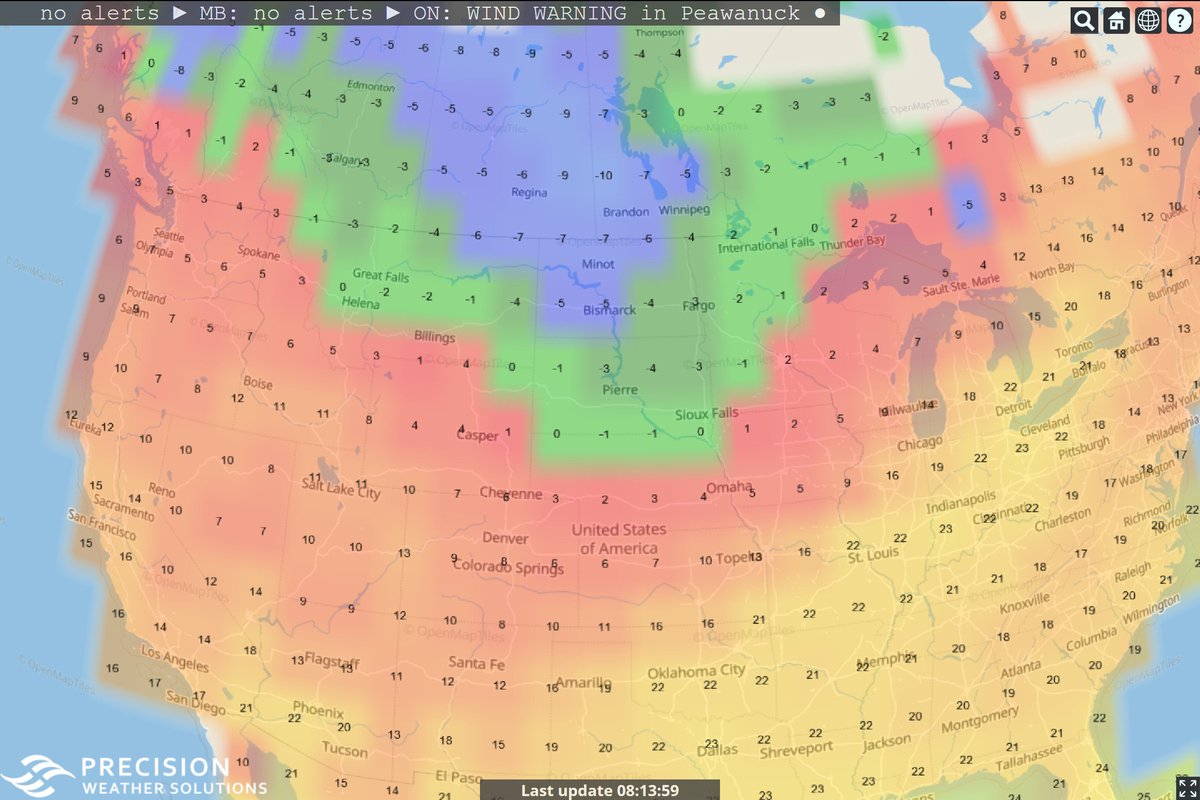
Tue Oct 02 18:27:51 +0000 2018@AlexUsherHESA It is a great chance for another Canadian university to scoop her up with a full Prof + startup money offer: having a Nobel Laureate on staff gives a big boost to a university's international ratings.
Tue Oct 02 15:38:44 +0000 2018It looks like Typhoon Kong-Rey is going to make a direct hit on the large shipping port at Busan, SKR 🔗

Tue Oct 02 15:32:11 +0000 2018TS Rosa ends up with a direct hit on Phoenix, generating 20-40 mm of rainfall overnight (from CocoRaHS stations) 🔗

Mon Oct 01 14:25:40 +0000 2018And in North America, Rosa seems to be still on track to bring the rain to Phoenix 🔗
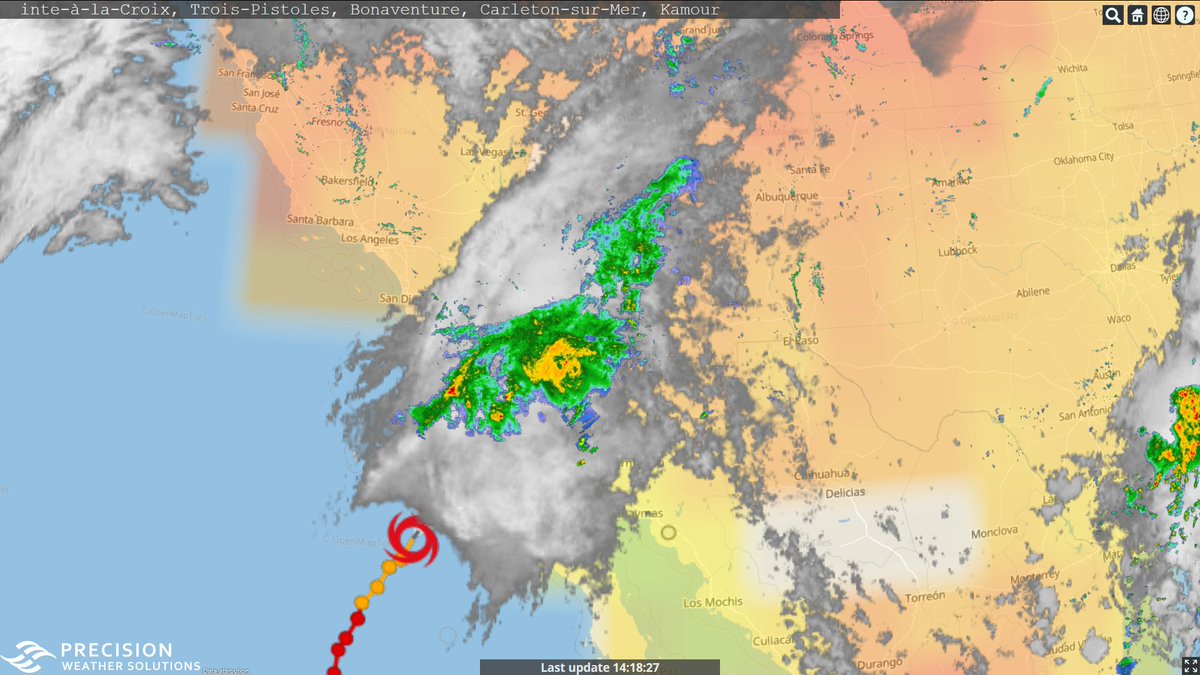
Mon Oct 01 14:24:44 +0000 2018Last week in was Typhoon Trami and Japan, this week it is Kong-Rey and Korea 🔗

Mon Oct 01 12:21:08 +0000 2018PDCD1:p, programmed cell death 1 (Homo sapiens) 🔗 Small, rarely observed protein, best identifications in HLA peptide or N-linked glycopeptide enrichment studies in lymphocytes #pdj
Sun Sep 30 13:21:06 +0000 2018RAC2:p, Rac family small GTPase 2 (H sapiens) 🔗 Small commonly observed protein, with no prominent SAVs but 7 acetyl and 7 ubiquitinyl acceptor K residues, 5 of which are shared #pdj
Sat Sep 29 13:48:43 +0000 2018Frost all the way down to Green Bay WI this morning 🔗
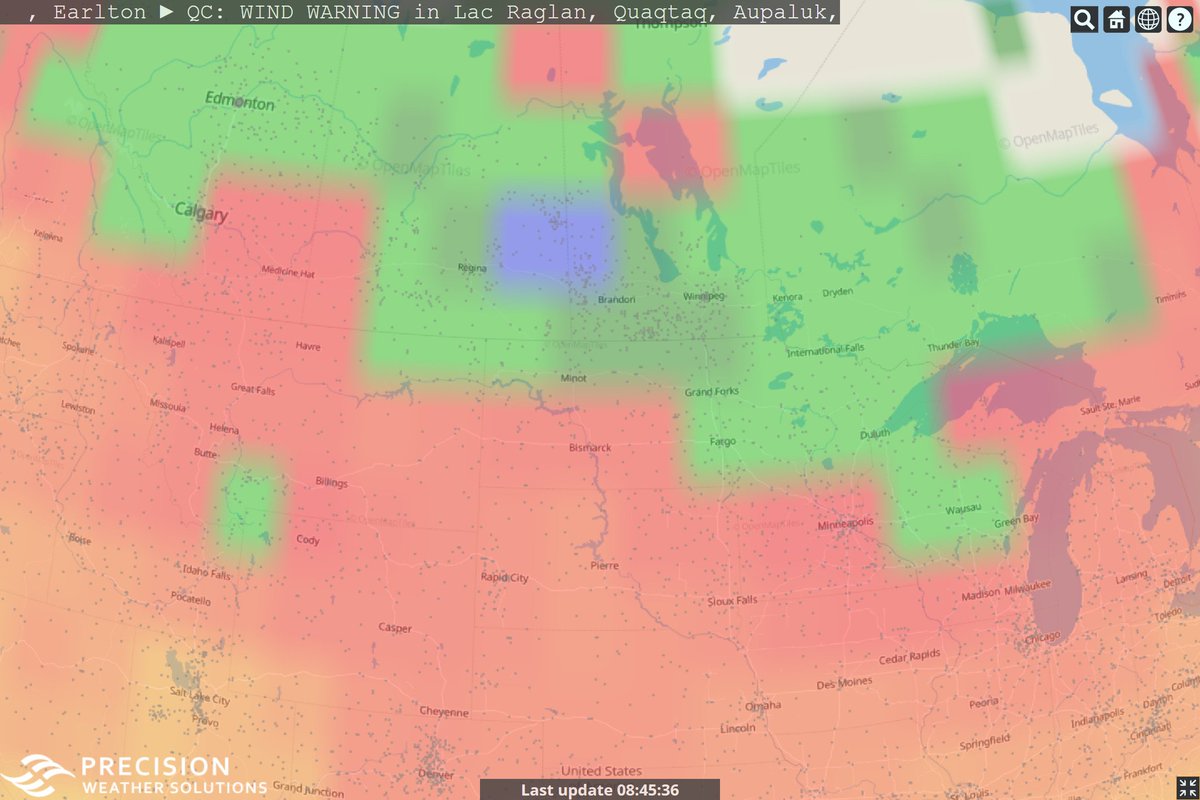
Sat Sep 29 13:37:08 +0000 2018RAC1:p, Rac family small GTPase 1 (H. sapiens) 🔗 Small commonly observed protein, with no prominent SAVs but 7 acetyl and 9 ubiquitinyl acceptor K residues (6 shared by both) #pdj
Fri Sep 28 12:31:30 +0000 2018It looks like Hurricane Rosa is going to hit Phoenix after it passes over the Baja California 🔗
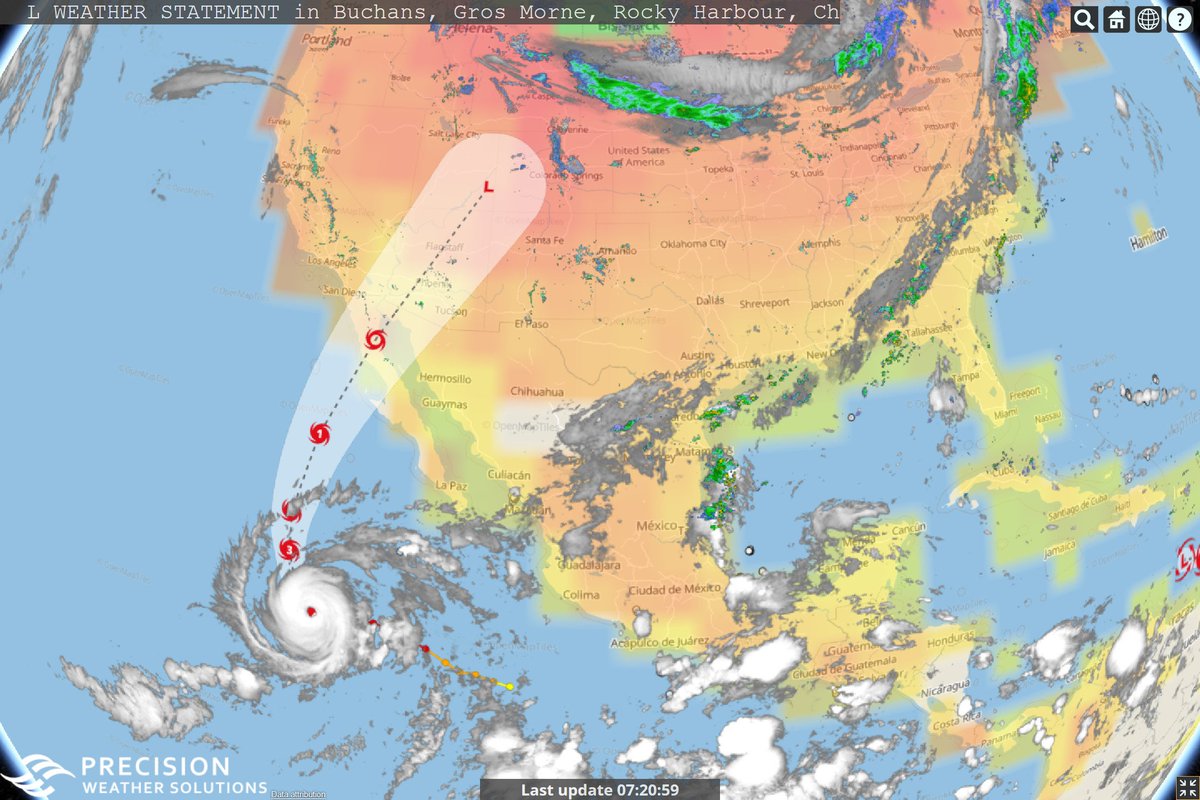
Fri Sep 28 12:26:51 +0000 2018Plenty of frost (green & blue) across the northern prairies this morning 🔗
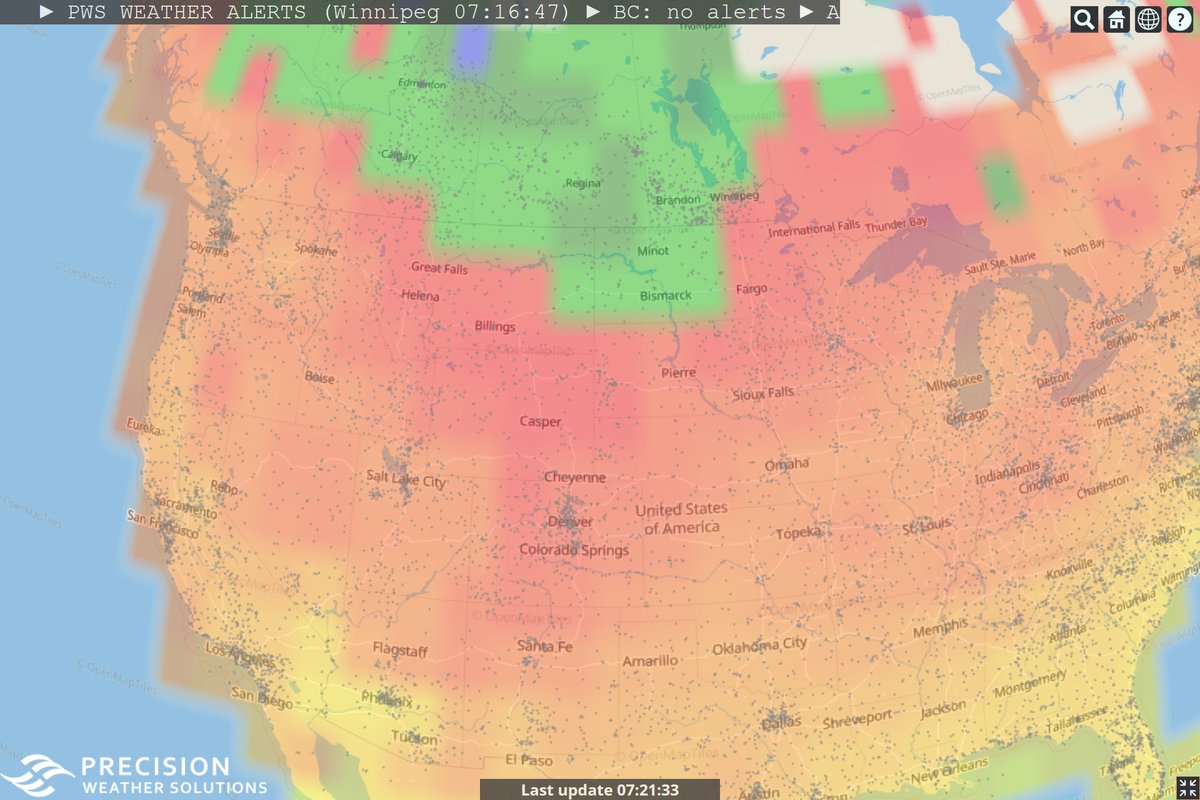
Thu Sep 27 21:59:30 +0000 2018@UCDProteomics Brett, I don't know if this is directly on point for your work, but this study on bovine lactoferrin gastric digestion (🔗) suggests that gastric pepsin may not produce very much cleavage at all.
Thu Sep 27 03:15:48 +0000 2018@UCDProteomics Why unknown mods? Cow's milk isn't prone to many environmental artifacts. If it was an adult rat it would be pepsin, if an infant it would be rennin cleavage.
Tue Sep 25 14:16:02 +0000 2018Looks like Typhoon Trami is still very well organized and headed for landfall in southern Japan: at least that is where the upper level steering winds seem to be heading right now .. 🔗


Tue Sep 25 12:24:31 +0000 2018Pretty solid block of frost (green) across New Brunswick this morning (election-related or coincidence?) 🔗
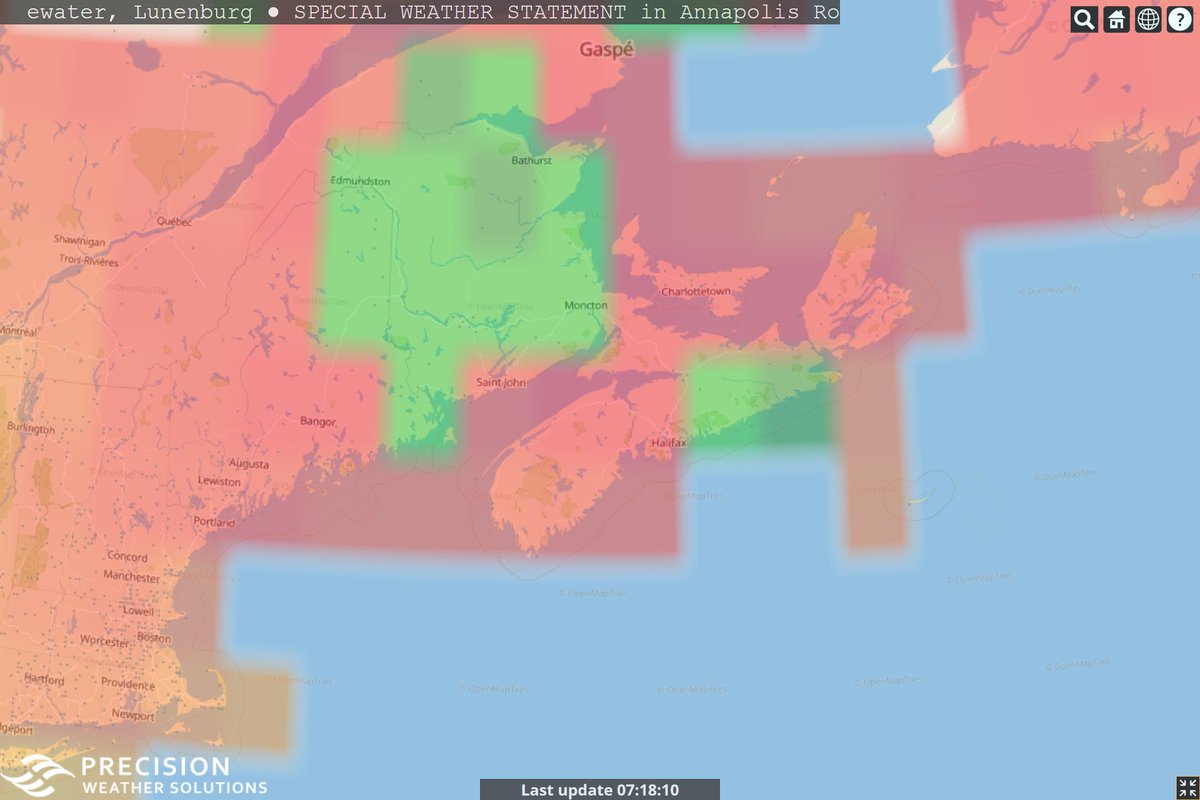
Mon Sep 24 21:54:20 +0000 2018@ThatEricAlper Led Zeppelin (I) from the Autumn Stone in Winnipeg
Mon Sep 24 15:12:42 +0000 2018@ypriverol @dtabb73 @lukas_k @lgatt0 @mvaudel @compomics @ProteomicsNews I would recommend that you replace the "Pathname" entry in "FileProperties" with a hash value rather than the full path name. Most people end up with their user name in the path, which is a pretty big security issue if it is easily available.
Mon Sep 24 15:01:38 +0000 2018Typhoon Trami is looking pretty well organized this morning 🔗

Mon Sep 24 12:37:51 +0000 2018@PastelBio The ubiquitin & SUMO data available are really good & don't agree with the conventional biological ideas on the subject.
Sun Sep 23 12:50:03 +0000 2018Frost fairly general across the Northern Prairie in Canada - none in the continental US today 🔗
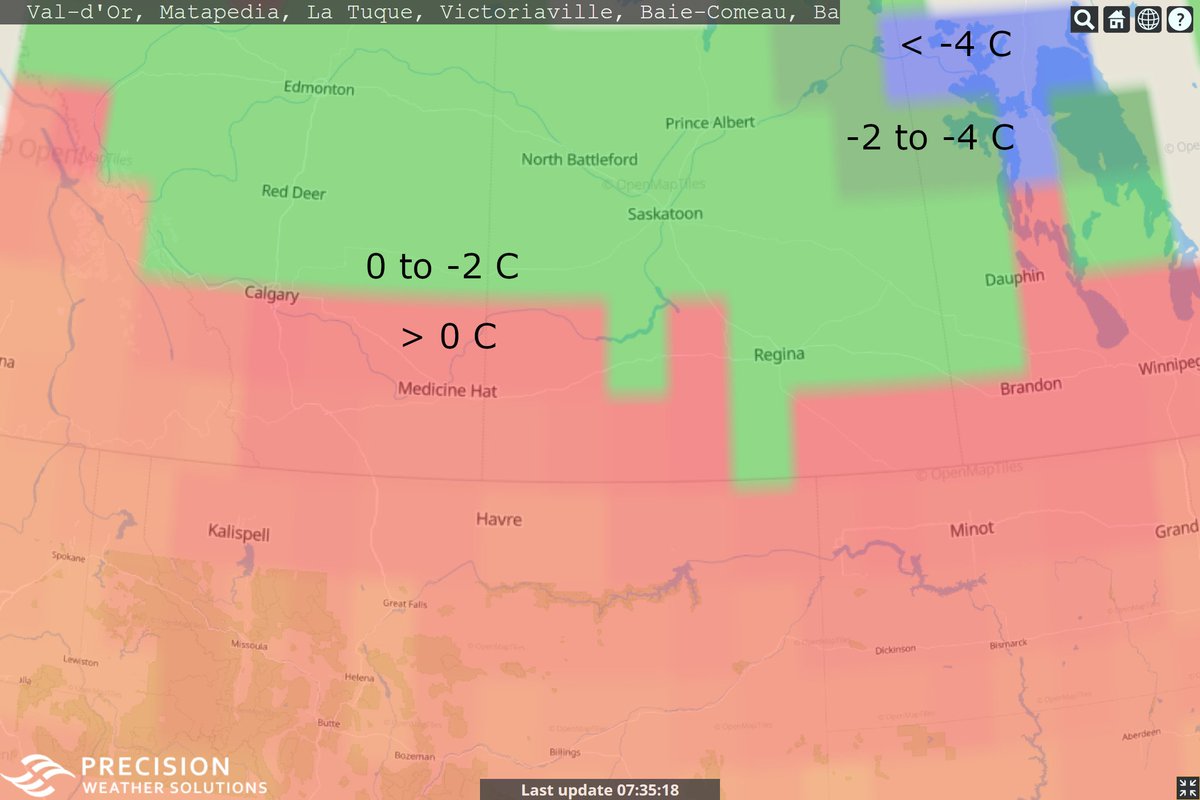
Sat Sep 22 15:20:07 +0000 2018The current status of the slowly moving front (yellow is hotter) that has been driving rainfall in the central/upper-midwestern/northeastern US for the past few days 🔗
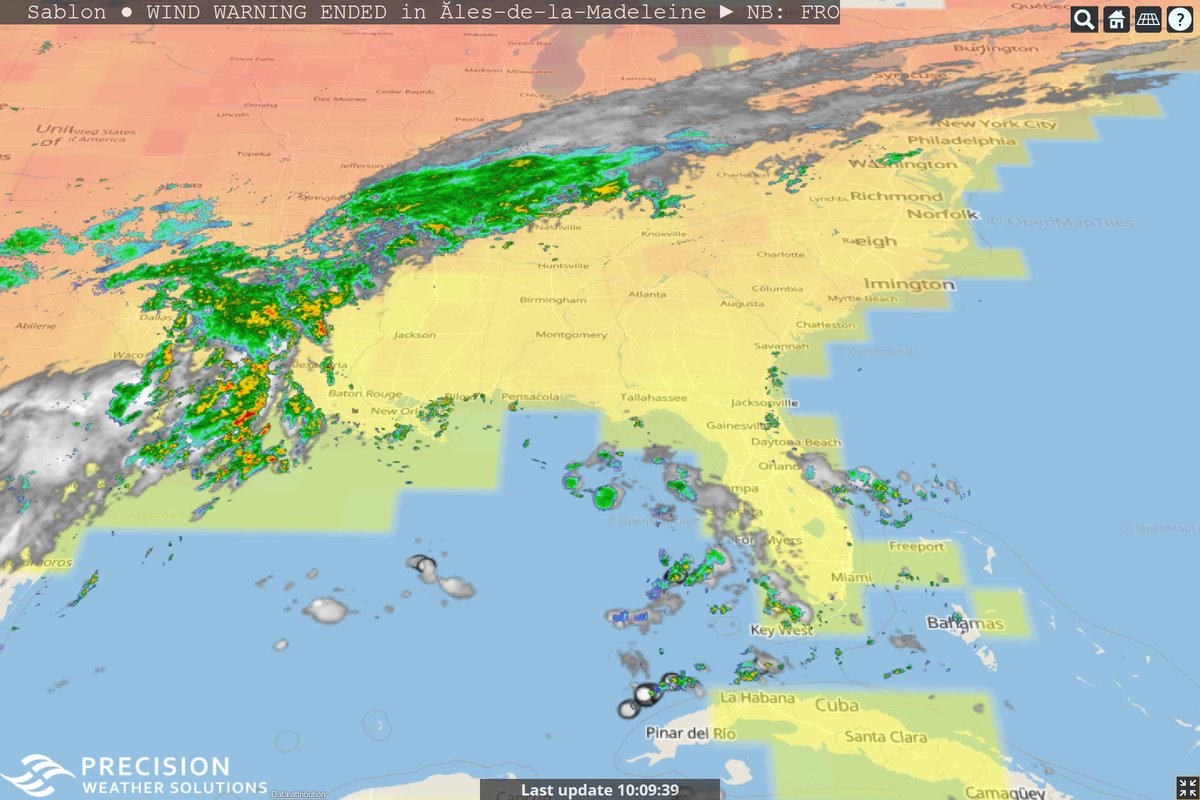
Sat Sep 22 14:04:30 +0000 2018Frost in the Northern Prairies this morning, with a better colour mapping 🔗
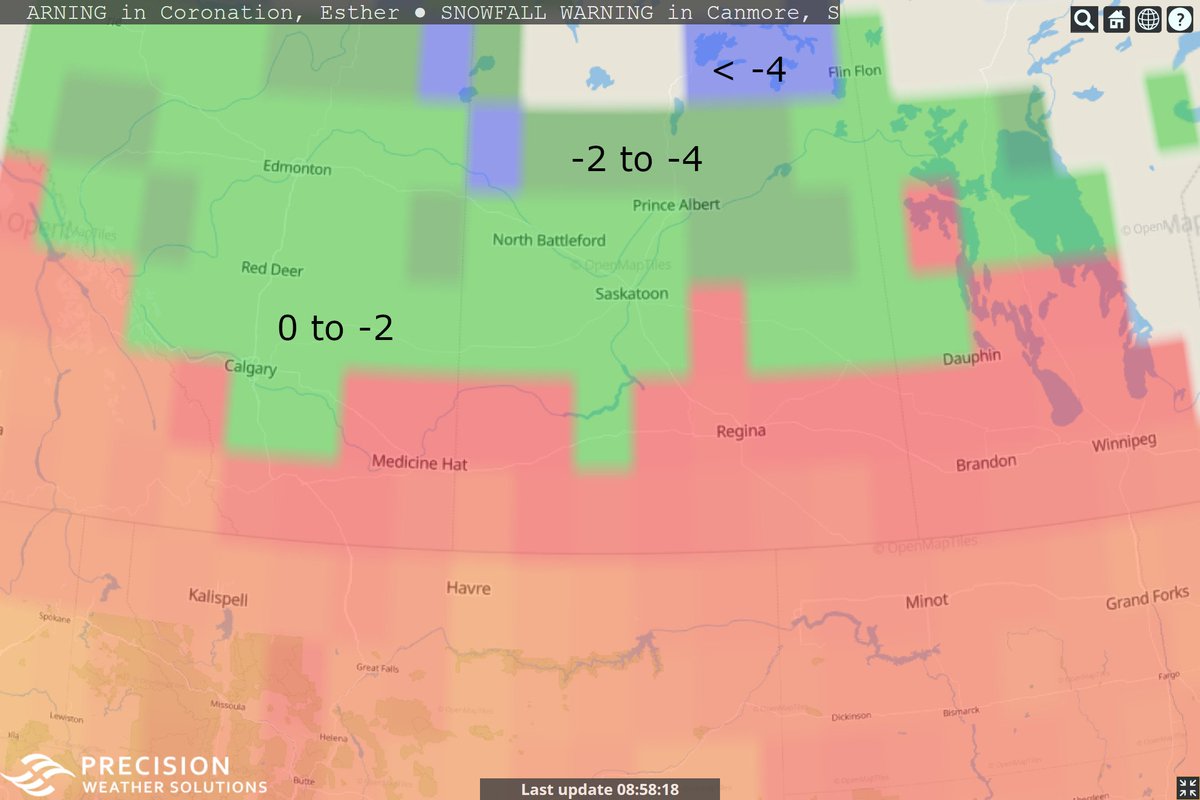
Sat Sep 22 12:39:52 +0000 2018Plenty of frost (blue) across the Canadian Prairies this morning 🔗
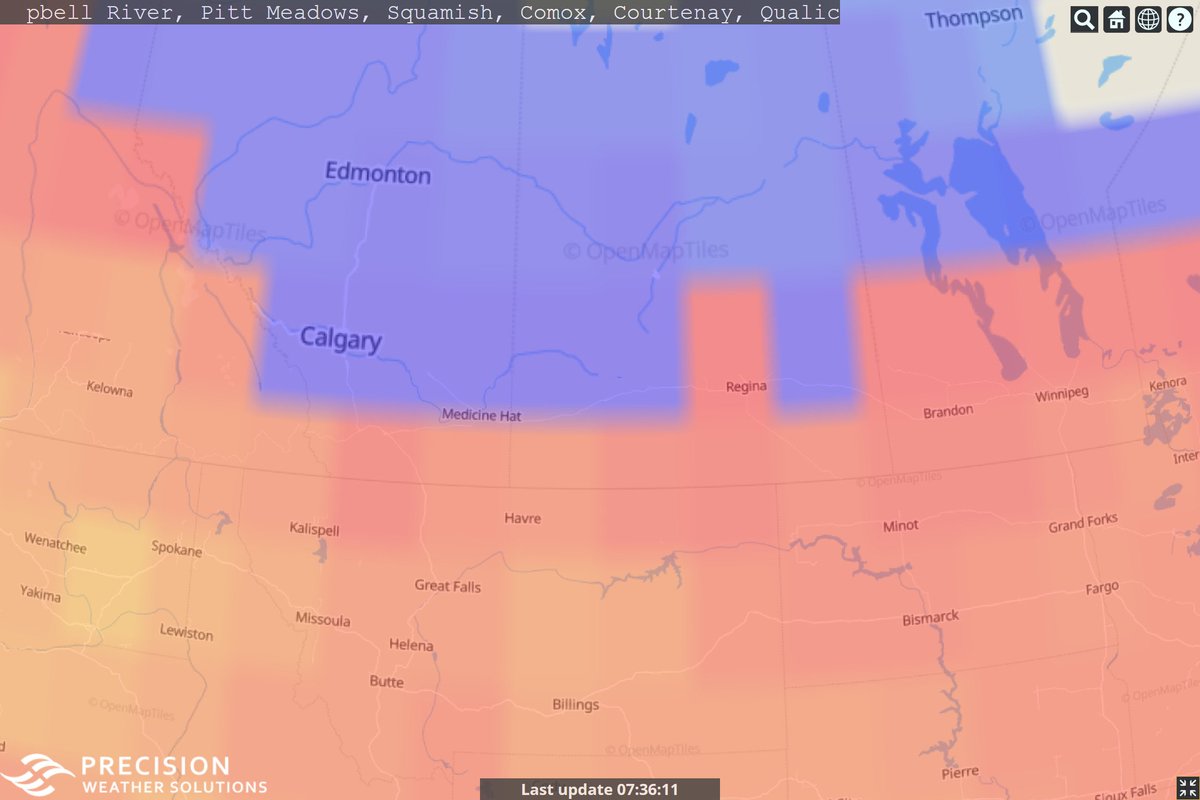
Fri Sep 21 11:52:44 +0000 2018Some frost (blue) across the northern plains and in the mountains 🔗
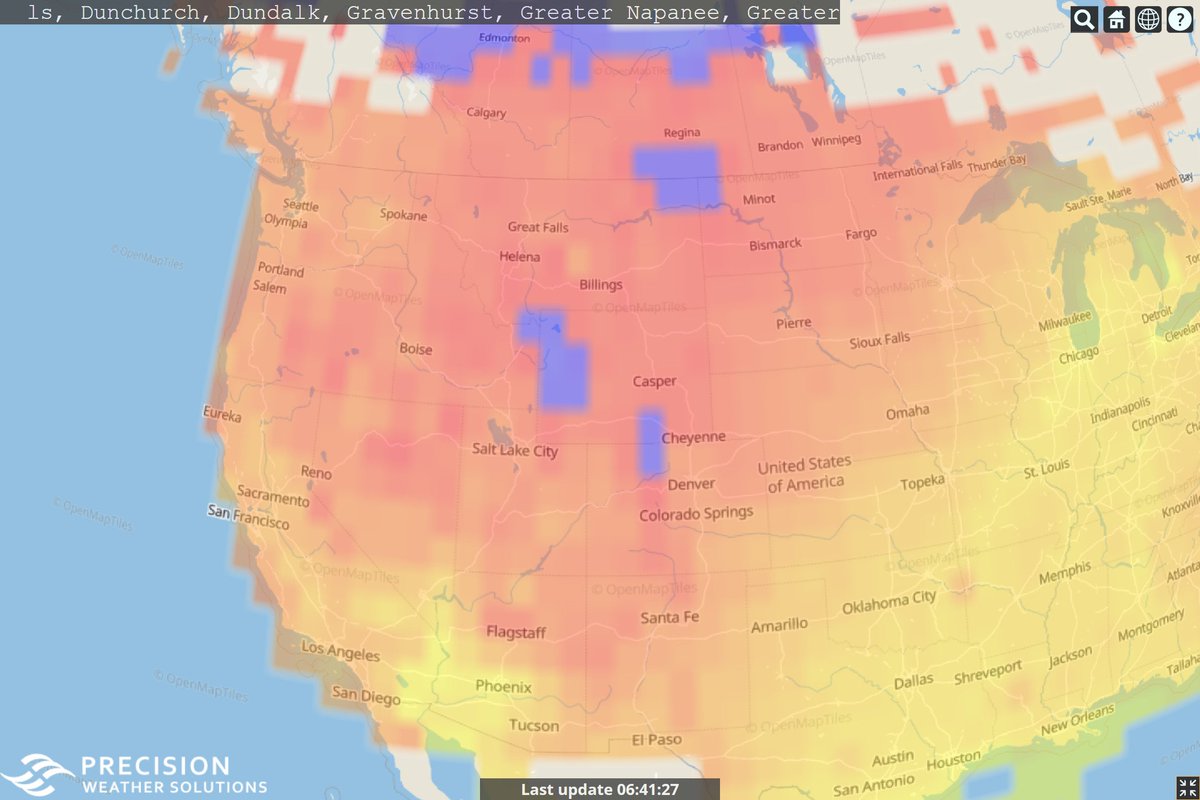
Thu Sep 20 21:44:17 +0000 2018@UCDProteomics But it's such a great way to find stuff no one else has seen!!! 🖤
Thu Sep 20 15:21:47 +0000 2018The start for today's weather in the US 🔗
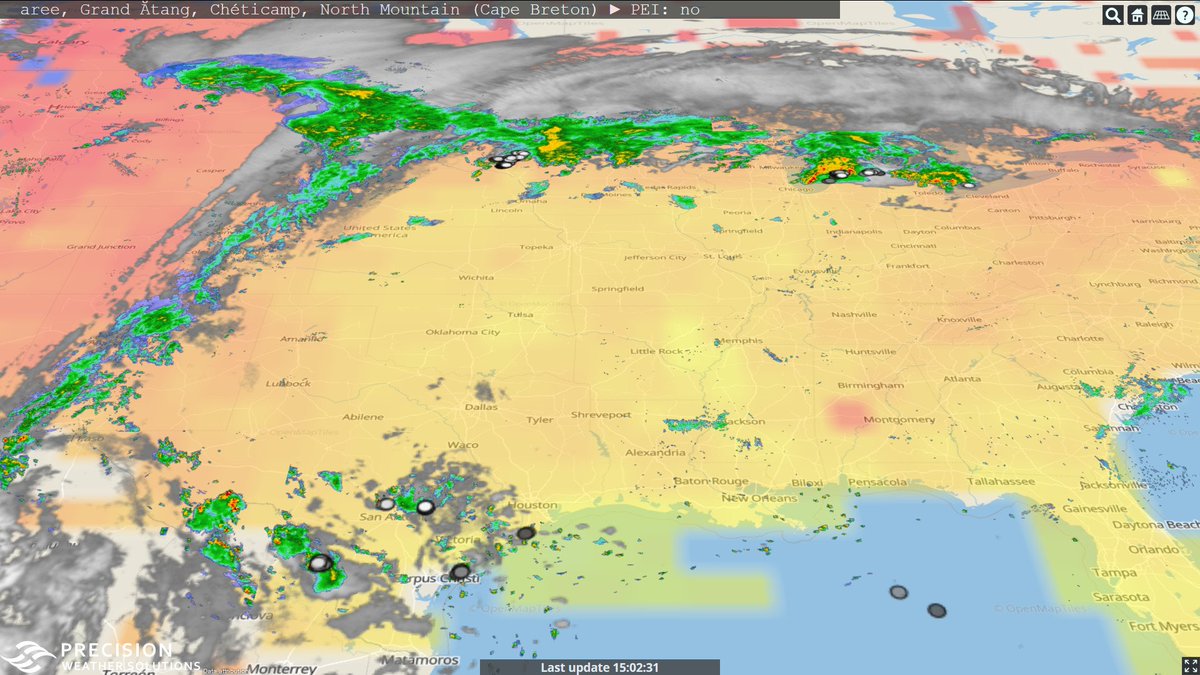
Wed Sep 19 12:54:17 +0000 2018I hadn't realized how much rain there was in Boston MA yesterday 🔗
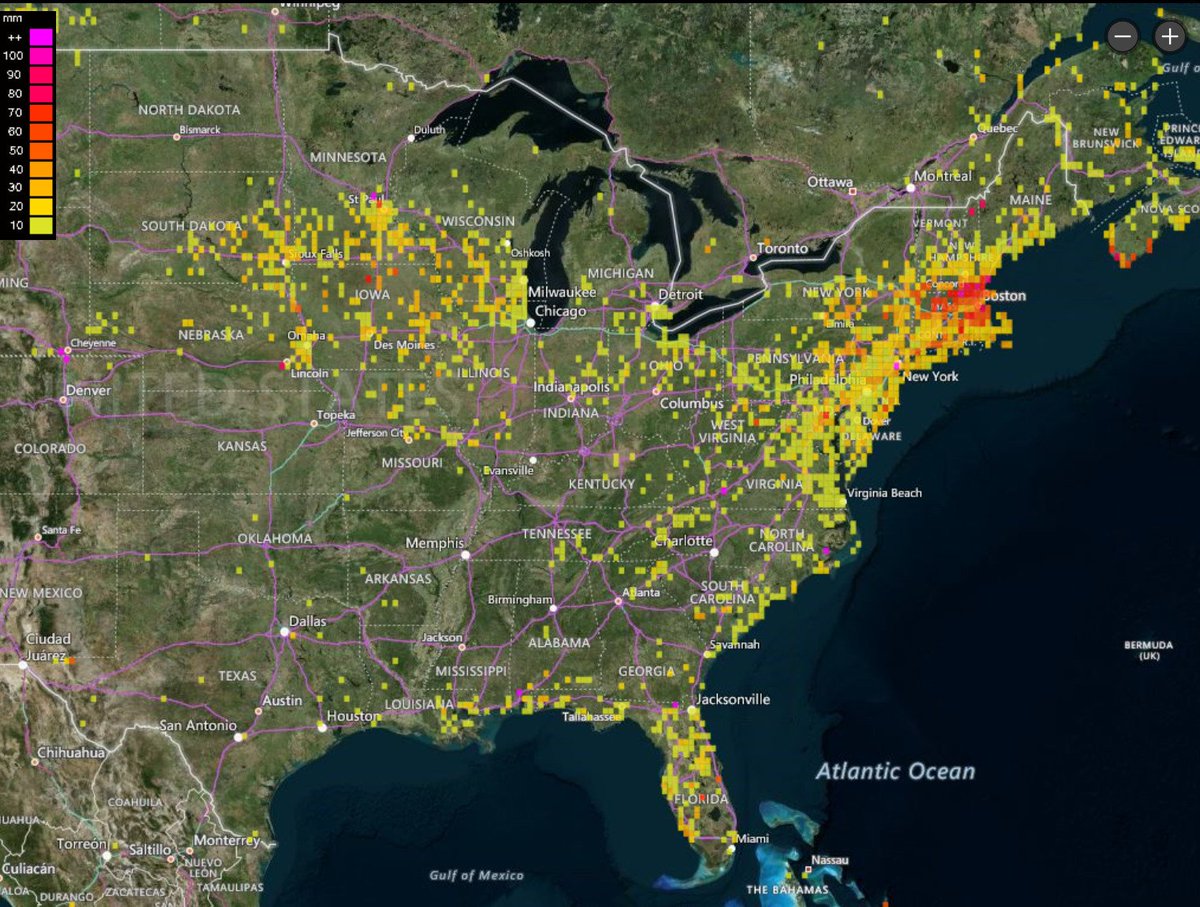
Wed Sep 19 12:49:53 +0000 2018Monsoon 🔗

Tue Sep 18 15:08:57 +0000 2018Well, proteomics won, so the people have spoken. I still don't think the proteomics community are particularly imaginative in this regard. The error rates commonly accepted in the field allow so much room to move it is often pretty simple to get to where you need to be.
Mon Sep 17 15:07:05 +0000 2018It isn't that the other methods don't try, but the DNA methylation crowd always seems to find creative new ways to throw in custom algorithms & "available-on-request" software tools crucial to their particular study "design".
Mon Sep 17 15:01:13 +0000 2018If I could vote, I'd go with DNA methylation, hands down.
Mon Sep 17 14:57:10 +0000 2018What type of biomedical research data is used in the most imaginative ways to support preconceived conclusions (often as formulated in a grant document)?
Mon Sep 17 14:28:54 +0000 2018The remnants of Helene appear to be making for a stormy day in northern Scotland and Ireland 🔗
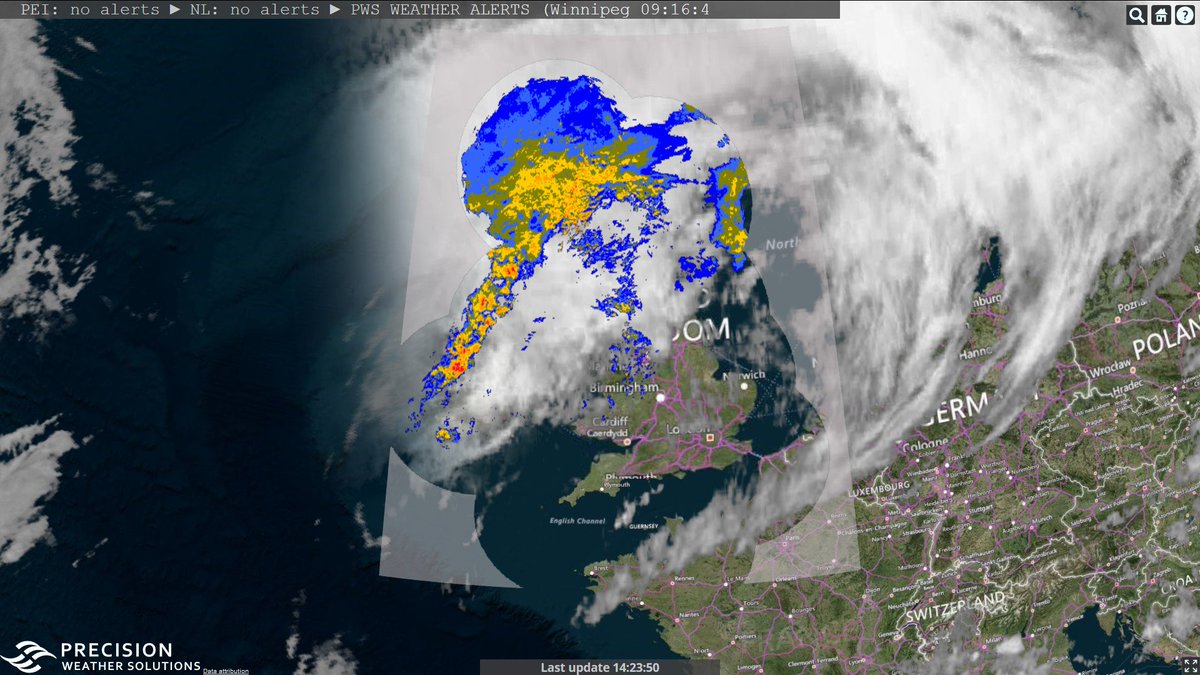
Sun Sep 16 16:41:46 +0000 2018Clouds inadvertently illustrating how weather radar coverage is distributed 🔗
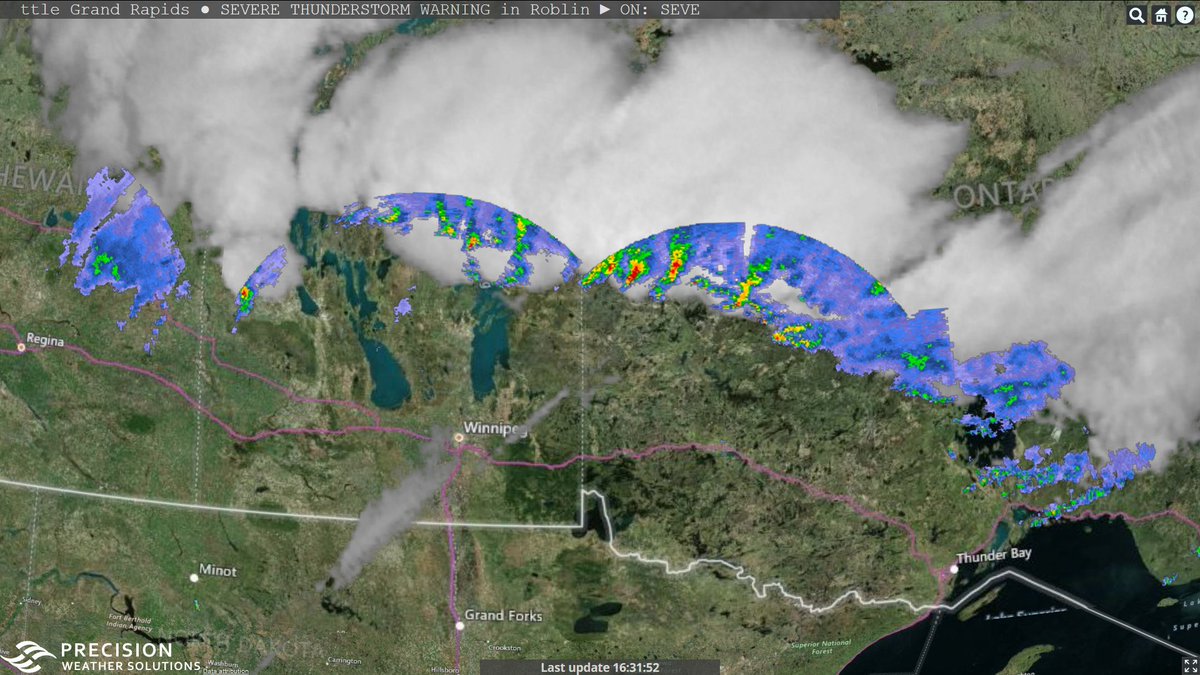
Sun Sep 16 14:52:23 +0000 2018@AlexUsherHESA They quietly dropped the "Don't" to coincide with the Mr. Robot premier.
Sun Sep 16 13:57:35 +0000 2018Ground station rainfall totals reported for the last 7 days in the Eastern US and Southeastern Canada 🔗
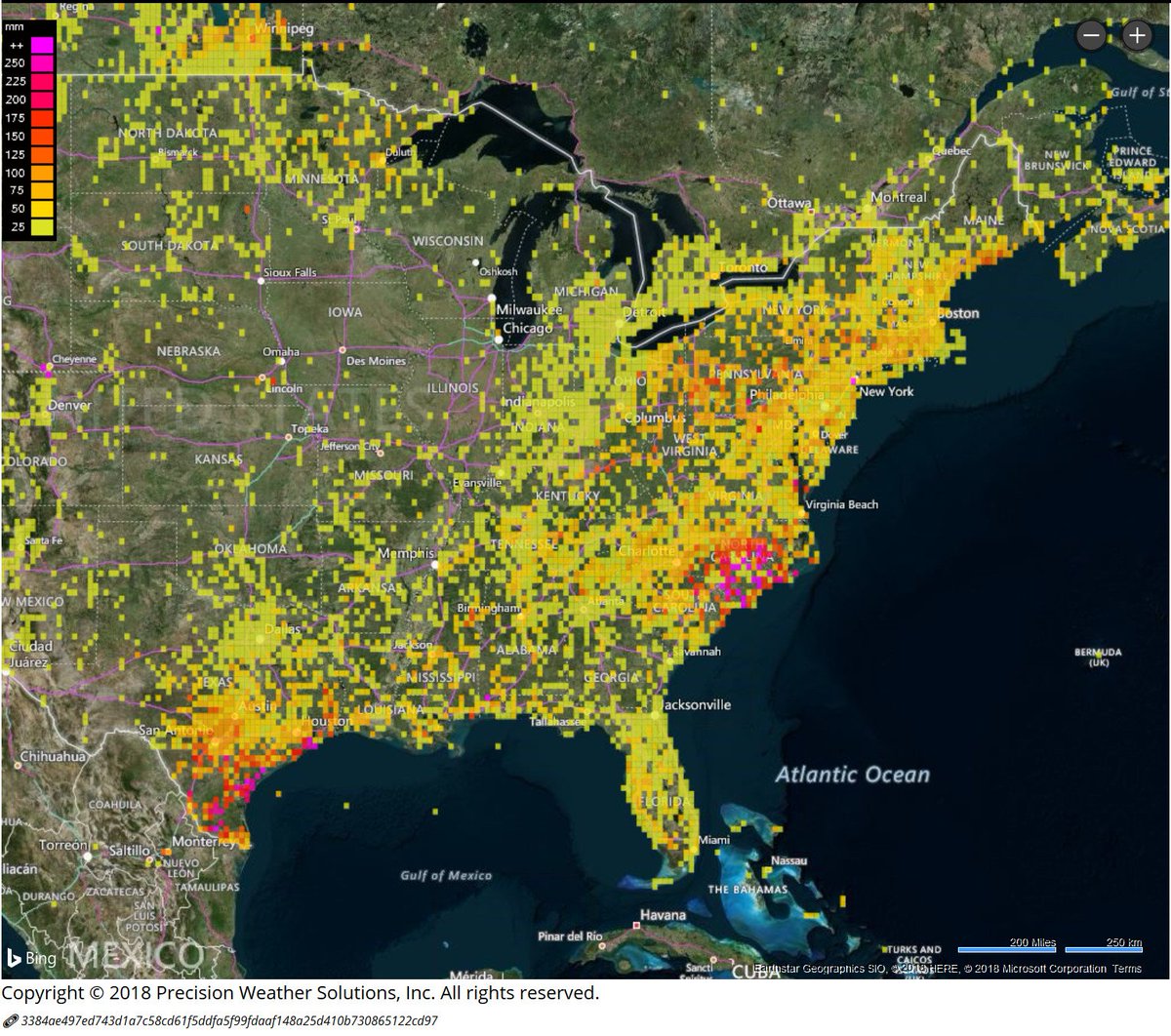
Sat Sep 15 16:10:36 +0000 2018@ScientistSaba BS begets BS in MS/MS.
Sat Sep 15 15:34:21 +0000 2018Still pretty stormy in the North Atlantic 🔗
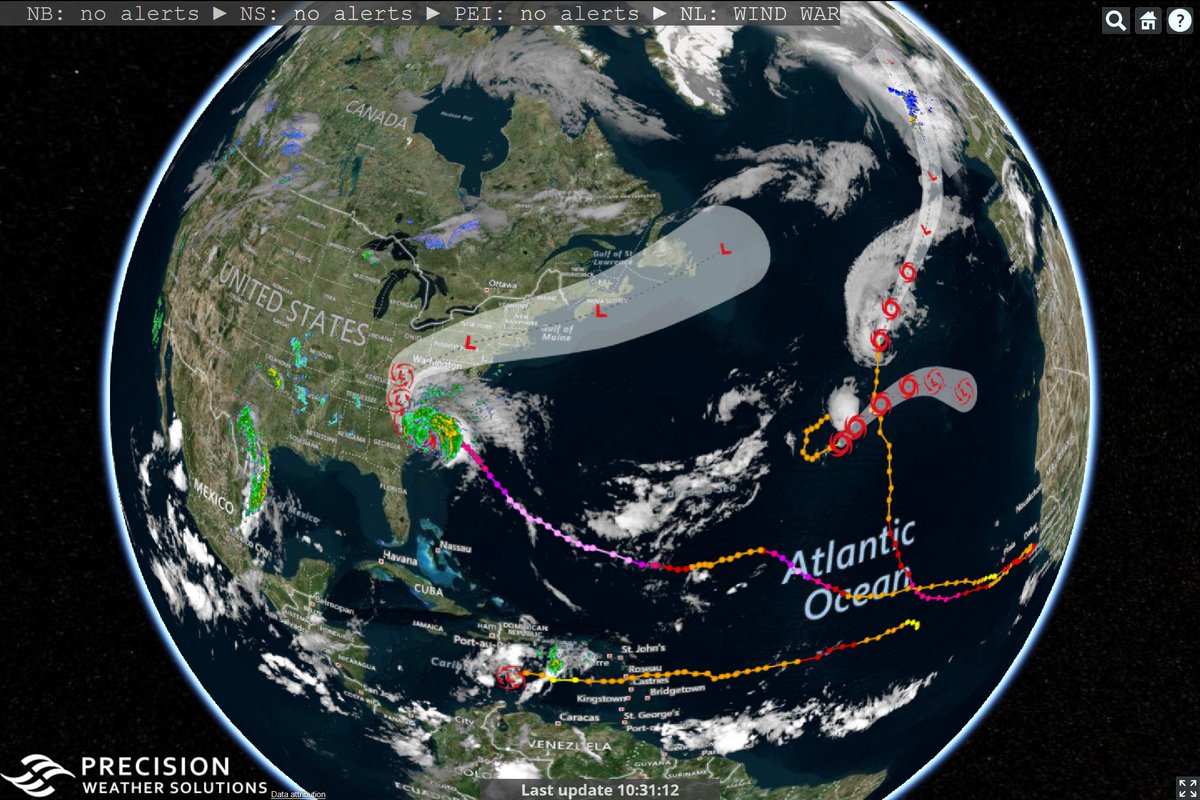
Sat Sep 15 13:48:03 +0000 2018Ground station rainfall in North American yesterday. Can you spot the hurricane? 🔗
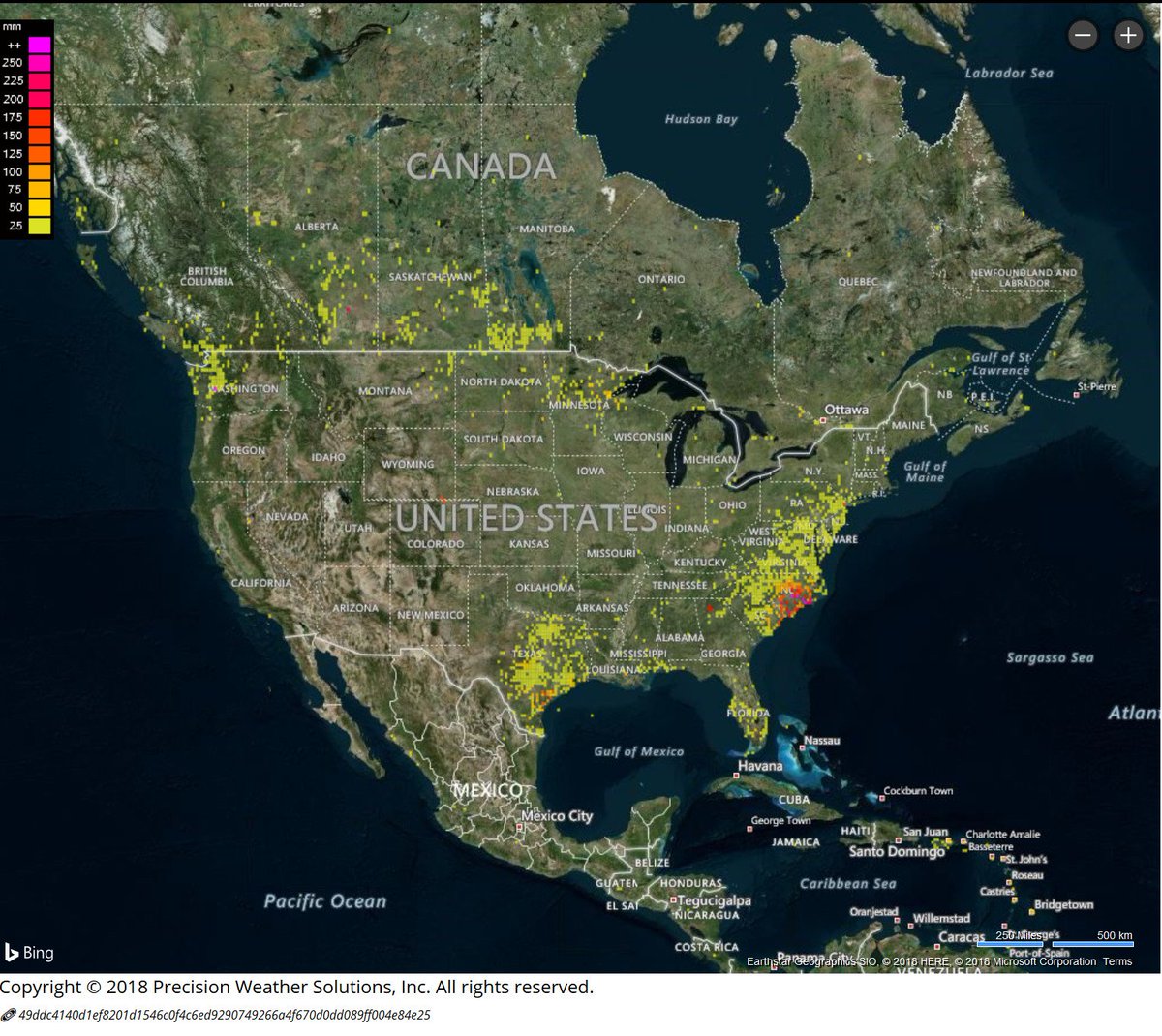
Sat Sep 15 13:36:19 +0000 2018Ground station rainfall measurements around Wilmington NC yesterday (Friday, Sept. 15), in millimeters. 🔗
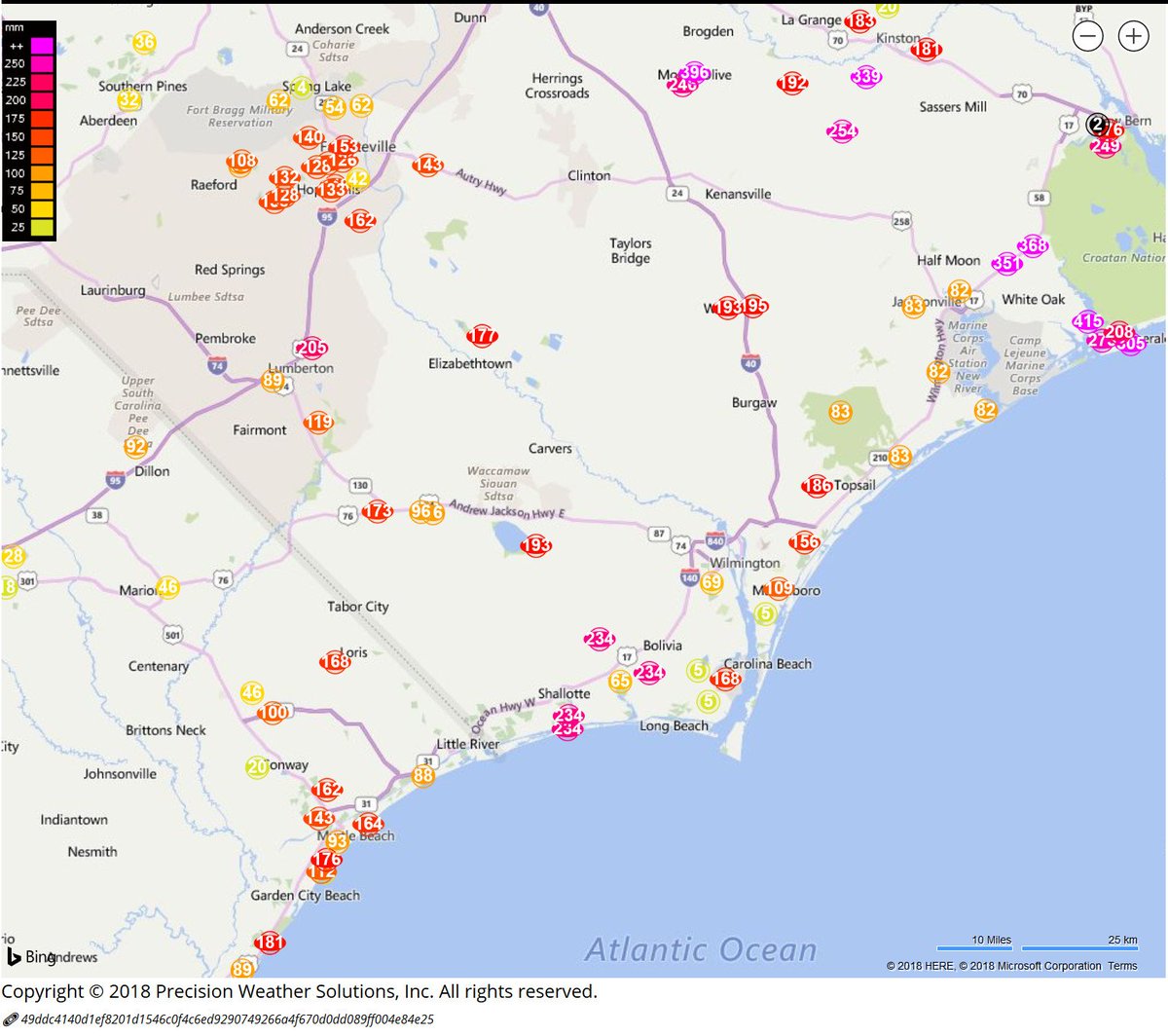
Fri Sep 14 15:20:02 +0000 2018A storm of storms ... 🔗

Fri Sep 14 15:15:45 +0000 2018@DonMartinCTV @globeandmail At least they are not the guys from the United People's Party of Canada 🔗 or the
People's Political Power Party of Canada 🔗 It makes be think Canadians are not very creative or love saying 'PP' in a party's name.
Thu Sep 13 20:25:43 +0000 2018And here is Hawaii, buried under Olivia 🔗

Thu Sep 13 15:34:32 +0000 2018Florence update 🔗
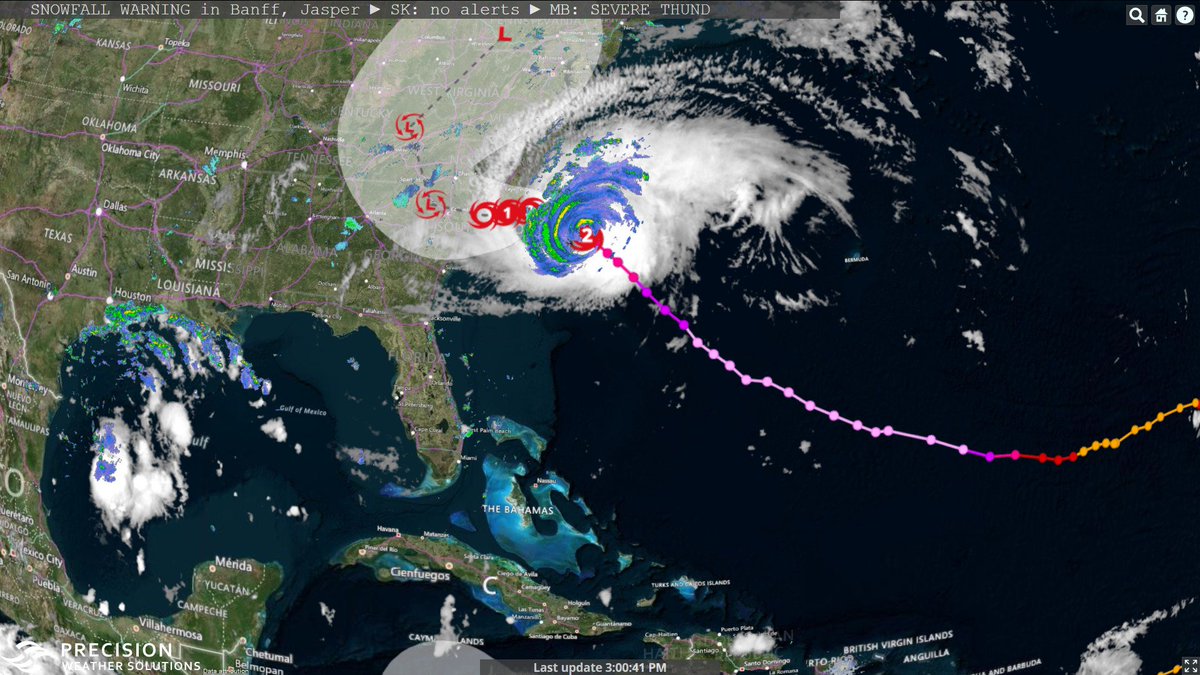
Wed Sep 12 18:02:45 +0000 2018More specifically ... 🔗

Wed Sep 12 17:53:41 +0000 2018The news (- DJT) for the next few days 🔗
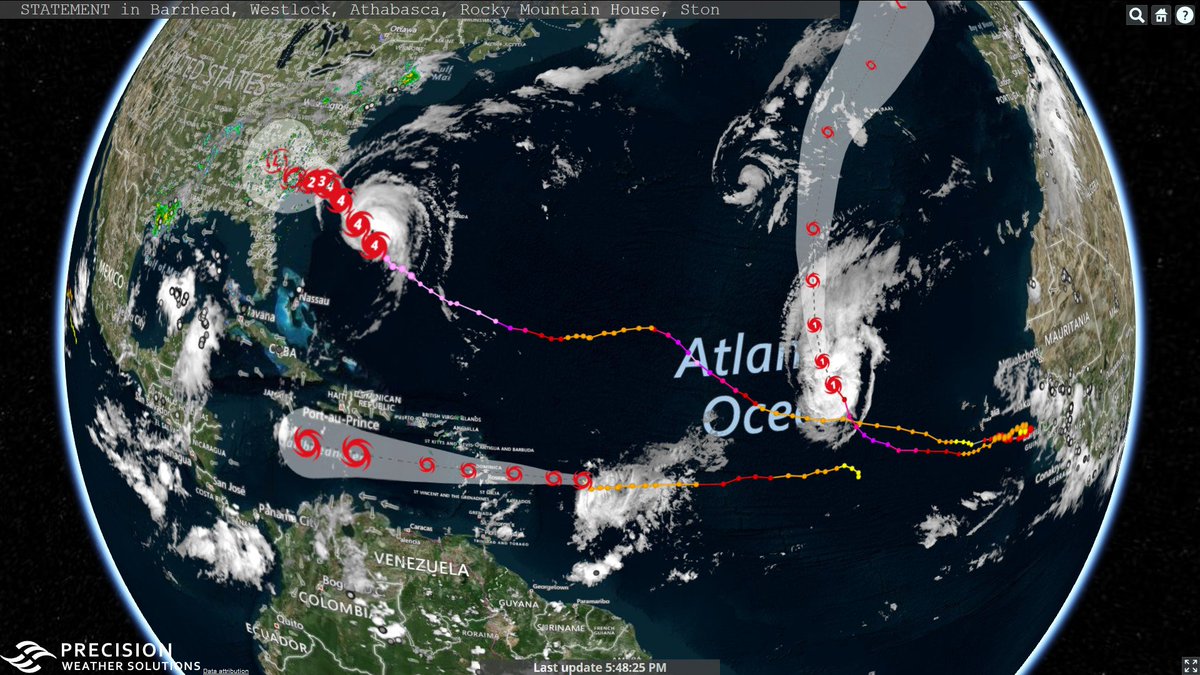
Tue Sep 11 13:19:11 +0000 2018@AlexUsherHESA They are just spitballing a replacement for the current Phoenix Tech Centre in Miramichi, which replaced the Long Gun Registry Tech Centre (same building). I would bet they are lobbying hard for a Cyber Defense Tech Centre to move in when Phoenix is finally mothballed.
Mon Sep 10 18:14:46 +0000 2018@InklessPW Bad year for proportion. We seem to be in the grips of an epidemic of sore winners ...
Mon Sep 10 15:59:49 +0000 2018One of those increasingly common occasions where politicians seem to be auditioning for a Monty Python skit rather than announcing policy:
🔗
Thu Sep 06 12:51:36 +0000 2018@zeynep Biomedical research has the same problem.
Wed Sep 05 16:05:06 +0000 2018It is oddly amusing to have my hobby to be described as a "large institutional initiative" 🔗
Mon Sep 03 19:13:41 +0000 2018@LindsayTedds I applied for and received a SRED credit. It was a complete waste of time for a small tech company. The US NIH SBIR/STTR program is a much better program in every conceivable way.
Sun Sep 02 14:43:31 +0000 2018@MikeTheBiochem If you are analyzing 1 spectrum at a time, the time to generate peptides dominates. Practical systems run many spectra simultaneously: the more spectra per run, the smaller the contribution of peptide generation to the overall run time as it is done only once.
Thu Aug 30 17:00:12 +0000 2018@adamcurry US Census Bureau trade stats with:
Canada 🔗
Mexico 🔗
China 🔗
Wed Aug 29 17:45:36 +0000 2018#PXD008914 does a surprisingly good job of isolating RNA-binding proteins from mESCs. If you are reanalyzing it, watch out for semi-tryptic & incompletely labelled peptides.
Tue Aug 28 21:17:16 +0000 2018@NCI_NCIP @theNCI @NCItreatment @NCICancerCtrl @NCI_CSSI The corresponding PRIDE proteomics data set PXD008832 still hasn't been released.
Mon Aug 27 15:15:27 +0000 2018#PXD010025 is a good example of how careful about your assumptions you must be when analyzing data from samples containing a lot of extracellular matrix.
Sat Aug 25 12:29:07 +0000 2018@UCDProteomics Q: How many human proteoforms are there?
A: Lots
Fri Aug 24 13:10:07 +0000 2018If pareidolia is the human tendency to see familiar patterns in images when none exists, I propose paradedomena as the human tendency to see familiar patterns in data when none exists.
Tue Aug 21 20:16:35 +0000 2018This is really a nice specification for a protocol 🔗 Very well written and sufficiently proscriptive to be useful.
Tue Aug 21 18:06:42 +0000 2018@UCDProteomics I'm always a little surprised when someone has a talk/poster/paper about a proteomics LIMS. Every proteomics lab is so different that any bespoke LIMS won't be useful to many other groups and any 'flexible' LIMS is so complicated that no one wants to use it.
Thu Aug 16 00:49:41 +0000 2018@UCDProteomics MALDI-TOF is the easiest for this type of screening.
Tue Aug 14 19:11:54 +0000 2018#PXD008478 & #PXD008473 are very good data sets that can be used by anyone interested in understanding how a larger-than-human vertebrate proteome (Oncorhynchus mykiss) affects statistics and spectra-peptide-protein matching process.
Mon Aug 13 18:02:52 +0000 2018@Scott_Gilmore @macleans The Panama Canal was opened in 1914.
Fri Aug 10 01:15:31 +0000 2018#PXD007906 is one of the more interesting data sets I've seen in a while: lots of uncirculated plasma proteins exactly as they were when they were secreted from hepatocytes (HepG2 in this case).
Tue Aug 07 14:43:46 +0000 2018I'm still on the fence about #PXD008127. I've analyzed a sample of 36 runs and some are good sets of HLA type I (TI) peptides, but most are mixtures of TI peptides and endogenous plasma peptides - in some cases with no discernible TI peptides at all.
Tue Aug 07 14:16:26 +0000 2018Got to get me one of these: 🔗
Fri Aug 03 16:22:58 +0000 2018Interesting little organism 🔗
Wed Aug 01 14:31:38 +0000 2018If you want to study the effects of unanticipated non-tryptic cleavage on a conventional proteomics experiment, #PXD007234 is the perfect dataset to examine.
Mon Jul 30 00:59:08 +0000 2018#PXD008057 Pacific oyster data is really interesting: who knew they had so much collagen 1, with so many modifications. Would have been better for me without the TMT, though.
Sat Jul 28 13:35:07 +0000 2018@CIHR_IRSC @NSERC_CRSNG @SSHRC_CRSH Specifically a Samsung Tab S2 (8.0) running Android 7.0 using Chrome to view the site. When I try to enter information, the area containing the questions goes blank and then resets to the original text and blank boxes.
Sat Jul 28 13:10:42 +0000 2018@CIHR_IRSC @NSERC_CRSNG @SSHRC_CRSH Questionnaire doesn't work with Android.
Thu Jul 26 13:48:25 +0000 2018It has an interesting graph: 🔗
Thu Jul 26 13:44:18 +0000 2018@cwcyau At least they are being upfront about it. I have had the same situation several times, but post grant approval where a "cut" imposed on the budget meant that the money for collaborators vanished.
Tue Jul 24 15:14:10 +0000 2018Why do simian retrovirus 4 proteins show up in some tumour tissue samples (particularly in exosome/secretome preps)?
Sat Jul 21 14:38:21 +0000 2018#PXD005945 is much better and more interesting than I thought it would be. Worth taking a look at if you are interested in using effective protein separations for high sensitivity proteomics. Good data for course work assignments, too.
Sun Jul 15 14:21:16 +0000 2018What does CHIA:p really do? I'm pretty sure it isn't a chitinase and it seems to generate significant artifacts in antibody-based histological mapping approaches.
Sun Jul 08 15:22:21 +0000 2018After looking at data from a lot of groups over the last 15 years, the most puzzling observation is that the most famous labs often produce really mediocre data, no where near the state-of-the-art in the field.
Fri Jul 06 15:52:13 +0000 2018Ha! Just what I thought 🔗
Thu Jul 05 14:28:41 +0000 2018I don't know if this really will be used to define protein names 🔗, but it sure defines "wishy-washy"
Thu Jul 05 12:23:47 +0000 2018@UCDProteomics Boy, I sure hope some one is working on that!
Wed Jul 04 16:20:45 +0000 2018@pwilmarth @dtabb73 Regardless of how accurate the estimates of p (or E) are for stochastic distributions, you end up being confounded by the fact that the only true solutions belong to the weird, little, completely deterministic, pocket universe of a species' protein sequences.
Wed Jul 04 16:06:21 +0000 2018Yup. That is the way it works 🔗
Wed Jul 04 15:03:14 +0000 2018@AlexUsherHESA @GlynDavisVC I won't argue the historical differences, but having been a prof at both UBC and U of M, there is now very little practical difference between them: big, rather dull, provincial bureaucracies that struggle with the notion of research.
Wed Jul 04 14:35:35 +0000 2018@dtabb73 sorry: 'well-calibrated' could be replaced by 'an' (I guess I've been away from academia for too long)
Wed Jul 04 14:33:40 +0000 2018@AlexUsherHESA @GlynDavisVC Why would MB not be in the Western Canadian category?
Wed Jul 04 14:31:50 +0000 2018@dtabb73 I'd remove the word "accurate" from the GF+ heading. It doesn't really mean anything in this context. "well-calibrated" could also be replaced by "a" without losing information.
Tue Jul 03 18:08:52 +0000 2018In proteomics, does "ultra-deep" mean:
Fri Jun 29 14:44:38 +0000 2018Don't know why are they using that bad Chick, et al. data set as an exemplar. You can look at most data sets and never find +Fe or the very high levels of carbamylation that were kind of a signature of that lab prior to this paper. 🔗
Fri Jun 29 14:11:14 +0000 2018Favorite quote from a bioxiv paper: "Proteome raw data can be downloaded from the PRIDE repository under the accession number XXX. scRNA‐seq raw data can be downloaded from the Gene Expression Omnibus under the accession number XXX"
Tue Jun 26 21:24:10 +0000 2018How well does MS1 quant software do with peptides that don't elute as symmetric peaks, e.g., 58 LGEHNIDVLEGNEQFINAAK 77 (porcine trypsin) or 2 EEEIAALVIDNGSGMCK 18 (mouse Actg1)?
Sat Jun 23 21:47:42 +0000 2018@ProteomicsNews for smartphones/tablets:
D⁺ = {bᵢ:ln(|bᵢ|/|aᵢ|)>1∧aᵢ∈A∧bᵢ∈B∧|aᵢ|>0∧bᵢ≠Ø}
D⁻ = {bᵢ:-ln(|bᵢ|/|aᵢ|)>1∧aᵢ∈A∧bᵢ∈B∧|aᵢ|>0∧bᵢ≠Ø}
D⁰⁺ = {bᵢ:|bᵢ|>0∧aᵢ∈A∧bᵢ∈B∧(|aᵢ|=0∨aᵢ=Ø)}
D⁰⁻ = {aᵢ:|aᵢ|>0∧aᵢ∈A∧bᵢ∈B∧(|bᵢ|=0∨bᵢ=Ø)}
Sat Jun 23 15:57:02 +0000 2018@ProteomicsNews This is the math for most protein/RNA/DNA quant omics experiments. It takes 1000's of code lines to do this analysis, involving 100's of choices & approximations. When I see something funny in these sets, I am uncomfortable unless I can go in to see why.
Sat Jun 23 15:49:16 +0000 2018@ProteomicsNews 𝕯⁺ = {bᵢ:ln(|bᵢ|/|aᵢ|)>1∧aᵢ∈𝓐∧bᵢ∈𝓑∧|aᵢ|>0∧bᵢ≠Ø}
𝕯⁻ = {bᵢ:-ln(|bᵢ|/|aᵢ|)>1∧aᵢ∈𝓐∧bᵢ∈𝓑∧|aᵢ|>0∧bᵢ≠Ø}
𝕯⁰⁺ = {bᵢ:|bᵢ|>0∧aᵢ∈𝓐∧bᵢ∈𝓑∧(|aᵢ|=0∨aᵢ=Ø)}
𝕯⁰⁻ = {aᵢ:|aᵢ|>0∧aᵢ∈𝓐∧bᵢ∈𝓑∧(|bᵢ|=0∨bᵢ=Ø)}
Sat Jun 23 15:47:32 +0000 2018@ProteomicsNews The math is a very high level abstraction of what is actually implemented in the code. If that is sufficient to make you comfortable, great.
Fri Jun 22 18:45:10 +0000 2018@MikeTheBiochem @UCDProteomics @ProteomicsNews @Krivera23 You are describing blackbox software: I tell you how I was hoping that it would work in very general terms and give you a simple test that confirms that idealization.
Fri Jun 22 17:40:35 +0000 2018@Krivera23 @UCDProteomics @ProteomicsNews But other than the code, how can a developer make software that is anything other than a black box?
Fri Jun 22 17:26:12 +0000 2018@UCDProteomics @ProteomicsNews @Krivera23 But I should add that proteomics abandoned that some time ago - I think the publication of the "Andromeda" paper in JPR marked the end of the open-source movement in proteomics.
Fri Jun 22 17:24:25 +0000 2018@UCDProteomics @ProteomicsNews @Krivera23 Dare I say open source?
Thu Jun 21 15:31:10 +0000 2018Buzzwords + wasted money = Canadian research policy: 🔗
Wed Jun 20 01:52:55 +0000 2018@dtabb73 Especially when that concentration may be zero.
Wed Jun 20 01:51:23 +0000 2018@dtabb73 Unless they can also accurately predict the concentration of the resulting polypeptides, the raw gene/orf count isn't very valuable.
Tue Jun 19 17:01:12 +0000 2018@AlexUsherHESA "Quantum" means the smallest difference possible (e.g., a photon or the charge on an electron). I realize that it is often misused as mean a large change, but the physics-pedant in me always cringes when I it being used that way.
Tue Jun 19 14:25:04 +0000 2018🔗
Thu Jun 14 17:40:14 +0000 2018@pwilmarth @UCDProteomics What is the favorite data format for biomedical researchers:
Mon Jun 11 17:48:12 +0000 2018@jwoodgett @Dr_Lori_Burrows @DocDellaire I don't disagree. Canadian research has been handicapped by gov. policy for at least 20 years. But CIHR + CFI get about ~ CA$2 billion/year. The NIH gets ~ CA$48 billion/year. So a 1:15 install ratio would be a bit better than expected.
Mon Jun 11 16:19:32 +0000 2018@jwoodgett @Dr_Lori_Burrows @DocDellaire Not really sure what sort of point you are trying to make. However, in terms of expensive research equip, Canada tends to have about 1 install for every 15-20 installs in the US. So a CA:US ratio of 3:50 sound about right.
Mon Jun 11 14:41:28 +0000 2018@jwoodgett @Dr_Lori_Burrows With the inclusion of Vancouver, the map reflects the distribution of all expensive biomedical research gear in Canada. Placing this type of equip in Toronto, Montreal and Vancouver has been government policy for almost 20 years & it has worked.
Wed Jun 06 23:13:34 +0000 2018@CostinAntonescu @jwoodgett >drop database ccv;
would be more cost effective.
Wed Jun 06 15:32:00 +0000 2018@lkpino @Pdorrestein1 @drzoomie @UCSanDiego @proteome_sw Data reanalysis is something that data generators in proteomics genuinely dislike and distrust: suggesting that it would motivate anyone to deposit data is psychological projection on the part of the repository advocates.
Wed Jun 06 14:20:06 +0000 2018#PXD007826 has some really nice chromatography and good reproducibility 🔗 A bit more carbamylation than I like to see, but not to a level that would adversely effect the analysis.
Mon May 28 19:22:00 +0000 2018@Debstermistress @IvisonJ I guess I shouldn't be surprised, but googling the quote generates Budget 2018 as the top hit.
Mon May 28 14:07:07 +0000 2018The NOAA public MADIS site is slow again today - problem started a little after midnight UTC
Tue May 22 13:18:45 +0000 2018#PXD002121 (from 2015, 🔗) still holds up as one of the truly great proteomics data sets
Sun May 20 16:55:17 +0000 2018# PXD008199 good data set if you are interested in mouse saliva
Sat May 19 21:09:55 +0000 2018It is possible that LCYVALDFEQEMATAASSSSLEK is the peptide with the most aberrant behavior in RP-HPLC.
Sat May 19 21:03:31 +0000 2018@AlexUsherHESA A way of life?
Sat May 19 21:02:22 +0000 2018#PXD008726 flamboyantly carbamylated, but great cysteine recovery.
Tue May 15 16:54:17 +0000 2018🔗 really describes how not to design a data repository: adding in too many requirements. Each one is reasonable enough on their own, but together they become an impossible-to-implement set of requirements.
Tue May 15 16:49:07 +0000 2018The biggest problem with data repositories is that people really don't like to use them.
Sun May 13 13:45:44 +0000 2018Ducks I've seen this year that are unusual (to me) on the Red River of the North:
Greater scaup
Redhead
Blue headed mallard
Thu May 10 14:22:56 +0000 2018#PXD006109 is the last time I ever look at data from a Nat. Methods paper. What a waste of time!
Wed May 09 18:48:10 +0000 2018@PreOmics @ProteomicsNews I'll be very interested to see how well the claims hold up to an unbiased analysis.
Mon May 07 12:26:03 +0000 2018@AlexUsherHESA Competitive salary and opportunity for advancement might be worth a try.
Fri May 04 17:13:48 +0000 2018#pallister #mbpolitics Just when you are sure you've heard the stupidest thing a politician could possibly say, you get proven wrong by a new stupidest statement: 🔗
Wed May 02 21:33:08 +0000 2018Amen, brother. I lived in Germany for a while & it is almost impossible to get Canadians to comprehend how different an attitude Germans have towards jobs like carpenter or bank teller. 🔗
Mon Apr 30 20:34:20 +0000 2018@ColleenDerkatch For the large dollar value grants, often the delay is associated with getting a Minister to the appropriate location for a local media event.
Wed Apr 25 21:19:26 +0000 2018@jwoodgett Its available on Sci-Hub
Tue Apr 24 19:09:07 +0000 2018@UAlberta An alternate title for the letter would be "A defense of stubbornness: why my opinion matters the most"
Tue Apr 24 17:27:46 +0000 2018Using Let's Encrypt to supply certificates for HTTPS sites has been the only satisfactory experience I've ever had working with HTTPS setups. Both Linux and Windows.
Mon Apr 23 20:28:24 +0000 2018drupalgeddon2? 🔗
Fri Apr 20 16:49:34 +0000 2018@jwoodgett @CIHR_IRSC Unfortunately they will have trouble getting anyone good interested in the job with the stated salary range. Especially in Ottawa.
Fri Apr 20 16:14:54 +0000 2018Got to love the patent office: 🔗 Nothing creepy about this one.
Thu Apr 19 22:03:15 +0000 2018The Brave browser really seems to be a significant advance, at least the desktop version that I've been using.
Thu Apr 19 19:06:36 +0000 2018In searching Twitter for "weather", it is surprising how many people cannot spell "whether".
Thu Apr 19 14:28:46 +0000 2018#PXD008840 has got to be the most interesting large scale cancer proteomics data set ever produced. A very preliminary analysis is available at 🔗
Thu Apr 19 14:23:38 +0000 2018One of the many things currently hard to find in Canada 🔗
tweets = 672